Curious about how to put together a unit study? Join me as I take you through my process for putting together a unit study for Ancient Egypt. Much of the process is the same for all my history units, and only varies slightly for other units. I use a Waldorf curriculum as a default curriculum but often stray from the curriculum and come up with my own lesson plans.
Here’s what I do:
- First: Decide on a topic (usually pretty broad like Middle Ages, Math, Ancient Rome, but you can be specific)
- Second: Gather material (I can check my curriculum, my home library, or begin a wishlist of materials needed)
- Third: Put together a Wishlist (this includes all the material I want for the unit)
- Fourth: Shop & receive (since we are with a charter school, I usually buy online with school funding, otherwise, check libraries and ask friends for material)
- Fifth: Sort through material and figure out how long each book/project will take
- Sixth: Make a lesson plan
- Optional: Add field trips as needed
What I look for in a History Unit are books on the following:
- History (actual historical events like wars, rulers and other events)
- Culture (how people lived, dressed, where they lived, what they ate, etc.)
- Mythology or religion
- Biographies
- Historical Fiction
- Activity Book
- I also look for kits, projects and hands-on activities. I like buying them as kits, but also love to make projects on my own, too.
I get most of my supplies for many of my units from Rainbow Resource.
Week 1
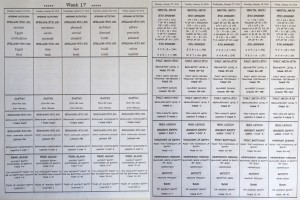
Our lesson plans include our daily lessons and our Ancient Egypt Main Lesson. Our Ancient Egypt Main Lesson is scheduled for 7 weeks, with the last week being a light load to account for any work that wasn’t completed. Most books listed were read aloud. Some took weeks to complete. Occasionally, I assign reading material to my students. It depends on their reading level and the type of book. I usually assign reading material for Main Lesson Blocks starting around grade 5 or grade 6. It may include historical fiction or something engaging. I added some new materials we used for our latest Ancient Egypt Main Lesson Block (winter 2024). One of our favorite additions is the Professor Noggin’s Trivia Game for Ancient Civilizations. I also included some books that work for various ancient civilizations. Each week you will see one book shown in the photos and added to the resource list that is not included in our original lesson plans from 2016 (pictured with each week). All About Time A First Look at Time and Clocks shows the history of time and time keeping tools. The books starts in ancient times and concludes with modern clocks and timepieces.


Resources for Week 1
- Ancient Egypt (Mysteries of History)
- You Wouldn’t want to be an Egyptian Mummy! By David Stewart (Scholastic Books)
- Tales of Ancient Egypt by Roger Green (Puffin Classics)
- The Pharaohs of Ancient Egypt by Elizabeth Payne ( Landmark Books)
- Mummies Made in Egypt by Aliki (Harper Collins)
- Ancient Egypt (DK Eyewitness)
- Mummy Mazes By Don Oliver Matthies
- Project: Our Amazing Mummies by Scientific Explorer
- Professor Noggin’s Trivia Game for Ancient Civilizations
- All About Time A First Look at Time and Clocks
- Excavation Dig Kit for Kids Egyptian Mummy Toy 6 Styles to Collect
Week 2
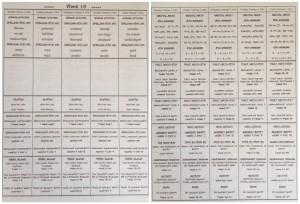
When working with multiple children, I chose resources that will appeal to some more than others; however, I have seen that all children will be intrigued by picture books to some degree. When homeschooling a middle schooler with younger siblings, I include picture books aimed at elementary age level that will be of interest to my KG-5th graders. What happens is my older students (up to 8th and rarely 9th grade) will join us and listen and sometimes look at the book and its pictures. And sometimes I find that no one is looking at the book, but all are listening and playing. Actually play was often a characteristic feature of our homeschooling. Included in this week’s photo is the book How Science Works Time The Measuring of Time-From the Egyptian Calendar to the Atomic Clock. While this book was not part of our lesson plans back in 2016, it is a book I refer to when doing the Ancient Civilizations blocks in Year 5 when we cover the ancient civilizations of Ancient Persia, Ancient India, Ancient Mesopotamia, Ancient Egypt, Ancient Greece and the civilization of Rome.
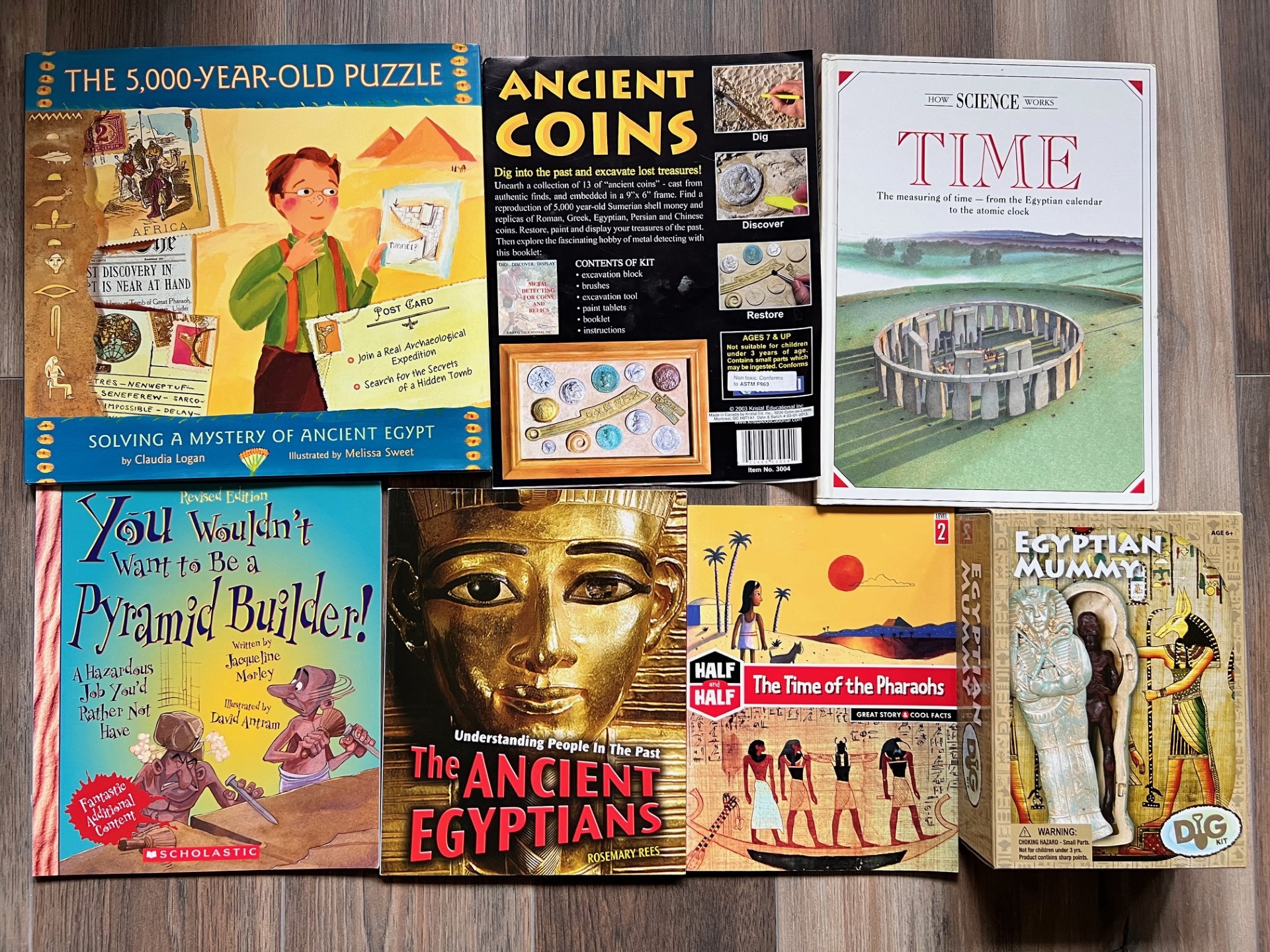
Resources for Week 2
- The 5,000-Year-Old Puzzle: Solving a Mystery of Ancient Egypt
- You Wouldn’t want to be a Pyramid Builder by Jacqueline Morley (Scholastic Books)
- Tales of Ancient Egypt
- The Pharaohs of Ancient Egypt by Elizabeth Payne ( Landmark Books)
- The Ancient Egyptians by Rosemary Rees
- DK Eyewitness Books: Ancient Egypt: Explore the Nile Valley Civilizations
- Dig Discover and Display: Ancient Coins Excavation Kit
- Egyptian Mummy Dig Kit
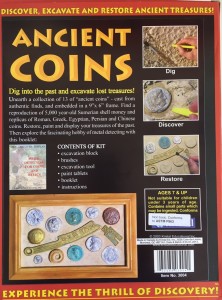
Week 3
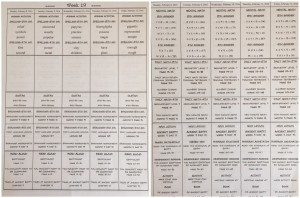
What happens when you can’t find the books I’ve suggested? Get books that are similar that are available. I love picture books and when it comes to Ancient Egypt, there are many choices. There are also cookbooks, hieroglyphic projects, kits and more. If the titles and project kits are only available via third party retailers or on auction sites, try browsing Rainbow Resource for the latest titles and kits that are available. While I used that vendor extensively for several years, in later times, I browsed other book retailers and reused many resources I already owned.
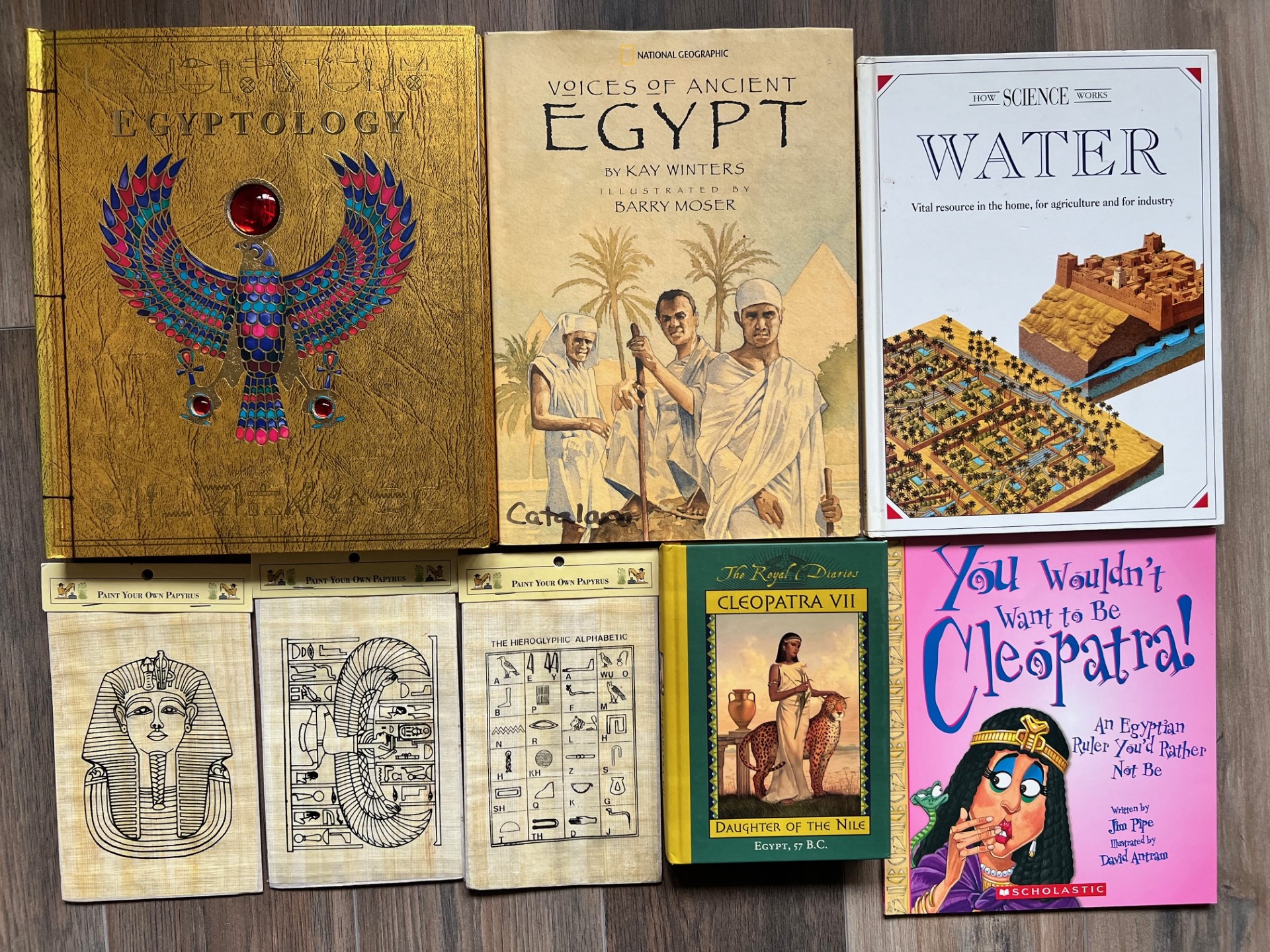
Week 3 Resources
- Egyptology: Search for the Tomb of Osiris
- You Wouldn’t want to be Cleopatra! by Jim Pipe (Scholastic Books)
- Tales of Ancient Egypt
- The Pharaohs of Ancient Egypt by Elizabeth Payne ( Landmark Books)
- The Ancient Egyptians by Rosemary Ree
- Ancient Egypt – King Tut Tomb Tile (Hands on History Pottery Kits) by Art in History
- DK Eyewitness Books: Ancient Egypt: Explore the Nile Valley Civilizations
- Winged Isis (Paint Your Own Papyrus)
- Winged Scarab (Paint Your Own Papyrus)
Week 4:
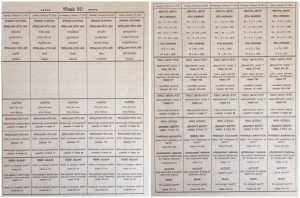
This is the first unit we completed somewhat on schedule and by reading all the books we planned. That felt good in the moment but here are my reflections from 2016 and new ones in 2024 as I write this. Firstly, in 2016 when I did this unit with 2-3 children, I used an abundance of resources and found a fair amount of redundancy as we read book after book on the same general topics. At first, I used it as an opportunity to ‘quiz’ my children by asking them to complete the sentence or ask them questions about the content because they had already learned it. It worked out great and offered ‘in-lesson’ opportunities to review material. After 8 years and having done Ancient Egypt twice in that time for a total of 4 times (the first time being in 2011), my current reflections are these: if your goal is to do a unit study for multiple children and take your time reading books and doing projects, this approach detailed in this post will help you reach your goal. If your goal is to study the ancient culture of Egypt in year 5 using a Waldorf or Waldorf inspired approach, then wittle the resources down to a book on the ancient mythologies of Egypt, some resources detailing the clothes, food, geography and culture of the time, a few hands on projects (and if kits are not available, I recommend making papyrus and building a pyramid from clay), and adding some recipes if possible. Bonus for adding picture books to your opening activities, but that’s not ‘Waldorf’, picture books are just a love of mine. Which approach did my children like better? I can’t tell which they liked better, but I can tell you the unit study approach with lots of hands-on projects, lots of recipes and too many books has created some fond memories for my children they still talk about and remember almost a decade later.


Week 4 Resources
- Food and Cooking in Ancient Egypt by Clive Gifford
- The Ancient Egyptians by History Opens Windows
- Tales of Ancient Egypt
- The Pharaohs of Ancient Egypt by Elizabeth Payne ( Landmark Books)
- The Ancient Egyptians by Rosemary Ree
- DK Eyewitness Books: Ancient Egypt: Explore the Nile Valley Civilizations
- Ancient Egyptians and their Neighbors by Marian Broida
- Ancient Egyptian Pyramids Dig Kit Gem Excavation
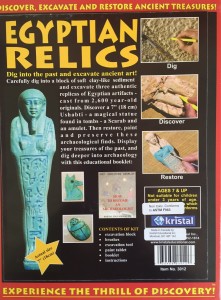
Week 5
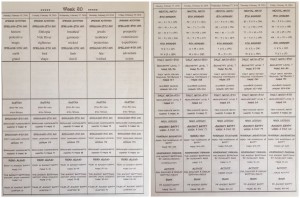
Can you complete this unit in 3 weeks? The only times I’ve completed a main lesson block in 3 weeks is when I’ve scheduled it for 1 week! If you had to choose just 5 books/projects for this unit, I would suggest: 1-2 picture books, 1 book on Egyptian mythologies, 1 cookbook, 1 book on general culture, geography, clothing, and 1 project like building the pyramids from clay if you couldn’t find an excavation project. In that case, you could probably finish the unit in 3 weeks. Be sure to make your main lesson book complete with drawings (or watercolors) and narrations for each lesson.


Week 5 Resources
- Food and Cooking in Ancient Egypt by Clive Gifford
- 24 Hours in Ancient Egypt: A Day in the Life of the People Who Lived There (24 Hours in Ancient History)
- Fun with Hieroglyphs by Catherine Roehrig
- Science in Ancient Egypt By Geraldine Woods
- Ancient Egyptians and their Neighbors by Marian Broida
- DK Eyewitness Books: Ancient Egypt: Explore the Nile Valley Civilizations
- Papyrus Paper 13×17 Inches (35x45cm) Set of 10 Egyptian Scroll Paper Sheets
- Egyptian Alphabet – Draw the Hieroglyphs!
- Ancient Egypt for Kids: A Captivating Guide to Egyptian History, from the Early Dynastic Period through the Early, Middle, and Late Kingdom to the Death of Cleopatra
- Ox, House, Stick: The History of Our Alphabet
- Food and Cooking in Ancient Egypt (Cooking in World Cultures)
- Tutankhamun’s Funeral
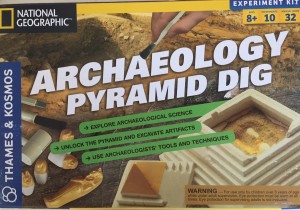
Week 6
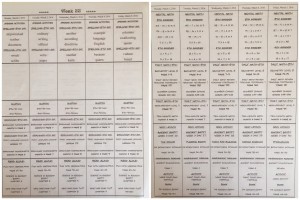
When planning this unit, I found two museums to visit. One is a permanent museum in Northern California called the Rosicrucian Museum, and the other was a traveling exhibit at a museum in Los Angeles. Aside from visiting the ancient pyramids in Giza, Egypt, you may consider finding an exhibit or museum to visit. When visiting museums or planning any field trip related to a main lesson block or unit study, you have three choices as to when to visit: before, during or after, and each has its own benefits. Going before is like getting a full dose of inspiration for a unit. It can be the excitement and encourage needed to start a new unit. And then as you begin the unit, you may refer back to exhibits for context or reference. The experience is lasting and impactful. If you go during the unit, it’s a nice way to re-invigor a unit that’s gotten a bit stale or drawn out. If you place it accordingly, you may have the opportunity to use it to enhance lessons or get more out of your visit because you’ve studied the material and seeing the exhibits are more meaningful because you have been educated on the material. Your connection to the experience is deepen. If you go after the unit is complete, you are leaving an experience that is hopefully highly anticipated which may be the motivation to get through to the end of a unit, which in my experience seems to be a bit challenging at times when we are wrapping up all our narrations. Then once you attend the museum or field trip, you have greater excitement seeing all the things you’ve studied. It’s like finding treasure.
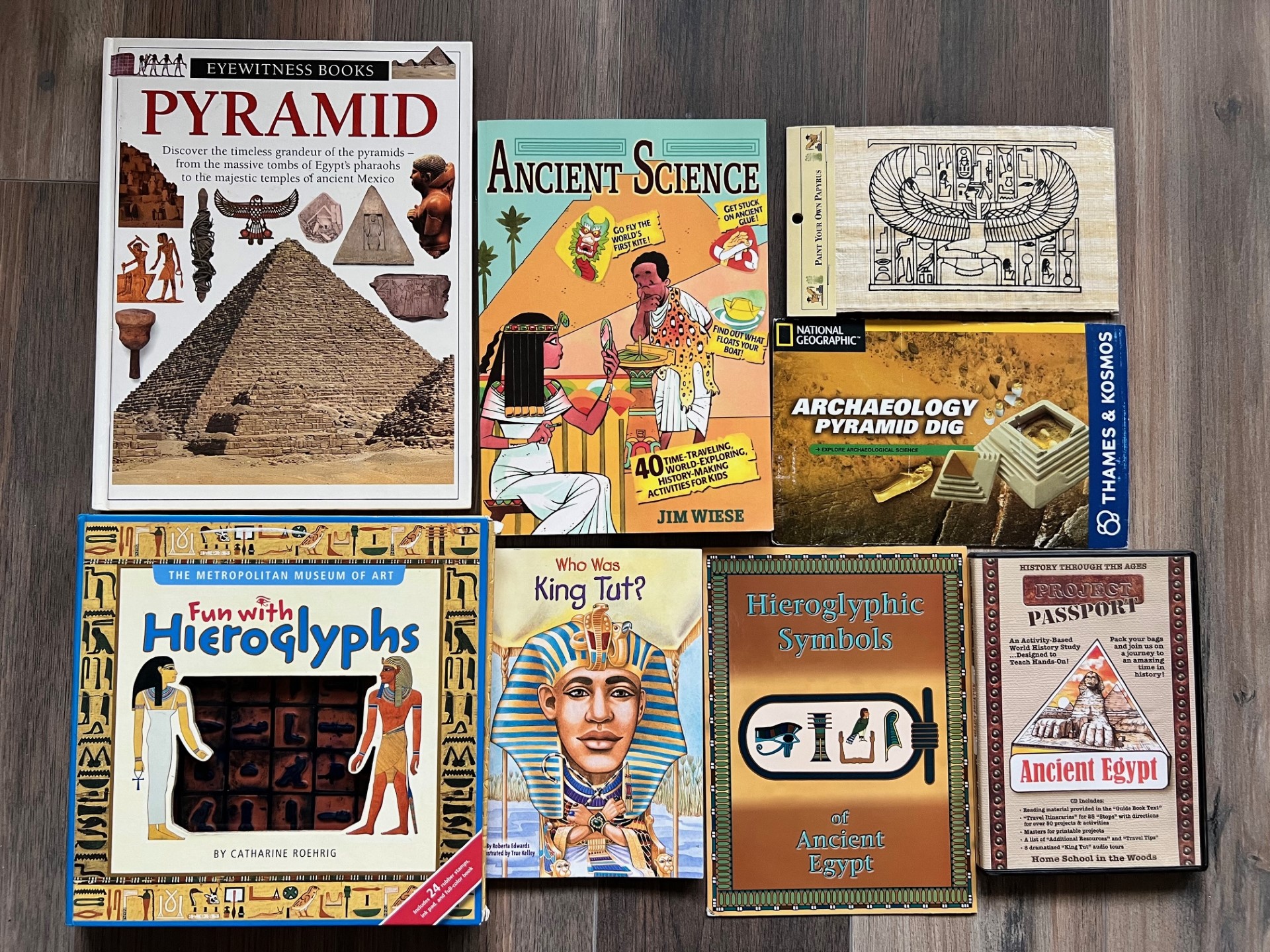
Week 6 Resources
- Learn to Read and Write Secret Messages in Ancient Egyptian Hieroglyphs
- Project: Archaeology Pyramid Dig by National Geographic and Thames & Kosmos
- Fun with Hieroglyphs by Catherine Roehrig
- Who Was King Tut? By Roberta Edwards
- Eyewitness Pyramid
- Ancient Civilizations Reproducible workbook by McDonald
- DK Eyewitness Books: Ancient Egypt: Explore the Nile Valley Civilizations
- Bastet Cat (Paint Your Own Papyrus)
- Paint Your Own Papyrus Set of 6
- Make Your Own Papyrus
- Maze Craze Mummy Mazes
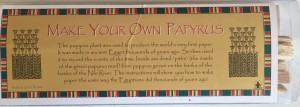
Week 7
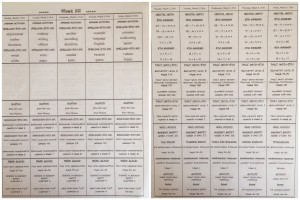
How do you test or quiz your students to make sure they’ve learned? If you wish to make a test or copy a quiz, you may do so. While I haven’t utilized tests and quizzes or worksheets for main lessons (I use them for daily proficiency work), I do insist on a creating a main lesson book or similar (one year for astronomy we made an interactive journal with moveable parts). In our main lesson books, we write and draw for each lesson. While I would love to have a main lesson daily, realistically that doesn’t happen. A main lesson includes opening activities, review work, lesson activity, lesson work and finally the new lesson. The lesson activity may be the project we are working on and the lesson work would be the writing and drawing for that lesson.
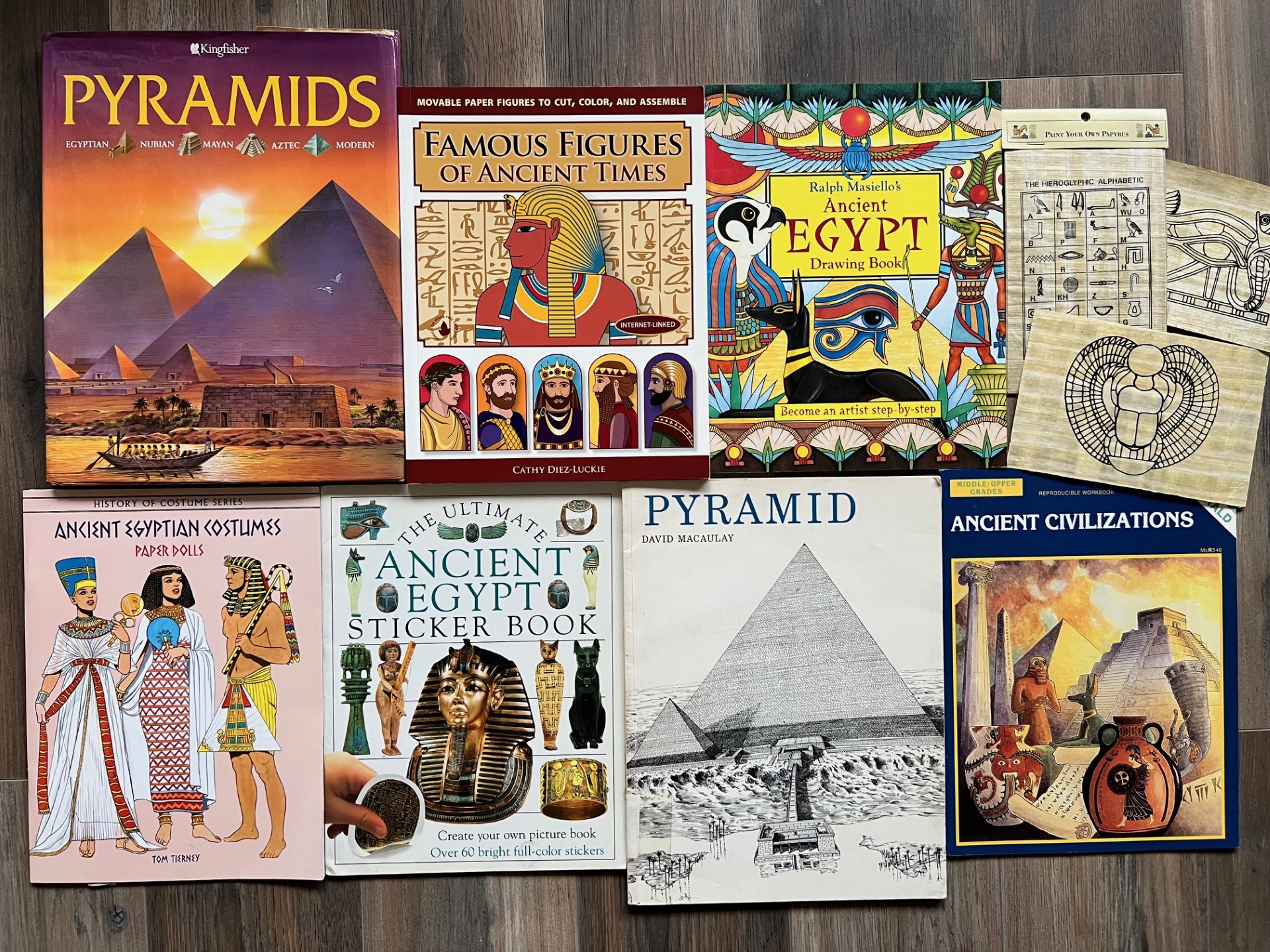
Resource Guide
- Who Was King Tut? By Roberta Edwards
- Eyewitness Pyramid
- Ancient Civilizations Reproducible workbook by McDonald
- DK Eyewitness Books: Ancient Egypt: Explore the Nile Valley Civilizations
- Bastet Cat (Paint Your Own Papyrus)
- Pharaohs and Foot Soldiers: One Hundred Ancient Egyptian Jobs You Might Have Desired or Dreaded (Jobs in History)
- Time of the Pharaohs By Great Story & Cool Facts
- Ancient Egyptian Costumes by History of Costume Series
- Ancient Egypt by Ralph Masiello
Chalk Drawings
Chalk drawings have been part of our homeschool vibe for many years, but this unit, I did something different that I liked much better. Instead of doing one big chalk drawing on our 4’x6′ chalkboard, I did 6 smaller ones on our mounted chalkboards which I like better because the quality of these small chalkboards (which are no longer available), hold the chalk better. If you wish to follow along, I encourage you! And if chalk drawings and chalkboards are not your thing, you may try one of these alternatives: do a chalk drawing on a large sheet of paper (I find most paper is suitable, just use a matte fixative to protect your work and keep it from smearing), or do a drawing of your choice on the same format as your children’s. Sometimes I find it easier to work alongside my children because they are typically working on white paper while I’m working on black chalkboard. Sometimes highlights and lowlights don’t translate well from chalkboard to paper and children may despair at not being able to reproduce the same work.
Map | Chalk Drawing | Ancient Egypt
For our Ancient Egypt unit study, we did a series of chalk drawings for our main lesson books. I drew a scene on the chalkboard, then the kids drew it in their main lesson books. We use a Waldorf inspired curriculum using the main lessons as our unit studies. Chalk boards, Sargent Art Chalk Pastels, main lesson books and color pencils can be found at Waldorf Supplies. Inspiration for drawings came from History Opens Windows: The Ancient Egyptians by Jane Shuter, Ralph Masiello’s Ancient Egypt Drawing Book, and Mysteries of History Ancient Egypt by AZBooks. All books can be found at Rainbow Resource. We use a Waldorf inspired curriculum from Live-Education. We use the main lessons as our unit studies. We read passages from Living Books (Charlotte Mason educational philosophy), followed by chalk drawings, narrations, and hands-on projects. All books can be found at Rainbow Resource if Still available. See more videos in this series: Main Lesson Book video, How to Make a Main Lesson Book, and How to Make a Pencil Case.
Duration: drawings usually take 20-40 minutes
Level: Intermediate (the drawing book really helped achieve success with this drawing)
Cost: Less than $20 for all supplies that are reusable
My Reversible mobile chalk/dry erase board is 6’x4′ and is made of slate. Smaller chalkboards can be found at Waldorf Supplies.
Shaduf and Papyrus Boat | Ancient Egypt | Chalk Drawing
For our Ancient Egypt unit study, we did a series of chalk drawings for our main lesson books. I drew a scene on the chalkboard, then the kids drew it in their main lesson books. We use a Waldorf inspired curriculum using the main lessons as our unit studies. Chalk boards, Sargent Art Chalk Pastels, main lesson books and color pencils can be found at Waldorf Supplies. Inspiration for drawings came from History Opens Windows: The Ancient Egyptians by Jane Shuter, Ralph Masiello’s Ancient Egypt Drawing Book, and Mysteries of History Ancient Egypt by AZBooks. All books can be found at Rainbow Resource. We use a Waldorf inspired curriculum from Live-Education. We use the main lessons as our unit studies. We read passages from Living Books (Charlotte Mason educational philosophy), followed by chalk drawings, narrations, and hands-on projects. All books can be found at Rainbow Resource if Still available. See more videos in this series: Main Lesson Book video, How to Make a Main Lesson Book, and How to Make a Pencil Case.
Duration: drawings usually take 20-40 minutes
Level: Intermediate (the drawing book really helped achieve success with this drawing)
Cost: Less than $20 for all supplies that are reusable
My Reversible mobile chalk/dry erase board is 6’x4′ and is made of slate. Smaller chalkboards can be found at Waldorf Supplies.
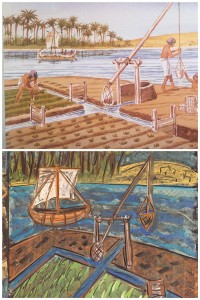
Queen Nefertiti | Ancient Egypt | Chalk Drawing
For our Ancient Egypt unit study, we did a series of chalk drawings for our main lesson books. I drew a scene on the chalk board, then the kids drew it in their main lesson books. Each drawing accompanies an narrative entry based on a lesson we did for this unit. We use a Waldorf inspired curriculum using the main lessons as our unit studies. We read passages from Living Books (Charlotte Mason educational philosophy), followed by chalk drawings, narrations, and hands-on projects. Chalk boards, Sargent Art Chalk Pastels, main lesson books and color pencils can be found at Waldorf Supplies. Inspiration for drawings came from History Opens Windows: The Ancient Egyptians by Jane Shuter, Ralph Masiello’s Ancient Egypt Drawing Book, and Mysteries of History Ancient Egypt by AZBooks. All books can be found at Rainbow Resource. Duration: drawings usually take 20-40 minutes. Level: Intermediate (the drawing book really helped achieve success with this drawing). Source information on Queen Nefertiti came from Landmark Books The Pharaohs of Ancient Egypt by Elizabeth Payne.
Inspiration for drawings came from these books:
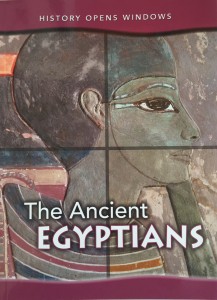
History Opens Windows: The Ancient Egyptians by Jane Shuter
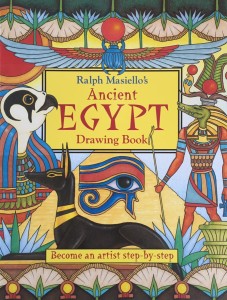
Ralph Masiello’s Ancient Egypt Drawing Book
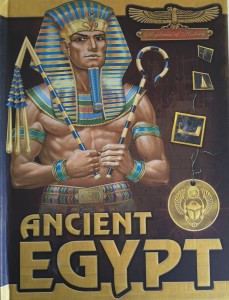
Mysteries of History Ancient Egypt by AZBooks
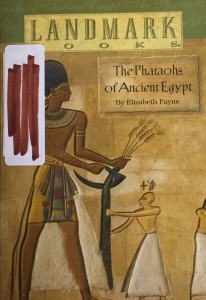
Source information on Queen Nefertiti came from Landmark Books The Pharaohs of Ancient Egypt by Elizabeth Payne.
All books can be found at Rainbow Resource.
Don’t know what a main lesson book is? I’ll show you what a main lesson book is and how to make a main lesson book. Want to learn how to make a pencil case for your color pencils? I can show you how!
Duration: drawings usually take 20-40 minutes
Level: Intermediate (the drawing book really helped achieve success with this drawing)
You can find the reversible mobile chalk/dry erase board on Amazon.
Share pics of your projects with me!
King Tutankhamun (Tut) | Chalk Drawing | Ancient Egypt
For our Ancient Egypt unit study, we did a series of chalk drawings for our main lesson books. I drew a scene on the chalkboard, then the kids drew it in their main lesson books. Each drawing accompanies an narrative entry based on a lesson we did for this unit. We use a Waldorf inspired curriculum from Live-Education. We use the main lessons as our unit studies. We read passages from Living Books (Charlotte Mason educational philosophy), followed by chalk drawings, narrations, and hands-on projects. We read passages from Living Books (Charlotte Mason educational philosophy), followed by chalk drawings, narrations, and hands-on projects. Chalk boards, Sargent Art Chalk Pastels, main lesson books and color pencils can be found at Waldorf Supplies. Inspiration for drawings came from History Opens Windows: The Ancient Egyptians by Jane Shuter, Ralph Masiello’s Ancient Egypt Drawing Book, and Mysteries of History Ancient Egypt by AZBooks. All books can be found at Rainbow Resource. Duration: drawings usually take 20-40 minutes. Duration: drawings usually take 20-40 minutes. Level: Intermediate (the drawing book really helped achieve success with this drawing). Cost: Less than $20 for all supplies that are reusable
Funeral Boat Ancient Egypt | Chalk Drawing
For our Ancient Egypt unit study, we did a series of chalk drawings for our main lesson books. I drew a scene on the chalkboard, then the kids drew it in their main lesson books. We use a Waldorf inspired curriculum using the main lessons as our unit studies. We use a Waldorf inspired curriculum from Live-Education. We use the main lessons as our unit studies. We read passages from Living Books (Charlotte Mason educational philosophy), followed by chalk drawings, narrations, and hands-on projects. We read passages from Living Books (Charlotte Mason educational philosophy), followed by chalk drawings, narrations, and hands-on projects. Chalk boards, Sargent Art Chalk Pastels, main lesson books and color pencils can be found at Waldorf Supplies. Inspiration for drawings came from History Opens Windows: The Ancient Egyptians by Jane Shuter, Ralph Masiello’s Ancient Egypt Drawing Book, and Mysteries of History Ancient Egypt by AZBooks. All books can be found at Rainbow Resource. Duration: drawings usually take 20-40 minutes. Duration: drawings usually take 20-40 minutes. Level: Intermediate (the drawing book really helped achieve success with this drawing). Cost: Less than $20 for all supplies that are reusable.
Discovering the Rosetta Stone | Chalk Drawing
For our Ancient Egypt unit study, we did a series of chalk drawings for our main lesson books. I drew a scene on the chalkboard, then the kids drew it in their main lesson books. We use a Waldorf inspired curriculum using the main lessons as our unit studies. We use a Waldorf inspired curriculum from Live-Education. We use the main lessons as our unit studies. We read passages from Living Books (Charlotte Mason educational philosophy), followed by chalk drawings, narrations, and hands-on projects. We read passages from Living Books (Charlotte Mason educational philosophy), followed by chalk drawings, narrations, and hands-on projects. Chalk boards, Sargent Art Chalk Pastels, main lesson books and color pencils can be found at Waldorf Supplies. Inspiration for drawings came from History Opens Windows: The Ancient Egyptians by Jane Shuter, Ralph Masiello’s Ancient Egypt Drawing Book, and Mysteries of History Ancient Egypt by AZBooks. All books can be found at Rainbow Resource. Duration: drawings usually take 20-40 minutes. Duration: drawings usually take 20-40 minutes. Level: Intermediate (the drawing book really helped achieve success with this drawing). Cost: Less than $20 for all supplies that are reusable
Pyramids | Chalk Drawing
For our Ancient Egypt unit study, we did a series of chalk drawings for our main lesson books. I drew a scene on the chalkboard, then the kids drew it in their main lesson books. We use a Waldorf inspired curriculum using the main lessons as our unit studies. We use a Waldorf inspired curriculum from Live-Education. We use the main lessons as our unit studies. We read passages from Living Books (Charlotte Mason educational philosophy), followed by chalk drawings, narrations, and hands-on projects. We read passages from Living Books (Charlotte Mason educational philosophy), followed by chalk drawings, narrations, and hands-on projects. Chalk boards, Sargent Art Chalk Pastels, main lesson books and color pencils can be found at Waldorf Supplies. Inspiration for drawings came from History Opens Windows: The Ancient Egyptians by Jane Shuter, Ralph Masiello’s Ancient Egypt Drawing Book, and Mysteries of History Ancient Egypt by AZBooks. All books can be found at Rainbow Resource. Duration: drawings usually take 20-40 minutes. Duration: drawings usually take 20-40 minutes. Level: Intermediate (the drawing book really helped achieve success with this drawing). Cost: Less than $20 for all supplies that are reusable
Projects, Kits and Hands-On Activities
I love adding hands-on projects to our lessons and if I can get those projects as premade kits, even better!! I sourced most of my kits from Rainbow Resource and more recently from Amazon, though I prefer to patronize small business when possible. While most of the links on this post take you to Amazon, I encourage you to choose the small business of your choice. While the majority of the projects listed are from kits that may no longer be readily available, I have included some that you can DIY yourself with some simply, affordable materials. If any of the kits are no longer available, I recommend finding similar if possible. And please feel free to add your favorite vendor in the comments to aid others in finding materials and kits.
Mummy Excavation Kit | Ancient Egypt
Our first project with our Ancient Egypt unit study was “Our Amazing Mummies” by Scientific Education. My kids, age 4, 9 and 13, all enjoyed doing this project. It comes with everything you need to complete this project except for scissors and string to bind the mummy wrappings. We decided to stain the mummy wrappings with instant coffee, add essential oils (cinnamon and clove) to the mummy and tuck in amulets into the folds of the mummy wrapping. The painting was a little more difficult than expected and adult supervision is helpful, but overall my kids really enjoyed this project. While this kit is no longer available, you may still be able to find it on auction sites. It was one of the best kits we ever had and I hope we can source something similar.
How to Make a Mummy and Sarcophagus | Ancient Egypt
This mummy excavation project by GeoCentral was fun and easy to do. The sarcophagus is very detailed and made from a material that seems durable. The exterior is painted with highlights making it a look ancient and authentic. However, it is fashioned after King Tut’s sarcophagus which would have been gold and turquoise, so if you want to get historically accurate, you can paint it. The mummy is nestled inside and and also has a lot of detail. It even smells like that oils that were used in ancient mummification. On both kits, the plaster had seeped into the sarcophagus, but this wasn’t a problem. We hot glued the head back on one of them, and once wrapped in paper ‘linen’ it was just fine. The plaster material was a little hard to work through compared to other excavation kits and soon I decided to drop it from a height of about 10 inches. This cracked the plaster enough to make the remainder of the excavation go quickly.
This project can be found at Rainbow Resource. Do check out their other kits and projects. Level: age 8 and up (but my 4 year old helped) Duration: 1-2 hours Cost: $12/kit. You can watch all the projects we did for our Ancient Egypt main lesson block on this playlist on the Pepper and Pine YouTube Channel. You can also try this Mummy Excavation Kit as well.
Archaeology Pyramid Dig | Ancient Egypt
We continue our Ancient Egypt unit study with this excavation project by Thames and Kosmos: National Geographic’s Archaeology Pyramid Dig available from Rainbow Resource. What we liked about this kit is that the pyramid is not destroyed in the excavation process. Instead the kids had to decipher a secret message to locate the best place to excavate the pyramid so that they could easily open it. We also liked that the kit came with specialized and authentic excavation tools.
Once the lid was removed, the base of the pyramid is revealed. The sand is tightly packed with mysteries buried beneath. A sarcophagus and a set of canopic jars (not to scale) are hidden beneath the sand waiting to be excavated. Once thing we failed to do was record the position and location of the artifacts as they were being discovered. I’m a little disappointed I missed this part of the project because unlike other excavation kits, this one was designed to teach the recording process on a printed grid, available in the direction packet.
The directions actually came packed with activities and information as well as other projects you could do with your kids. We chose to do the ‘Mummify an Apple’ project. Level: 7 years and up Duration: 1 hour Cost: $25
Is it worth buying? Being able to use school funding, I often forget to think if a product is a good deal and if I would be able to purchase it on my own. For most things, I like to make my own project, kit or toy, but this is one I wouldn’t be able to make and have the kids excavate. The canopic jars and sarcophagus are probably something a crafty person could make out of polymer clay. If I were to buy this project, we’d only buy one to share, rather than one for each kid, but there was something really thrilling about cracking open your own pyramid! You can watch the complete Ancient Egypt playlist.
Dig, Discover and Display | Ancient Egypt
After our last ordeal with Dig, Discover and Display, I was pretty sure we were never going to do another excavation kit again! I’m glad I took my chances because this kit was awesome! It was one of the easier ones to excavate and unlike other kits, this one is just one piece. What we struggled with in other kits was having to excavate small pieces and then gluing them together into a finished project. This kit can be found at Rainbow Resource.
This one doesn’t relate to Ancient Egypt as much as the history of money in general, or archaeology specifically. This kit show coins and money from multiple ancient civilizations. All the coins are together in a frame. Everything can be painted with the enclosed acrylic paints.
Duration: 2 hours
Level: Easy (5 years and up, with parental supervision)
Cost: $20
Want to see our Dig, Discover and Display for our Ancient Rome unit? Check out our complete Ancient Egypt Playlist.
First the kids used the excavation tools that come in the kit to ‘excavate’ the frame.
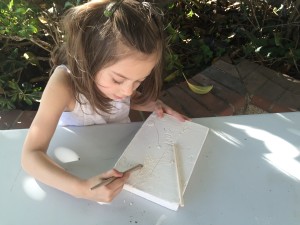
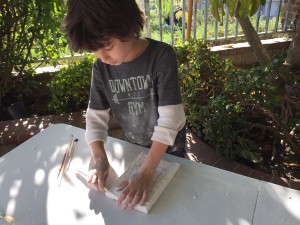
This is what it looks like when it almost fully excavated. You can see the coins and knife, but there’s much detail yet to be revealed.
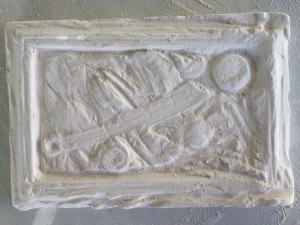
Once most of the material is excavated, leaving the harder ‘artifact’, they kids continued the excavation process by dunking the piece in water.
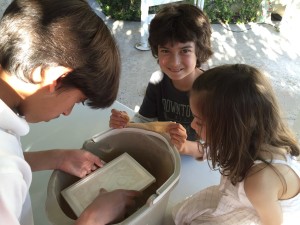
After using a finer tipped tool, the kids continued to remove as much plaster as possible.
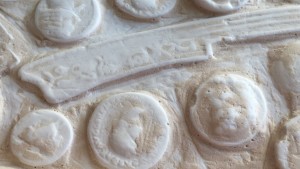
Next the kids began painting the piece with the enclosed paints.
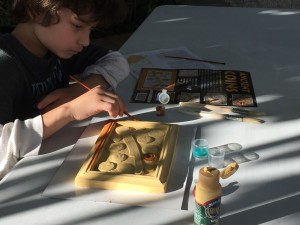
This is what it looks like when it’s all finished!
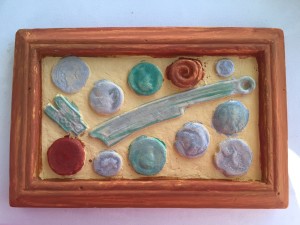
Ancient Egyptian Painting | Art In History Tile Painting
This kit comes with everything you need to make a stunning painted tile. There was more than enough paint in one kit to make two tiles, so we reserved the set of paints from our second tile for another project as the colors were good reproductions of the colors found in the pyramids and tombs of the kings and pharaohs of Egypt. Art in History Tile Painting can be found at Rainbow Resource:
Watch the complete playlist for Ancient Egypt videos
Duration: 1-2 hours
Level: all ages, but older or more skilled kids will be able to stay in the lines. My kids are 4th and 8th grade, and yet they still strayed outside the lines! Writing the hieroglyphs was challenging.
Cost: $12
Share pics of your projects with me on Instagram (tag me or use #pepperandpinehomeschool), Get updates on videos on Twitter. See what we’re up to on Instagram. Talk with me on Facebook!
Excavating a Sarcophagus | Ancient Egypt
Want to add archaeology to your history unit? Dig, Discover and Display is a kit that comes with everything you need to excavate, assemble and paint a clay sarcophagus. Unlike some other kits from Dig, Discover and Display, this material was easy to excavate and the artifacts were only in two pieces which made assembly easy. You can find this at Rainbow Resource.
Level: 6 years and up
Duration: 1-2 hours
Cost: $20
Ancient Egypt Papyrus Painting
As part of our Ancient Egypt unit, we got a papyrus paper making kit that came with two sheets of papyrus: one printed, one plain. Using paints from a previous tile painting kit, the kids (age 4, 9 and 13) painted in the images on the papyrus. We also painted on a set of papyrus that came with six pieces, but did not contain papyrus for making paper. All projects can be found at Rainbow Resource.You can find the Papyrus Making Kit, Papyrus Activity Kit, and Paint Your Own Papyrus from Rainbow Resource. Check out the complete Ancient Egypt Playlist.
Level: age 4 and up
Duration: up to 1 hour
Cost: $8/2 large or 6 small
How To Make Papyrus | Ancient Egypt
Have you ever tried to make your own papyrus? We have, and it’s harder than you think! In fact, I’m thoroughly convinced that I would be fired from papyrus making if I lived in ancient Egypt! Aside from totally failing, it would have been good to check the directions completely before beginning this project, if for nothing else, to set an example for my onlooking children! That being said, I am thankful we had two different sets of kits, so when we failed with the first, we could fully fail with the second one!!We bought both kits from Rainbow Resource. The Papyrus Making Kit came with dried papyrus strips, while the Papyrus Activity Kit came with a large sheet of printed papyrus for painting and information about the papyrus and ancient Egypt in addition to directions.
Duration: several days to weeks (only a few minutes each time)
Cost: less than $10
Level: easy with parental supervision, my five year old could do this
Pics from our project:
How to Mummify an Apple | Ancient Egypt
Here’s a free, easy but not-so-fast project you can do as part of a science or ancient Egypt unit study. Mummifying an apple was an excellent representation of what happens to organic matter when it is dried out using salt. We used a mixture of baking soda and salt to mimic natron, the salt used by the ancient Egyptians in the mummification process. Natron is a naturally occur salt that is abundant in the Egypt.
We left our apple in the salt mixture for two months, but the majority of the mummification took place in the first month because the moisture collected in the bottom of the jar rather than being able to run off the way it would if you were actually mummifying a person. The idea was a little gross, I confess. You don’t think about the liquid that comes off a person’s body during mummification (at least I didn’t), and this activity highlighted that process.
It was also amazing to see the apple dehydrate and change colors, and yet it didn’t rot. It was still squishy when it was finished, and might have become dryer had we exchanged the salt.
Duration: 15 min prep, 2 month wait, 10 min
Level: 5 years and up
Cost: $2
Directions:
Mix 1 part salt with 1 part baking soda. Cut apple in half or quarters. Place apple in jar and fill with salt mixture. Wait 1-2 months, then extract the apple and observe!
How to Build Ancient Egyptian Pyramids
When doing this project in 2024, 8 years after many of the tutorials and projects you’ve seen here, I found that instead of buying a kit, we wanted to do something different for this main lesson block. I also wanted to do something that would be more accessible to recreate than a kit that, after so many years, many are not available, and to be honest, I’m not super thrilled with the quality and variety of the kits for ancient Egypt at the moment. Still some remain, like the papyrus making kit which I’m so thankful for. For this project, I’m using Aardvark clay. I’m not concerned with the cone number as we will not be firing this project and instead we are letting it air dry and then adding Plaster of Paris on top of it to mimic the limewash that would have made the pyramids a brilliant reflective white. We topped our pyramid with gold leaf, though gold paint works well, too.



We wanted out pyramids to ‘be to scale’. After a bit of ratio math, we determined the size so it would be roughly matching other pyramids we had from other projects. For the big pyramid, we did a base of 10cm square with a height of 6.4 cm. For the medium sized pyramid, we measured a base of 9.4cm squared with a height of 6.2cm, and for the small pyramid, we measured a base of 4.7cm squared and a height of 2.9cm. To ascertain the height correctly as we built our pyramids, we cut a bamboo skewer to size and placed it the center of the clay pyramid and began to shape it reduce its size as we worked the clay. Once the clay was a bit drier we could finely shape it more. One aspect which was hard to do precisely was the tip of the pyramid. In the end it looked more rounded and wethered, though we tried to make it pointy as we were attempting to make the pyramids as they were originally rather than how they are today.
Ancient Egypt Map
For this watercolor map of Giza, Egypt, we used 140 lb. Strathmore Watercolor Paper, sized 15×22 inches available at Waldorf Supplies. We used our Winsor-Newton watercolors from Blick Art Supplies, but in retrospect, we should have used our Stockmar watercolors from A Child’s Dream as they would have been faster and covered beautifully. The main reason why I went with the Winsor-Newton paints is because I was looking for a specific warm brown for the sandy desert, and didn’t want to mix the Stockmar colors to make that specific shade. I followed some images I found online to give the basics of the landscape, but upon further inspection, I’m pretty sure we placed the pyramids in the wrong order. We made the pyramids in another project, and I love the addition of the map below the pyramids as it gives the whole project context and beauty.
To the Kitchen! Cooking Ancient Egyptian Inspired Cuisine
I love adding recipes to our main lesson blocks and unit studies wherever possible. Not only is it a win win because we have to eat anyway and now we get to learn about another culture’s food, but these lessons happen to be some of the most memorable as well. The children are not usually cooking with me, though I think that’s even better, they are usually feasting on the experience especially if I can make several dishes from a particular country or time period, then we have a bit of party with all the food. The most memorable experience for them was when I made the Ancient Roman meal with cornish game hens. They were thoroughly delighted.
How to Make Ful Medames | Ancient Egyptian Meal
For our Ancient Egypt unit study we decided to make some ancient Egypt inspired dishes using the book “Food and Cooking in Ancient Egypt” by Clive Gifford and illustrated by Paul Cherrill. You can find the book at Rainbow Resource. Today’s dish is called Ful Medames,and it is still a popular breakfast item in Egypt today. You can find cans of fava beans at most ethnic markets.
Recipe:
1 can of fava beans
1 lemon (juiced)
3 cloves of garlic (mashed)
1 teaspoon (or less) of cumin
Salt to taste
Olive to drizzle on top
Heat beans over low-medium heat for a couple minutes. It doesn’t take long at all! Season while on the stove. Transfer beans to serving dish and mix in lemon juice and top with fresh mashed garlic and olive oil. Serve with pita bread and eggs for a filling breakfast, or serve with homemade pita chips for a healthy vegan snack. Check out the other videos in this series.
Chicken Kebabs | Ancient Egyptian Meal
For our Ancient Egypt unit study we decided to make some ancient Egypt inspired dishes using the book “Food and Cooking in Ancient Egypt” by Clive Gifford and illustrated by Paul Cherrill. You can find the book at Rainbow Resource. Today’s dish is chicken kebabs, and it turned out to be our favorite recipe from the book. We continue to make this dish! We made some alterations from the original recipe which calls for yogurt, but because my son has severe dairy allergies, we omitted the yogurt.
Recipe:
3 chicken breasts-cubed
1 onion-grated
3-6 cloves of garlic-mashed
2 tablespoons cumin
1 teaspoon cayenne
1 teaspoon Aleppo pepper
1 teaspoon paprika
salt
In a blender add all ingredients except chicken. Toss chicken with mixture until well mixed. Place on baking tray and bake for 15-20 minutes on broil or 450 degrees uncovered. You can also cover it. You may choose to marinate the chicken, but we didn’t. You can also put the chicken on skewers and grill it, but we didn’t. You can serve this with rice and yogurt. But, you guess it, we didn’t! Instead we served it with Stuffed Cabbage and Dukkah Dip, and finished it off with Date Balls.
Serve with stuffed cabbage as a side dish. Or check out the whole Egyptian Meal.
How to Make Vegan Dukkah Dip | Ancient Egyptian Meal
For our Ancient Egypt unit study we decided to make some ancient Egypt inspired dishes using the book “Food and Cooking in Ancient Egypt” by Clive Gifford and illustrated by Paul Cherrill. You can find the book at Rainbow Resource. Dukkah Dip is a vegan dip made of nuts and seeds. It was surprisingly tasty except I did over salt it. It would be great with pita bread, pita chips or crackers. As I didn’t have any of these, I paired it with cucumber sticks. It was a nice balance of dense salty nuttiness and cool bland cucumber.
Recipe from the book (I changed it slightly in the video by adding chili peppers and cutting the recipe in half):
2/3 cup of sesame seeds
1/3 cup hazelnuts
1/2 cup blanched almonds
3/8 cup coriander seeds
2 Tablespoons cumin seeds
3/4 teaspoons dried thyme
Black pepper
Optional: bread and olive oil
Roast sesame seeds at 350 degrees for 3 minutes. Roast nuts for 4 minutes. In a pan, toast seeds (I added oil and chili pepper) until browned for about 3 minutes. Add everything to a blender and blend for about a minute. Serve with bread and olive oil. Our nut dip was still warm when we ate it, and it was better than when it was room temperature or chilled. Serve as an appetizer or with this chicken recipe, or catch up on the whole Ancient Egypt Cooking Playlist.
How to Make Stuffed Cabbage Leaves | Ancient Egyptian Meal
For our Ancient Egypt unit study we decided to make some ancient Egypt inspired dishes using the book “Food and Cooking in Ancient Egypt” by Clive Gifford and illustrated by Paul Cherrill. You can find the book at Rainbow Resource. Today’s dish is stuffed cabbage leaves and it tasted surprisingly delicious. This vegan dish disappeared very quickly and considering it’s packed with spinach, this healthy side dish is one to add to any meal or as an appetizer on its own.
Recipe:
1 head of cabbage (leaves carefully removed)
1 bag of frozen spinach (12 oz.)
1 onion sliced
3 cloves of garlic (or more!)
1/3 cup of raisins or currants
1 tablespoon of sesame oil
1/2 teaspoon of ground coriander
1 teaspoon sesame seeds
Boil cabbage leaves for 5 minutes or less, just until they are soft. Set aside. Slice onion and saute it with oil and garlic. Add spinach, coriander, sesame seeds and raisins and continue to cook for about 5 minutes. Scoop about 1-2 tablespoons of mixture into each cabbage leaf and gently fold over the flaps and flip it over onto a serving platter so all the flaps are tucked under. Serve as an appetizer or with this chicken recipe, or catch up on the whole Ancient Egypt Cooking Playlist.
How to Make Date Balls | Ancient Egyptian Meal
For our Ancient Egypt unit study we decided to make some ancient Egypt inspired dishes using the book “Food and Cooking in Ancient Egypt” by Clive Gifford and illustrated by Paul Cherrill. You can find the book at Rainbow Resource. These Date Balls were so delicious, no junky dessert needed! There were very sweet, filling and rich. They are a very healthy snack or dessert alternative. If you have nut allergies, you can use coconut flakes instead.
Recipe:
3 Tablespoons of honey
1 1/3 cups of moist dates (pitted)
1 teaspoon of cinnamon
1 1/4 cup walnuts
Ground or slivered almonds
Blend dates, cinnamon and walnuts in a blender. Form into balls. Coat them with warmed honey, coat with slivered almonds. Serve immediately or chilled. Watch them disappear!! Serve as an appetizer or a desert following the chicken in this recipe. Or watch the complete Ancient Egypt Cooking Playlist.
Field Trips & Games
I love adding in field trips whenever possible. If you are near museums that will enhance your studies, I encourage you to go to them. If not, road trips might be a fun family tradition. We used to love our road trips, field trips and museum visits when the children were younger. When we did this unit (and most of the videos and projects from that time in 2016), my children were 5, 9, 13 and 17. They were young and old enough to enjoy museum visits, even my 17 year old who was already in college at the time and long done with homeschool. Now, in 2024 as we complete our final ancient Egypt unit, and homeschooling just one child, the vibe in our home is quite different and museum visits and field trips are no longer a regular occurance. When you have the opportunity, take it!
Rosicrucian Egyptian Museum
Want to see the museum that inspired our Ancient Egypt unit study? It’s also the place we visited when completed our unit. It was a great way to begin and end our unit. It was both inspiring in that we wanted to learn more and satisfying because we were able to see the artifacts we learned about.
If you can’t visit the Rosicrucian Museum in San Jose, CA, check out your local museums for a traveling exhibit. This is a great way to come face to face with some amazing artifacts. Plus the museum staff are usually available to answer questions and are always a great resource.
Want to learn how to play senet? Click here. You can also see the whole Ancient Egyptian playlist.
How to Play Senet | Ancient Egypt
Did you know that there were four games of Senet found in King Tutankhamen’s tomb? This strategy game was enjoyed by the ancient Egyptians, and now you can learn how to play, too. Granted historians disagree on the rules of the game. I’ll show you this simple version we learned while at the Rosicrucian Museum in San Jose, CA.
Download your own game board. I made this one based on the life-sized game we played at the museum. Now you can enjoy this easy-to-play game.
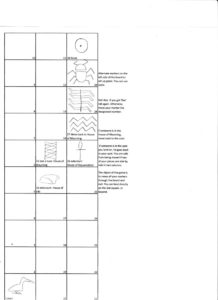
Players: 2
- Ages: 5 and up
- Level: beginner
- Cost: free
How to play: Line up your markers on the left side of the board, alternating game pieces (5 for each gamer). Roll dice. If you roll ‘five’, roll again. The ancient Egyptians believed ‘five’ was an unlucky number. Move your marker to a spot. If you land on a spot that is occupied, that marker is moved to your original spot. If you land on a spot that you occupy, choose a different marker to move. If your game pieces occupy two squares side by side in two columns, your markers are safe and cannot be moved back. If you land on a square that is lucky, you get an extra turn, if you land on a square that is unlucky you lose a turn. To win the game, all your game pieces have to move through all the square, going up the left, down the middle and up the right and exit the game. You can land exactly on the last square or beyond it. The object of the game is to derail your opponent’s advancements while getting your pieces through the board.
Review
At the close of a unit or main lesson block, I share the books we read and projects we did and let you know how everything went. Some books are worth buying and keeping, others are worth checking out at the library, and still others might be passed over in preference of games or kits.
We made it to the end of our Ancient Egypt unit study! Woohoo! I’ll review all the books we read and projects we did in this video. I’ve included a downloadable list of all the books and kits we used and whether I found them valuable for our unit. Is there a book or project you’ve done that I didn’t mention? Please leave me a comment!
Now that we are finished with our Ancient Egypt unit study, I can review the material we used. Hopefully you find it helpful in your search for material to add to your unit. Please not that my kids are pre-K, 4th grade and 8th grade. This unit is for my 4th and 8th graders, but my pre-Ker joined us and especially liked all the hands-on projects.
I have not written the reviews with grammar in mind! Grammarians beware 😉
Want a complete list (sans pictures) you can download and print out? Click here.
Book and Resource Review
The Pharaohs of Ancient Egypt
By Elizabeth Payne
I loved this book. It was easy to read, well written and captivating…better than an action movie! Written for junior high and older, but can easily be read aloud to a younger student. My 4th grader enjoyed this book, and even my preschooler listened.
Worth adding to an Ancient Egypt unit

History Opens Windows| The Ancient Egyptians
By Jane Shuter
Easy to read for independent reading for grades as young as 3rd grade. General overview of ancient Egyptian culture. Brief overview of lifestyle. Good introduction for this unit or great for independent reading. Nice illustrations.
Worth adding to an Ancient Egypt unit

Half and Half Books | The Time of the Pharaoh | Great Stories and Cool Facts
Simple fictitious story easy enough for a 2nd or 3rd grader to read on his own, followed by facts about ancient Egypt with beautiful illustrations. The ‘Facts’ part of this book is more suitable for a 4th grade reading level. Back of the book has some questions and answers. Overall I liked this book for read aloud for kids 6th grade or younger, or suitable for independent reading for a 3rd or 4th grader.
Worth adding to an Ancient Egypt unit
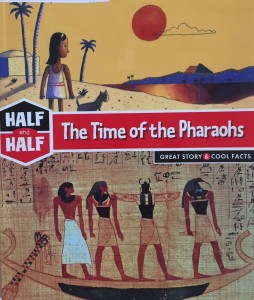
Mummies Made in Egypt
By Aliki
Very factual representation of preparing mummies and the funeral process. The illustrations look like the paintings inside temples and pyramids, illustrated in ancient Egyptian style. Borders on boring.
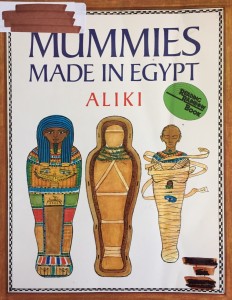
Understanding People of the Past | The Ancient Egyptians
By Rosemary Rees
General and thorough overview of ancient Egyptian culture and practices. Text and photos, no illustrations. Reading level about 5th grade. One topic for every two-page spread.
Worth adding to an Ancient Egypt unit
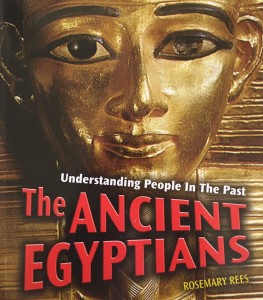
Ancient Egyptians and Their Neighbors | An Activity Guide
By Marian Broida
Covers Ancient Egyptians, Hittites, Nubians, and Mesopotamians. Reading level 5th grade and up. Filled with activities. Great singular resource if you only want to buy one book for multiple units. Plus you get activities suggestions if you don’t want to buy separate activity kids. We didn’t do any of the activities in the book, so I cannot comment on them.
Worth adding to an Ancient Egypt unit (if you have a limited budget and need one book for multiple units)
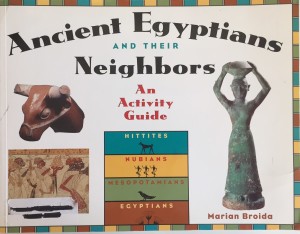
Ancient Civilizations | Reproducible Workbook
By McDonald
Typical workbook. Each page has a paragraph to read (some have maps or other inserts), followed by questions. Very dry and almost boring. Great if you need to ‘show work’ or hand something in. Great if you want to test your knowledge of the subject area. Only purchase in conjunction with a unit, it’s too sparse on its own. Overs multiple civilizations from Egypt to Rome. Suitable for upper elementary and junior high.
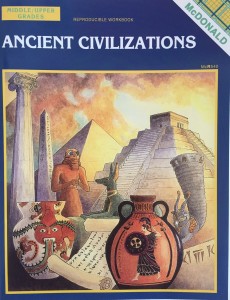
Hieroglyphic Symbols of Ancient Egypt
Illustrated by Jeanne L. Rogers
Well made fold out pamphlet on ancient Egyptian hieroglyphs. Large print, nicely illustrated, adequate information. Good reference material to accompany other books on hieroglyphics.
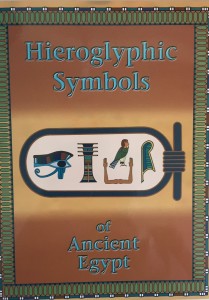
Tales of Ancient Egypt | Puffin Classics
By Roger Lancelyn Green
Each chapter is about a different story of ancient Egyptian mythology. Suitable read aloud for grades as young as 2nd grade. Reading level is junior high or high school. My kids liked the book. I found it ok. Mixes history with mythology so I got a little confused. As we only had one mythology book, I don’t have any other to compare it, but there may be a better book available.
Worth adding to an Ancient Egypt unit (if you don’t have another mythology book)
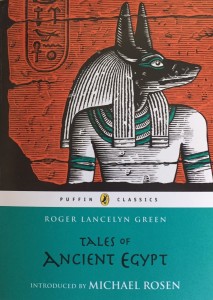
Science in Ancient Egypt
By Geraldine Woods
I loved this book! I like adding books/activities from other subjects to our units. This is a history unit, so
Adding in math and science was excellent and allowed us to round out the unit with other subjects. Plus, I learned so much from this book! I found the information exceedingly interesting, my kids found it average. Reading level 5th grade-8th grade. Suitable as a read aloud for younger kids, but they might not understand some of the scientific information.
Worth adding to an Ancient Egypt unit
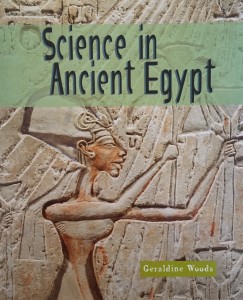
You Wouldn’t Want to Be a Pyramid Builder!
By Jacqueline Morley
I like all the books in the series “You Wouldn’t Want…” that I’ve read. You might be deceived by the illustrations or silly title, but these books are succinct, easy to read and informative. Though I’m not a huge fan of the comic book style of illustrations and comic banter of the ‘characters’, I’m sure this is enjoyable to kids. I’m impressed with how much I learned from these books versus other books we got for this unit. I’d put these books in the top 5 books for information and retention.
Worth adding to an Ancient Egypt unit or keeping in your library permanently.
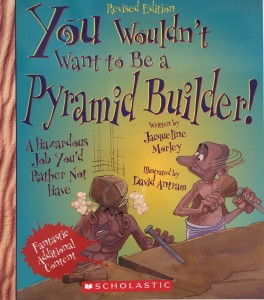
You Wouldn’t Want to Be an Egyptian Mummy!
By David Stewart
Another great book from Scholastic. Though it’s by a different author, all the books are well written, easy to read, enjoyable and entertaining. I’m impressed how much I learned and remembered after reading this series. Read more above.
Worth adding to an Ancient Egypt unit or keeping in your library permanently.
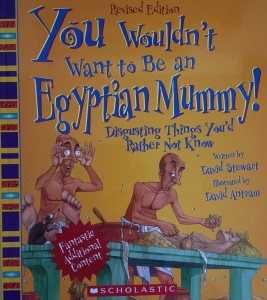
You Wouldn’t Want to Be a Cleopatra!
By Jim Pipe
Though I’m not a huge fan of the illustrations for this book, I did learn a lot in an entertaining way. The illustrations actually helped me remember facts about Cleopatra’s life. The kids enjoyed this book, but not as much as I imagine some kids who like the comic book style of this book, for those kids, I think they’ll love it. Easy, fast read. Suitable for read aloud or independent reading for 4th grade and up.
Worth adding to an Ancient Egypt unit or keeping in your library permanently.
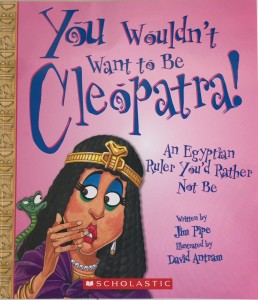
Ralph Masiello’s Ancient Egypt Drawing Book
Great step by step instructional book for drawing images typical of an Ancient Egyptian study unit.
Colorful and well done.
Worth adding to an Ancient Egypt unit

Cooking in World Cultures | Food and Cooking in Ancient Egypt
By Clive Gifford
I loved this book! Great information, easy to read, informative, filled with photos and illustrations and best of all…recipes!! We made all the recipes and found them delicious. Adding food to a history/cultural unit is a great idea; I highly recommend it.
Worth adding to an Ancient Egypt unit
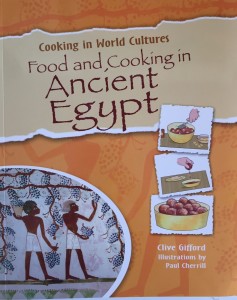
The 5,000-Year-Old Puzzle
By Claudia Logan
Based on the true story of the discovery of Queen Hetep-heres’s tomb. Beautifully illustrated. Don’t be deceived by this picture book; it’s for kids up to 8th grade easily. Very informative, well-written, captivating and enjoyable. Written like a journal with pen-pal inserts. Can be read in one setting in about 20-30 minutes.
Worth adding to an Ancient Egypt unit
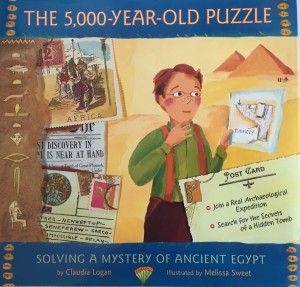
Ancient Egyptian Costumes | Paper Dolls
By Tom Tierney
Paper dolls for young elementary, but the figures are quite provocative. We skipped using this book because my boys wouldn’t have been interested in this and my girl was little young for the mature nature of the images. I feel the illustrator take a few liberties, but then again, the ancient Egyptians didn’t wear many clothes and the ones the women wore were often so sheer they were see-through because it was so hot. Since we didn’t use this book after all, I cannot comment on whether it should be added to this unit or not.
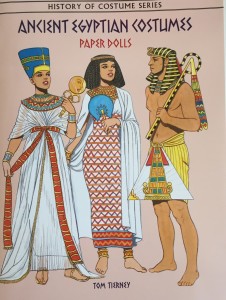
Mummy Mazes
By Don-Oliver Matthies
Fun book to keep kiddos entertained during free time or while reading aloud. My 5 and 9 year old enjoyed this book. It was nice for my 5 year old to have something to do while I read aloud to the kids. Beautifully illustrated, simple mazes, set in Egypt. Simple information by way of entertaining mazes. Goof for preschool and up.
Worth adding to an Ancient Egypt unit
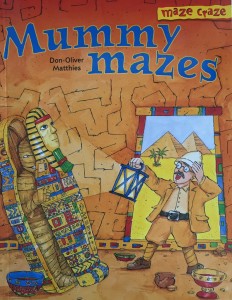
National Geographic | A Maze Adventure | Secrets of the Pyramids
By Graham White
Maze book for older elementary because the textual information on each page on the sidebar is written at a 5th grade level. This book is packed with information. Nice illustrations. The mazes are fun and more challenging than Mummy Mazes.
Worth adding to an Ancient Egypt unit or owning.
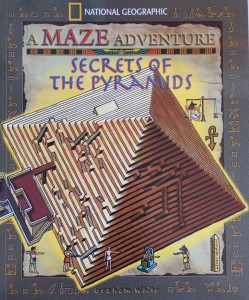
The Metropolitan Museum of Art | Fun with hieroglyphs
By Catharine Roehrig
Great book and kit. Comes with stamps and a stamp pad to practice writing hieroglyphs. Very informative book that has several captions to practice what you learn. However, I didn’t want the kids to mark in the book, so I took pictures of the practice exercises and printed them off so the kids could work them out.
Worth adding to an Ancient Egypt unit
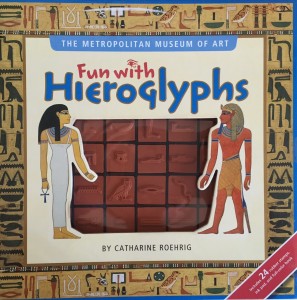
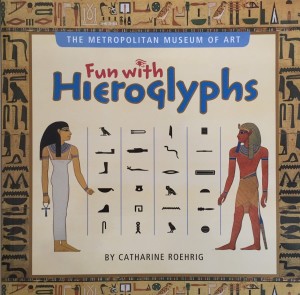
Stephen Biesty | Egypt in Spectacular Corss-Section
Amazing illustrations. Each page has a paragraph to introduce the information, while captions explain further detail about the illustrations. We accidentally forgot to add this book to our unit study because I had it on display in our school room as it was too large of a book to fit with the rest of the material. That’s my only complaint: it’s a tall book that doesn’t fit in any of our bookcases unless you put the spine parallel to the shelf, but then you can’t see the title of the book. It’s a really entertaining book and think it would be a good choice for a unit study, but as I haven’t used, I cannot say for sure.
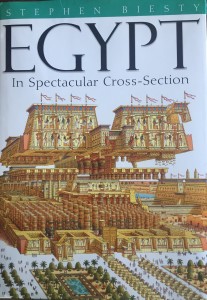
Mysteries of History | Ancient Egypt
Thoroughly enjoyed this book. Amazing interactive book with many moveable, removable and interactive elements. Great illustrations (though I think the illustrator took artistic freedom in his illustrations!). Well-paced, informative, and compelling. Large book with few pages. Pages are thick and filled with layers and flaps. Suitable as a read aloud for all ages up to 8th grade. Reading level about 5th grade. Fun to browse after reading.
Worth adding to an Ancient Egypt unit

Ancient Egypt | DK Eyewitness
As with all Eyewitness books, this one is filled with photos and captions. Each two-page spread covers one topic with an introductory paragraph written at junior high reading level. Suitable to as a read aloud for kids as young at 1st grade, though it’s not ideal for that age. I don’t particularly like this format as it is not a narrative and you could open any page without reading it in order. Hard to retain information. Could be used as an introduction or review or as a reference book.
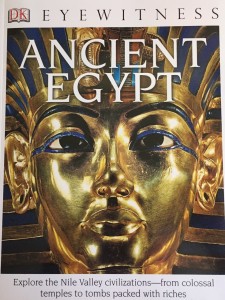
Pyramids | Eyewitness Books
Like all Eyewitness books this one is filled with photos and captions. Each two-page spread covers one topic with an introductory paragraph written for 7th grade and up. Suitable read aloud for elementary. Hard to retain information. Can be read in any order. Great for picking and choosing pages to read. Good reference book.
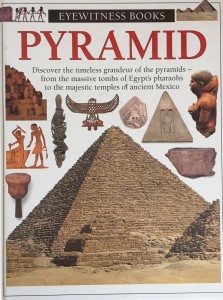
Egyptology | Candlewick Press
Fun book to look at, but hard to read through. It’s based on a fictitious lost journal from archaeologists who were looking for the island upon which Osiris was buried. The book is long and hard to follow, but is filled with beautiful illustrations and interactive elements. A confusing mix of history, mythology and fiction. Beautiful book to browse through once you’re finished reading it. Great idea for a book, though.
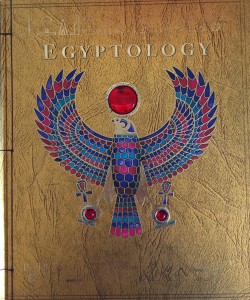
Kits/Activities:
National Geographic Archaeology Pyramid Dig
By Thames and Kosmos
Easy kit to do for kids 3rd and up. Very fast project, not more than 30-45 minutes. Best thing is you don’t destroy the pyramid during the excavation process. Comes with nice excavation tools specifically designed for this kit, not just a wooden stick, but a complete set of tools (maybe based on actual archaeological tools). Booklet comes with decoding worksheet, directions, information and experiments and projects. We did the “Mummify an Apple” experiment.
This project took several days, but each day only took less than 15 minutes.

Art in History | King Tuankhamun Tomb Frieze
Well made tile with imprint of design. Comes with everything you need to paint the project (paints, brushes, plate, wedge). Easy directions. Free downloadable lesson plan. Very nice tile piece when complete. Even inexperienced painters will finish with a great project.
This project took 1-2 hours.
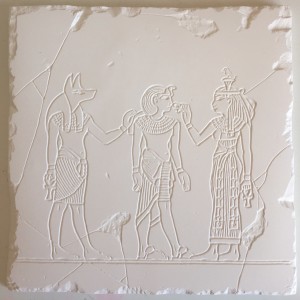
Papyrus Paper Making Kit | Egyptian Imports
We tried two different kits and found them similar except that the one from Egyptain Imports came with information on the growing and harvesting of papyrus and how paper was made as well as thorough directions. It also came with a piece of printed papyrus for painting. It did not come with paints, but we used excess paint from another kit to paint the papyrus. The process of making the papyrus was interesting, but the home kits in no way can reproduce the same results as professional paper mills. Are final product wouldn’t stay ‘glued’ together. Also, there were enough pieces of papyrus to make a square piece based on the length of papyrus in the kit.
This project took several days/weeks

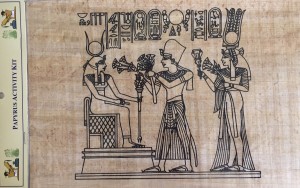
Dig, Discover and Display | Ancient Coins
This excavation kit was different than the ones we tried with our ancient Rome unit in that it was easier, and fully assembled. In some excavation kits, you have to excavate pieces of pottery or another artifact and then assemble it. Those kits are suitable for older kids. This one was a frame with coins from various ancient civilizations. It was packed in a soft, easy to excavate plaster which a four-year-old could excavate. Once complete, you could paint the frame and coins. I think there could have been more paint or at least a better variety. We used our own acrylic paint in addition to the ones that came in the kit.
This project took 1-2 hours.

Dig, Discover and Display | Egyptian Relics
This is another easy excavation kit that a child as young as 5 years old could do with a little assistance from an adult. What’s great about this kit is that the sarcophagus comes in only two pieces, so it’s not hard to excavate or assemble. There are also other amulets to uncover. Paint is included if you wish to paint the sarcophagus. Each Dig, Discover and Display kit comes with a booklet on becoming an archaeologist as well as directions, information and historical context. Excavation material varies in hardness from kit to kit.
This project took 1-2 hours.

Mummy Excavation | Geocentral
The sarcophagus being excavated is a very durable, detailed and well-made. The plaster was quite hard and we overlooked the part in the directions that say to add water, had we this project would have been easier to excavate. After the kids had spent 20 minutes excavating with minimal progress, I gently dropped the project to loosen the sarcophagus from the excavation material. This helped a lot. Once the sarcophagus is removed, you can open it to find a mummy. Remove the mummy, and wrap it in the paper linen wrappings.
This project took 1-2 hours.
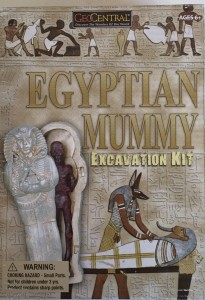
Papyrus Painting Kit
This set came with six small printed papyrus papers to be painted. They measured roughly 6”x4”. The designs were intricate to simple. The kit did not come with paint. They were easy to paint, however. We taped down the edges onto a table to keep the edges from curling up. The paper did end up curling anyway though. Suitable for 4th grade and up
Project took up to one hour.
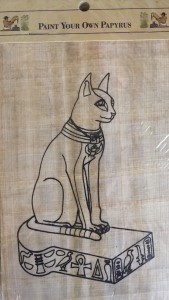
Do you have a book or project you added to your Ancient Egyptian unit study you want to share? Please leave it in the comment section. I would love to hear what things you did for your unit 🙂

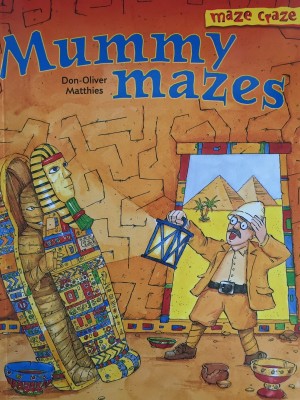
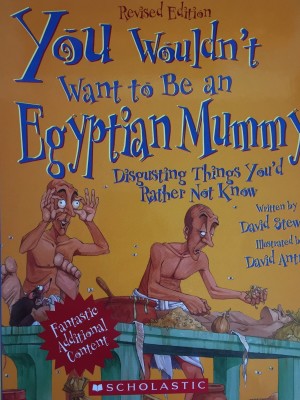
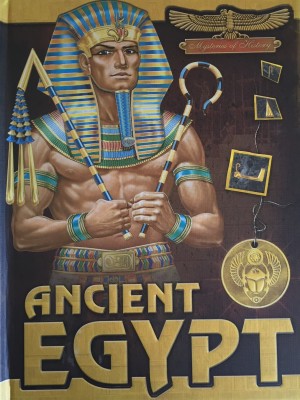
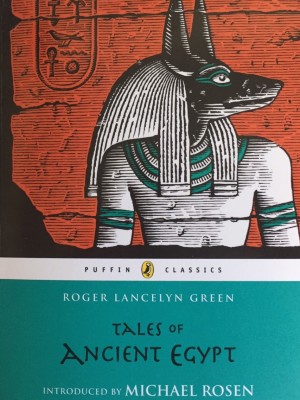
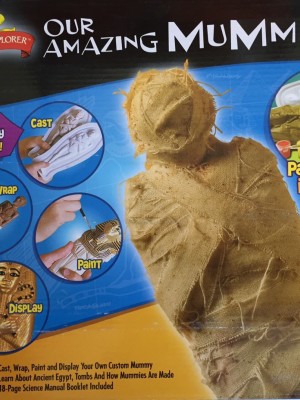
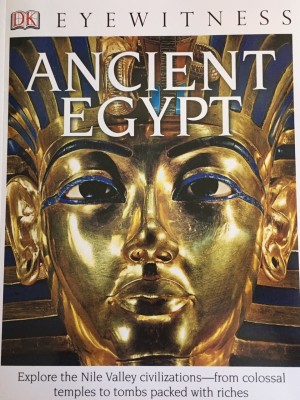
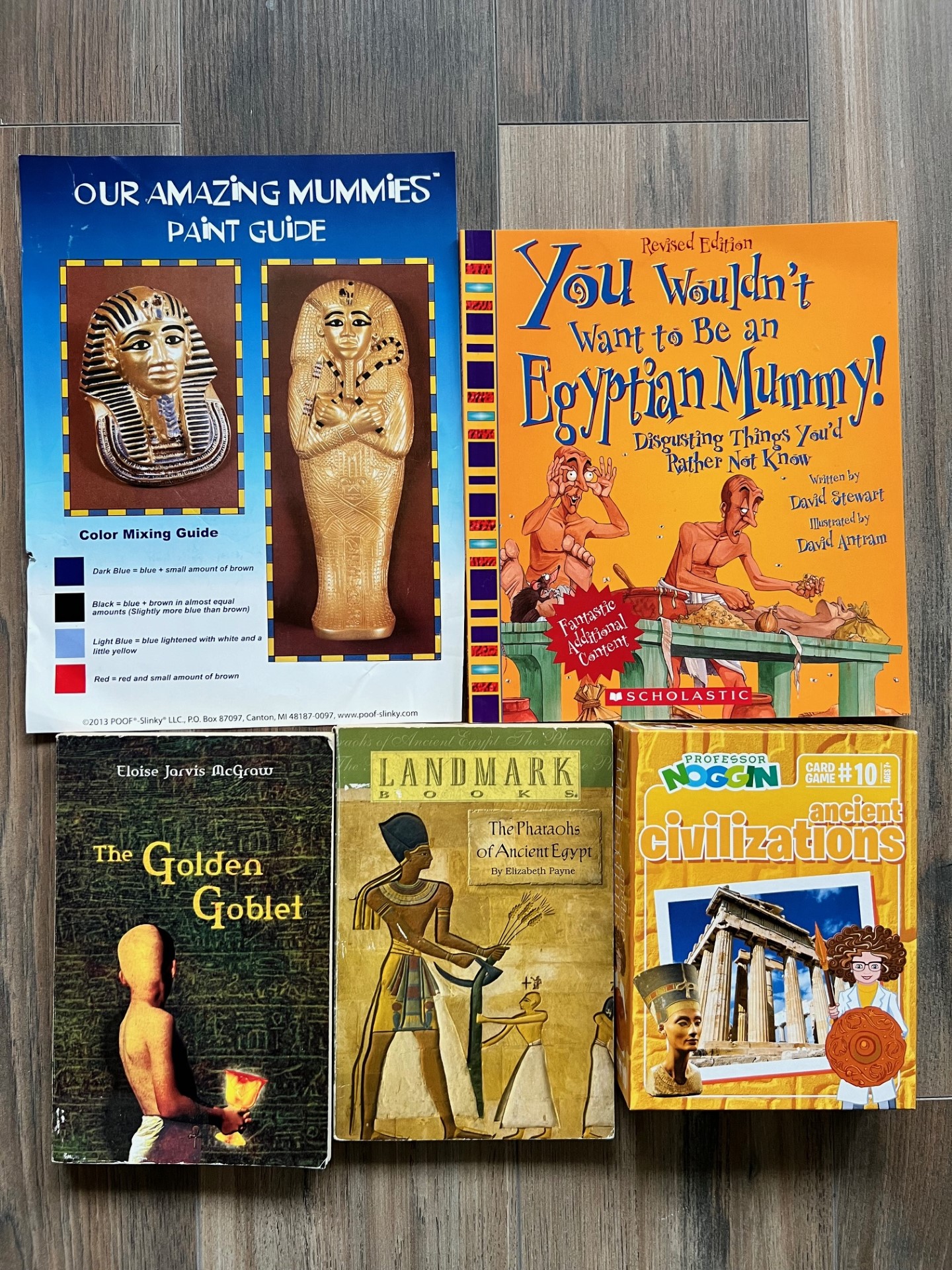
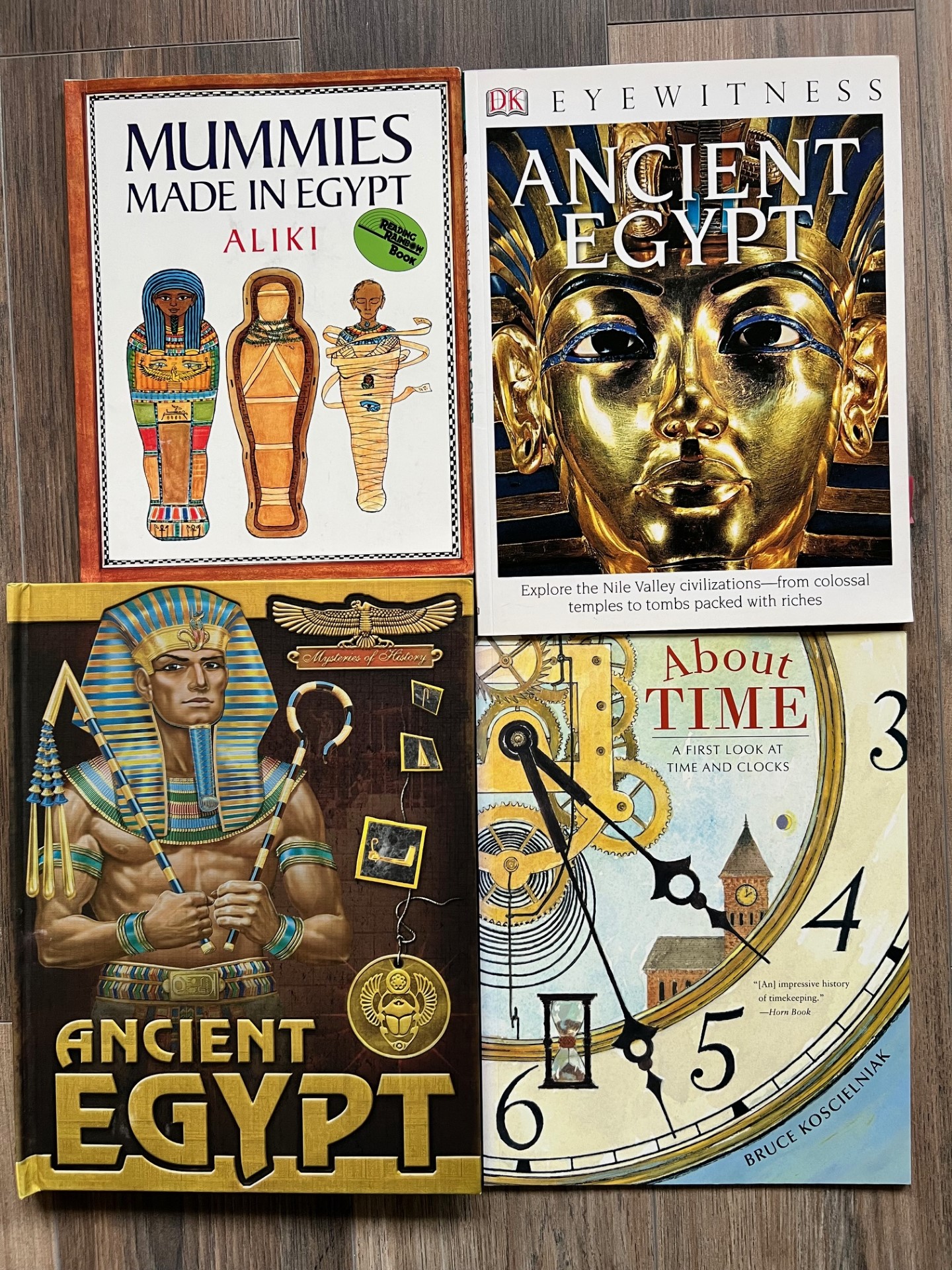
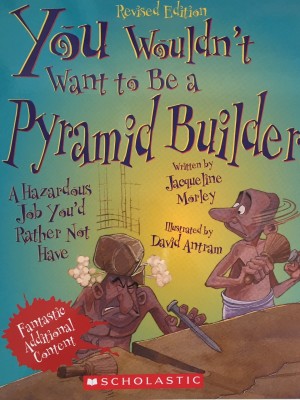
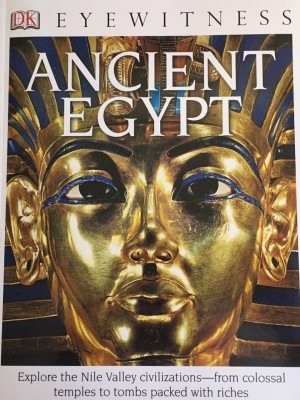
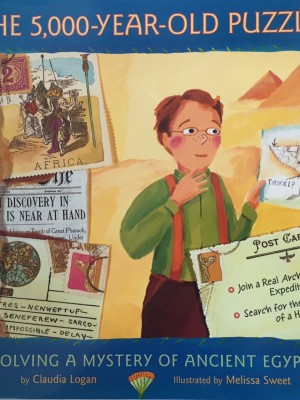
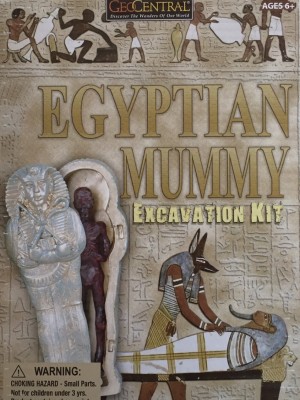
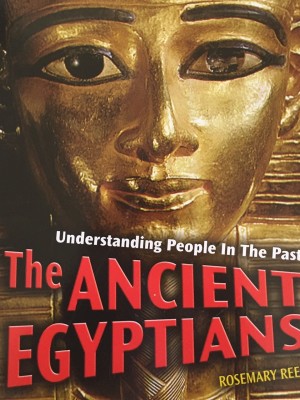
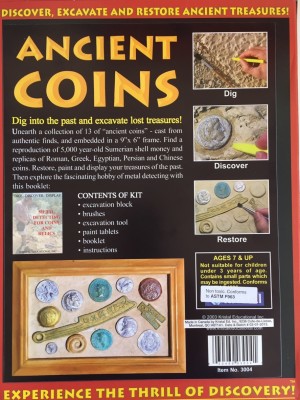
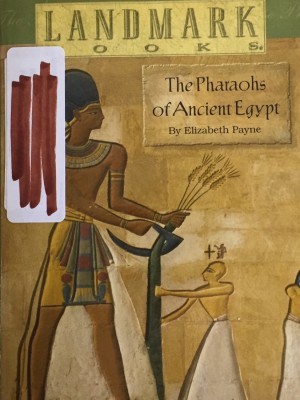
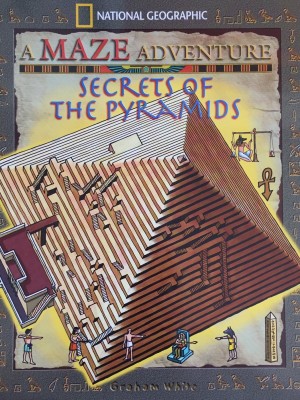
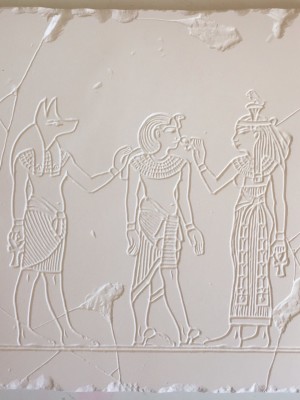
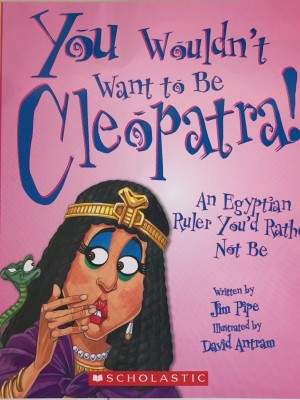
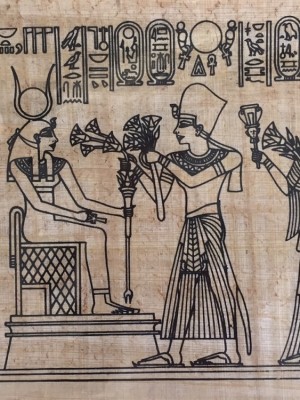
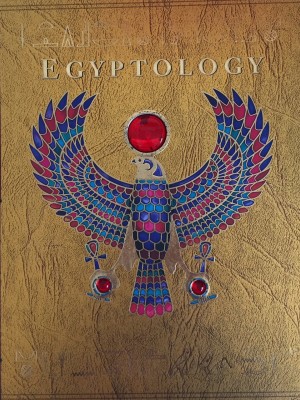
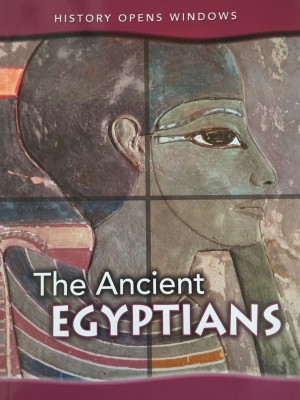
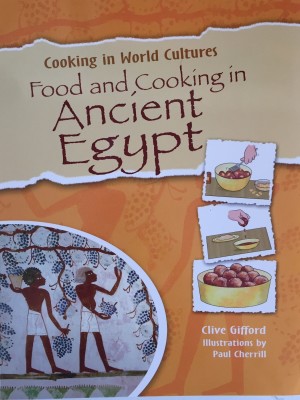
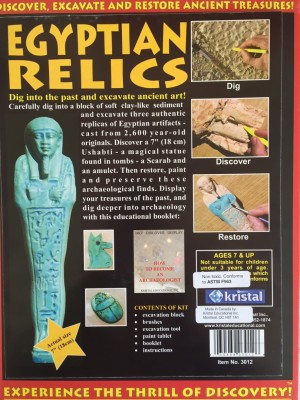
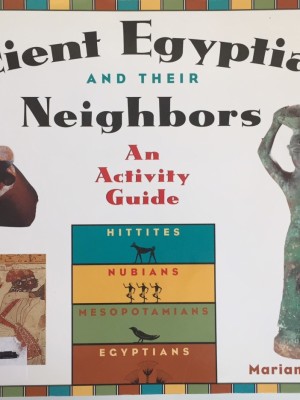
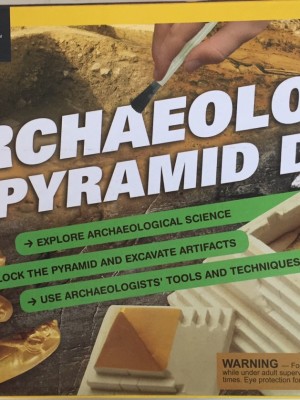
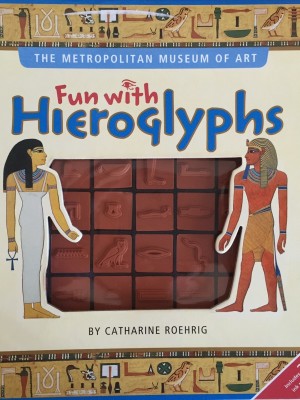
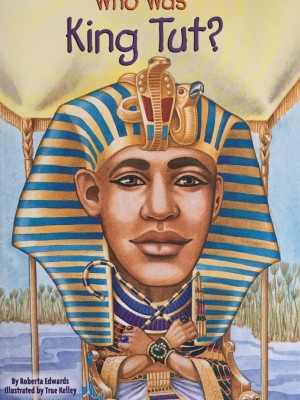
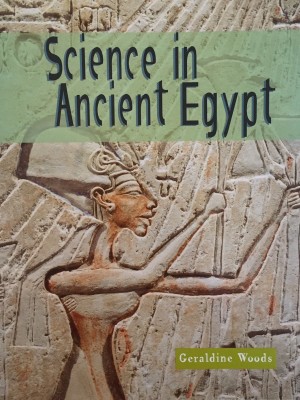
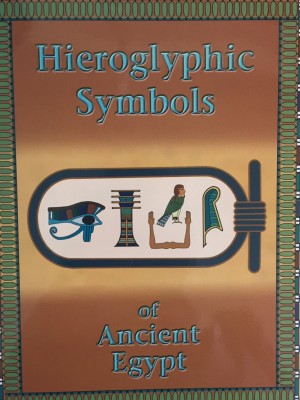
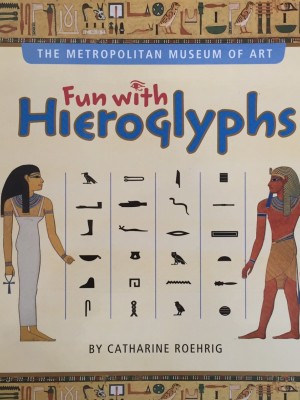
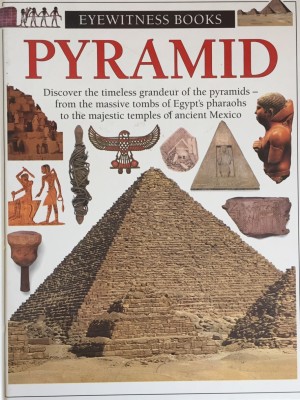
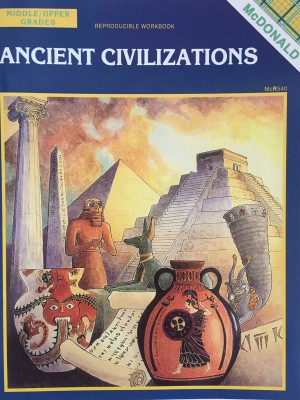
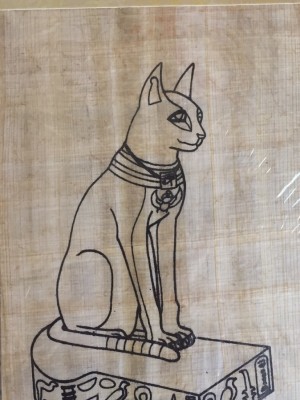
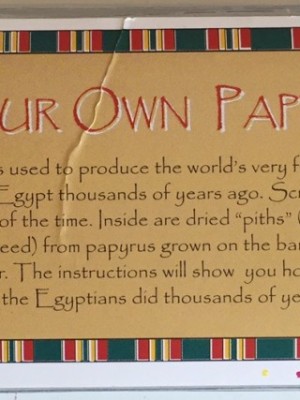
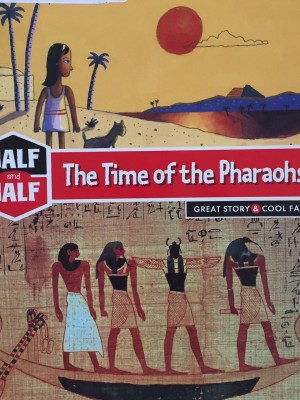
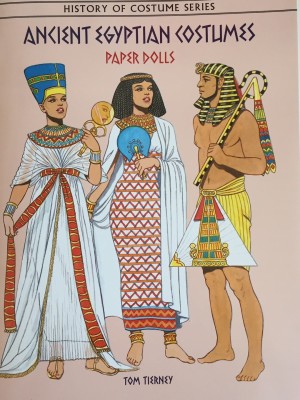
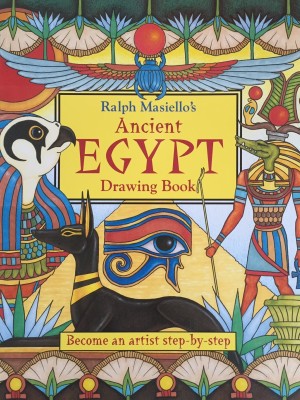
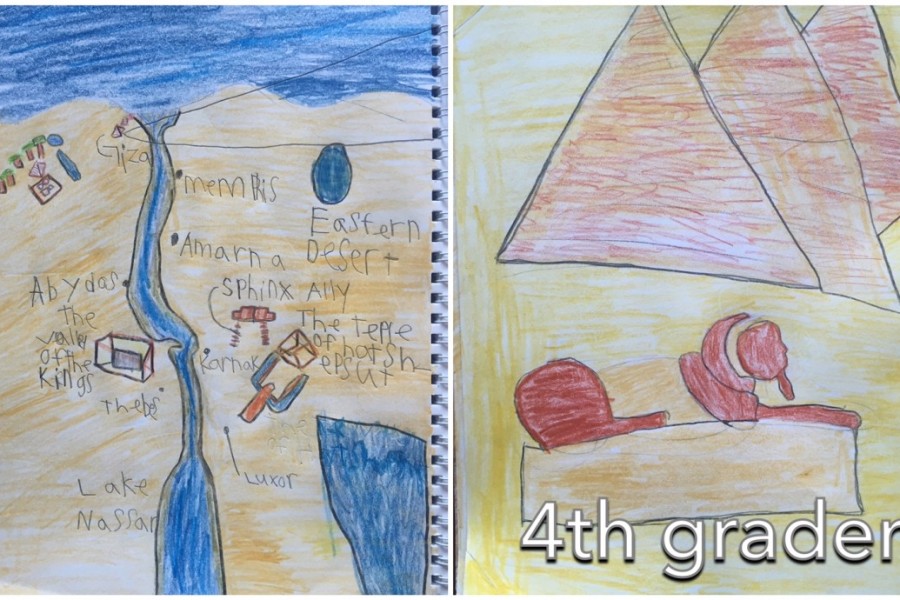
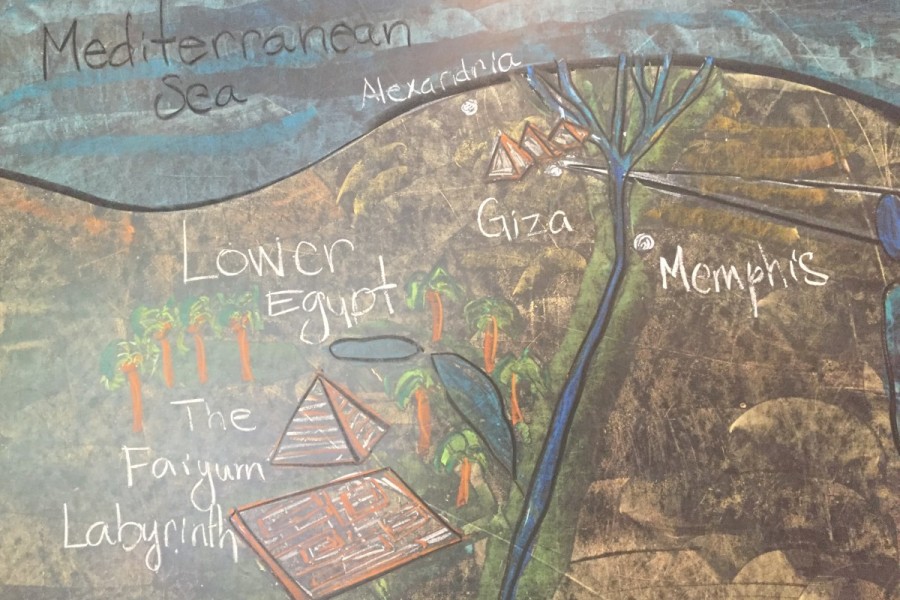
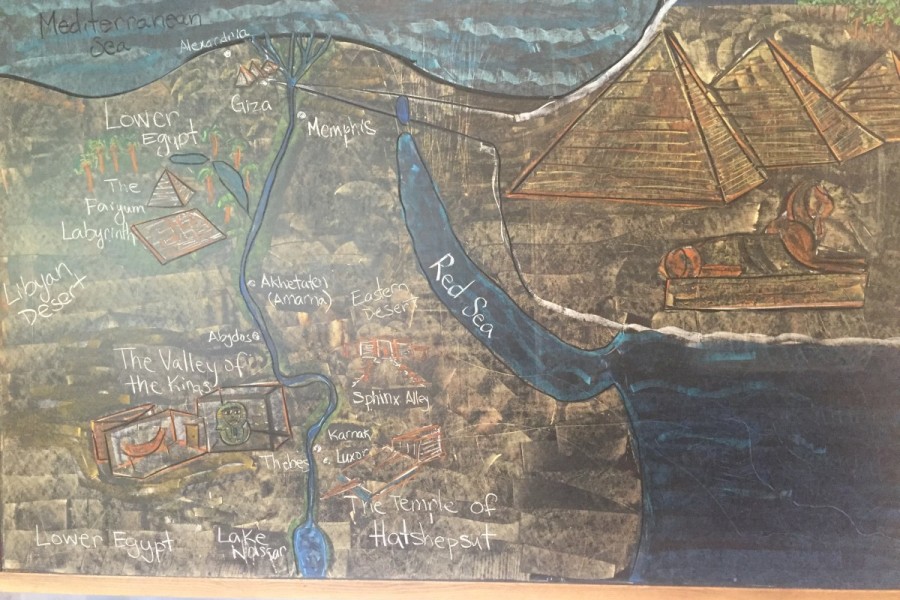
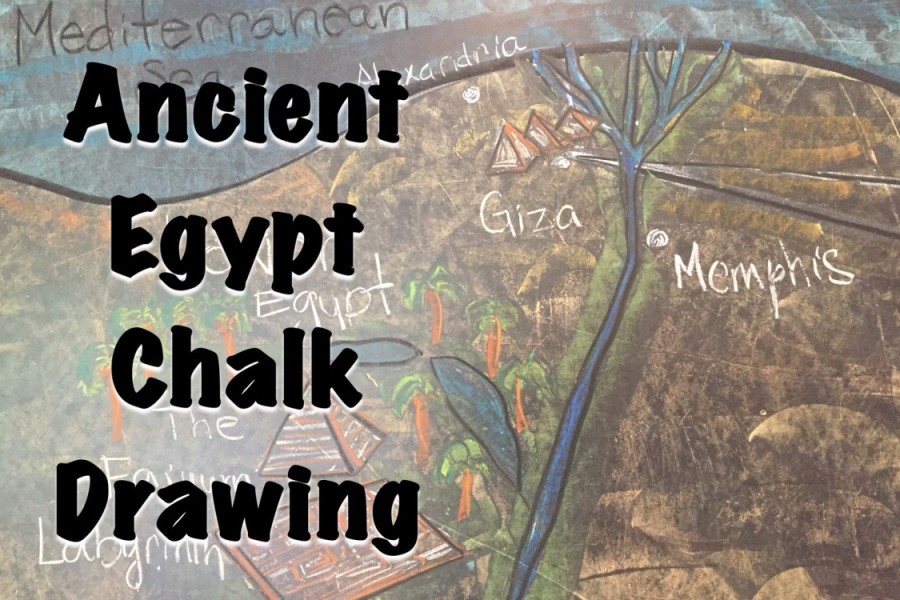
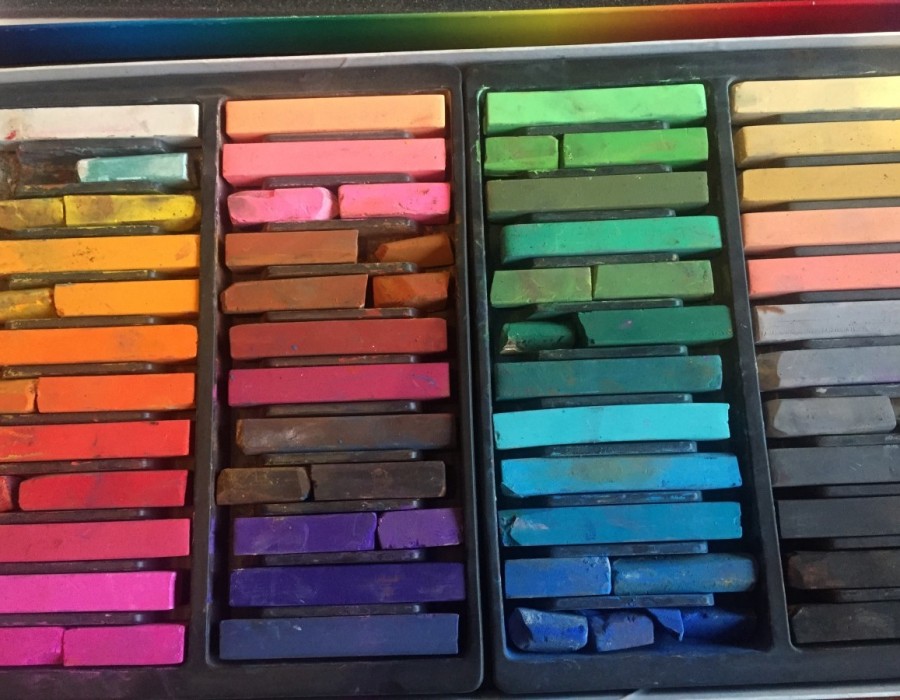
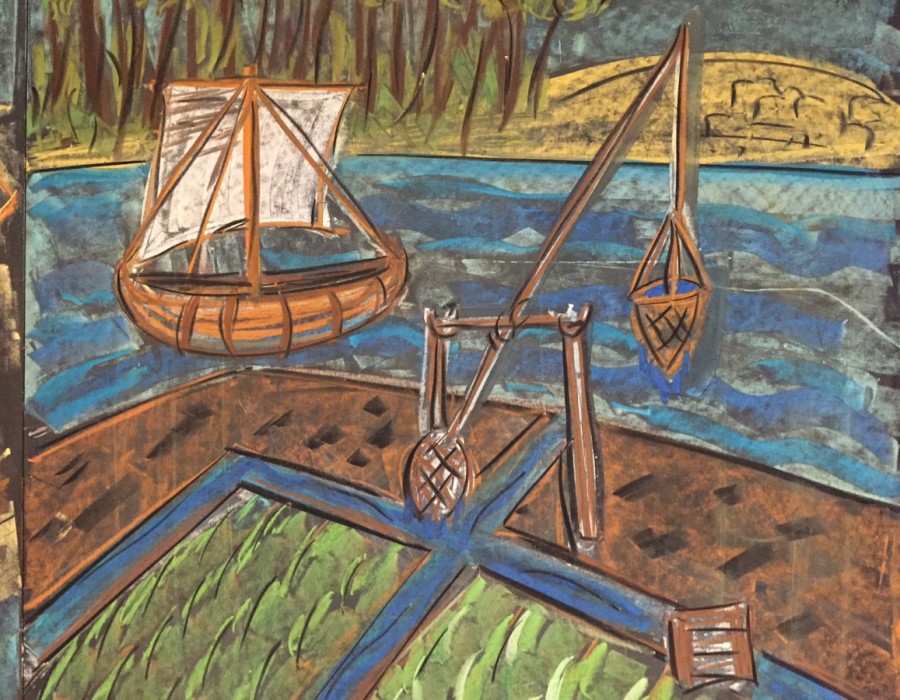
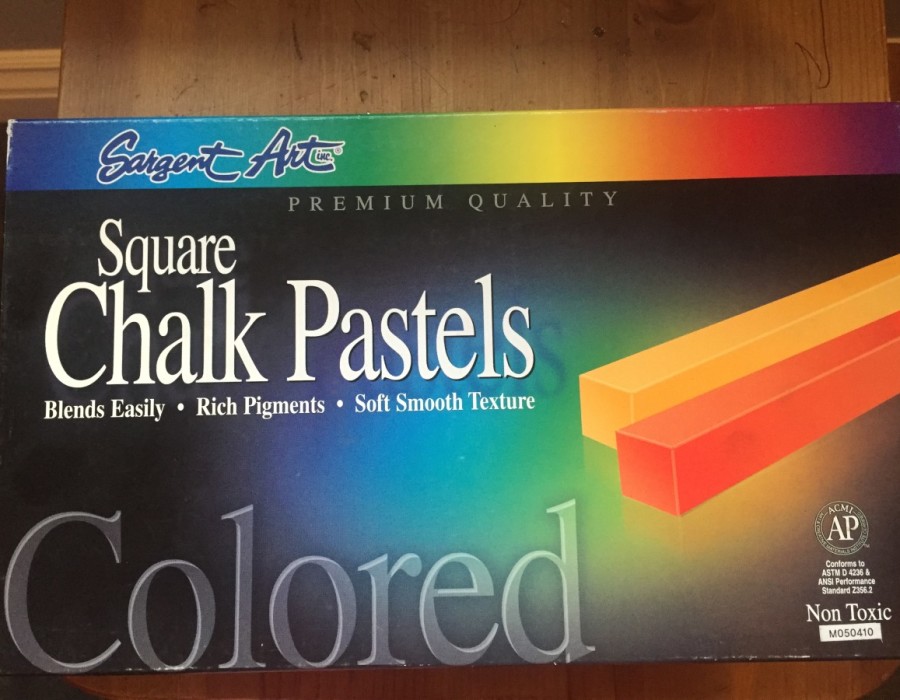
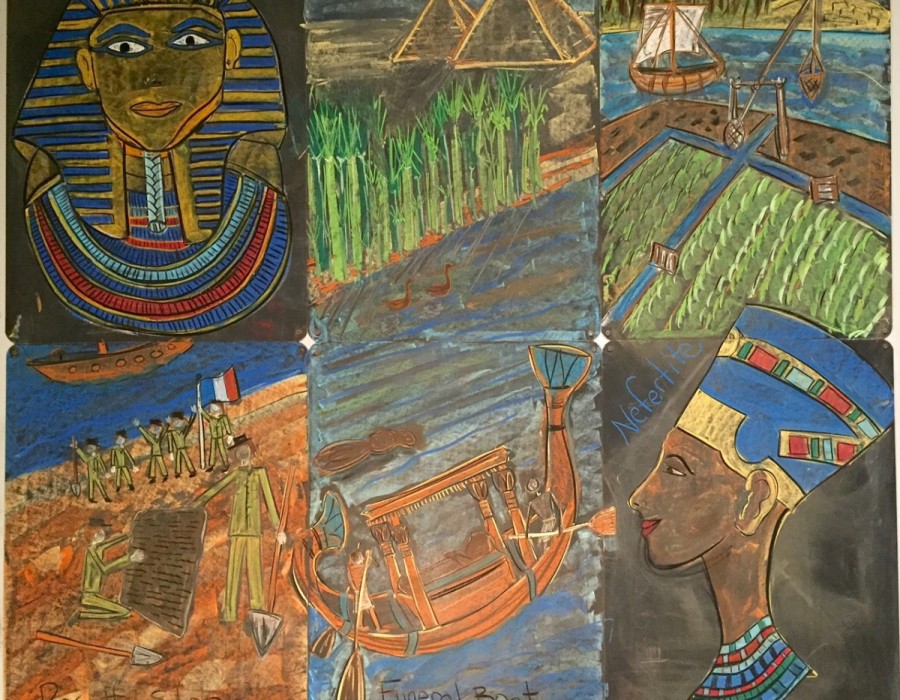
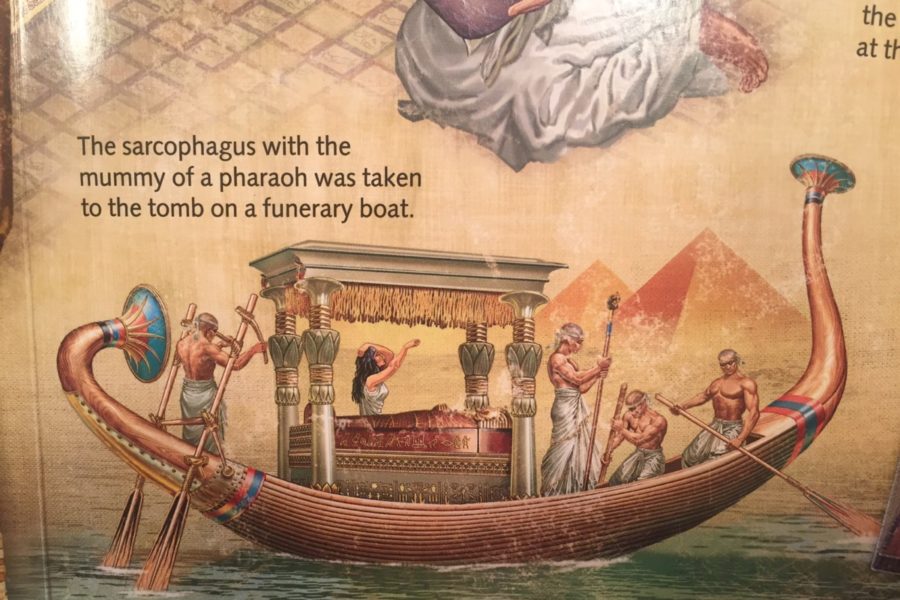
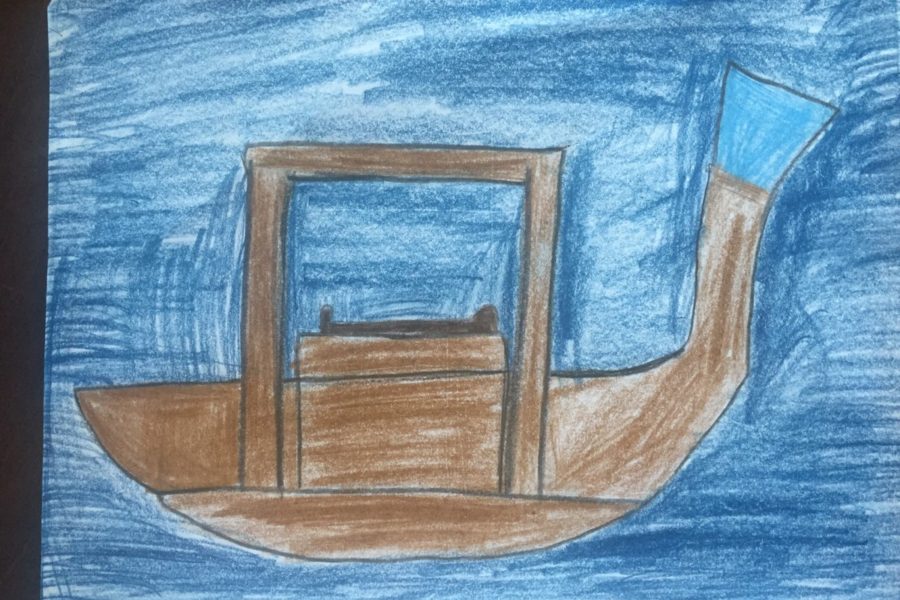
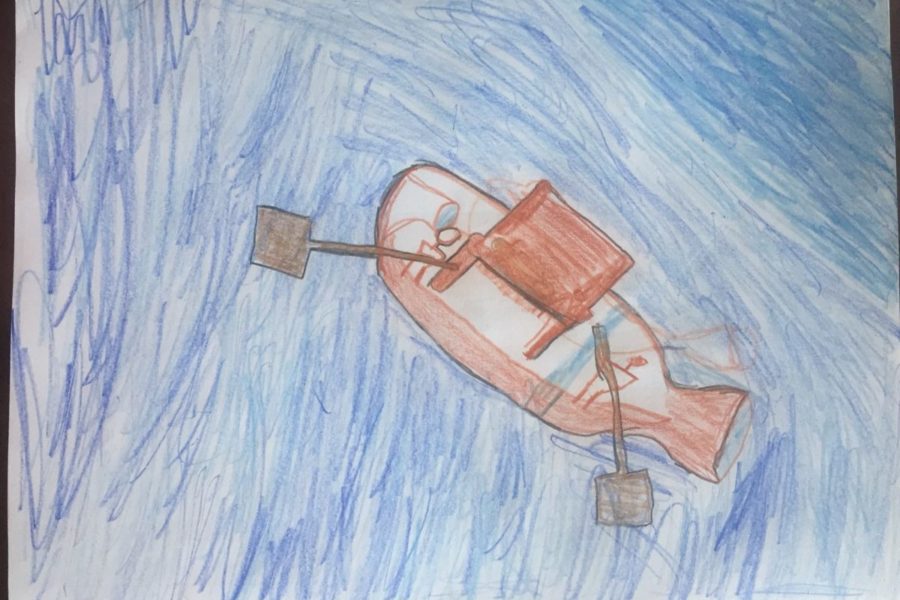

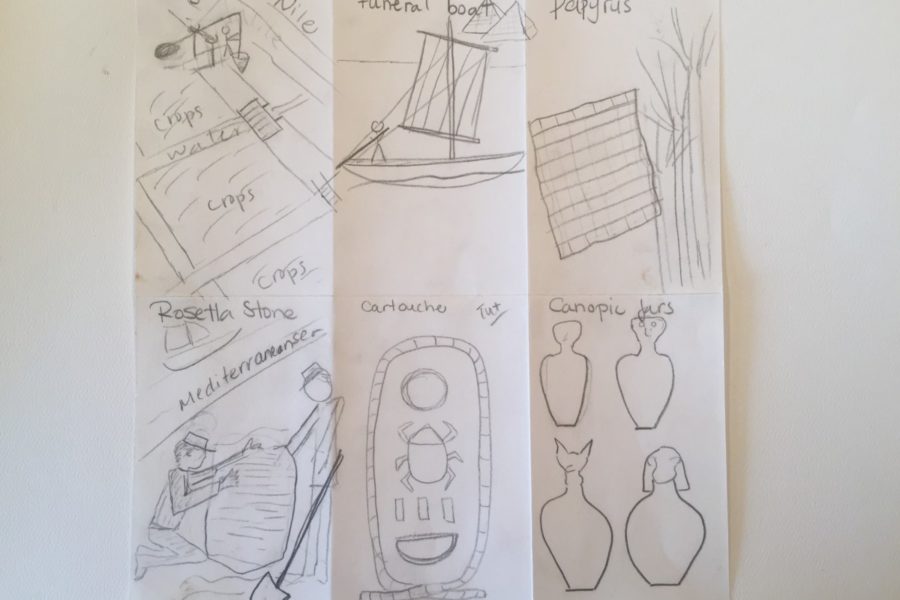
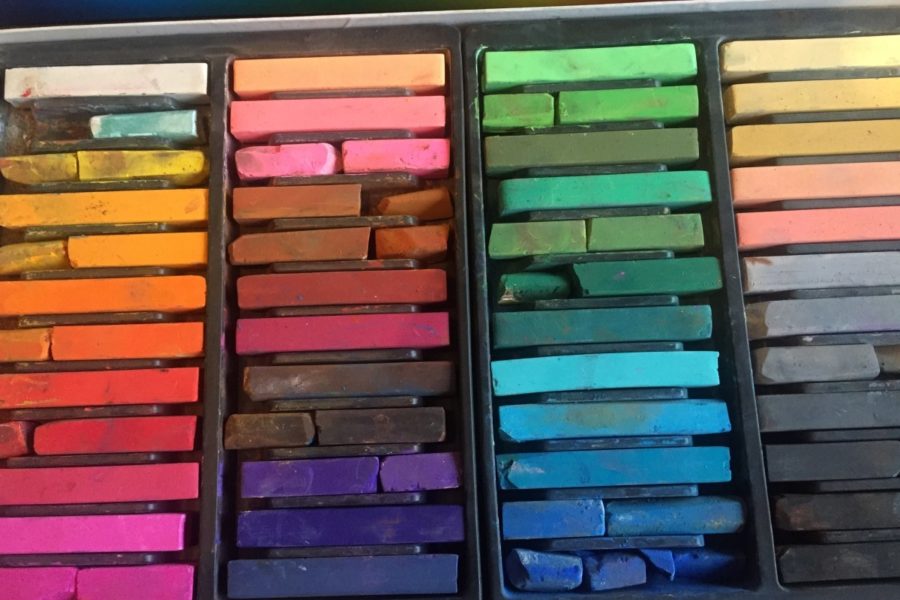
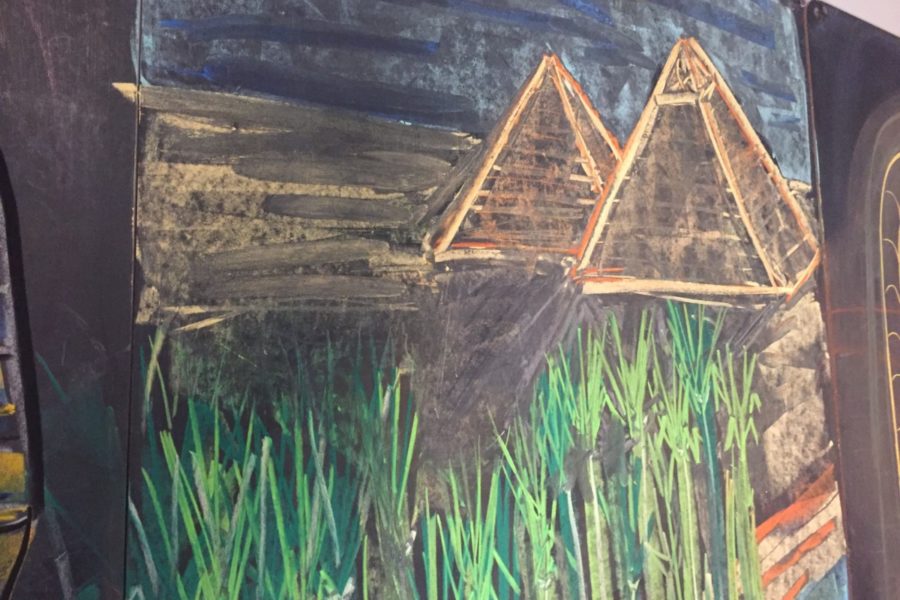
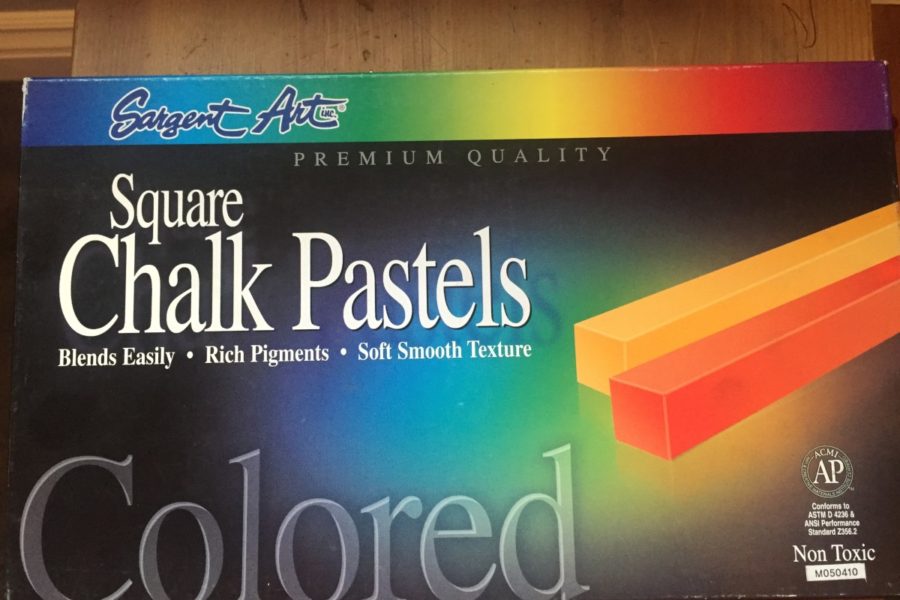
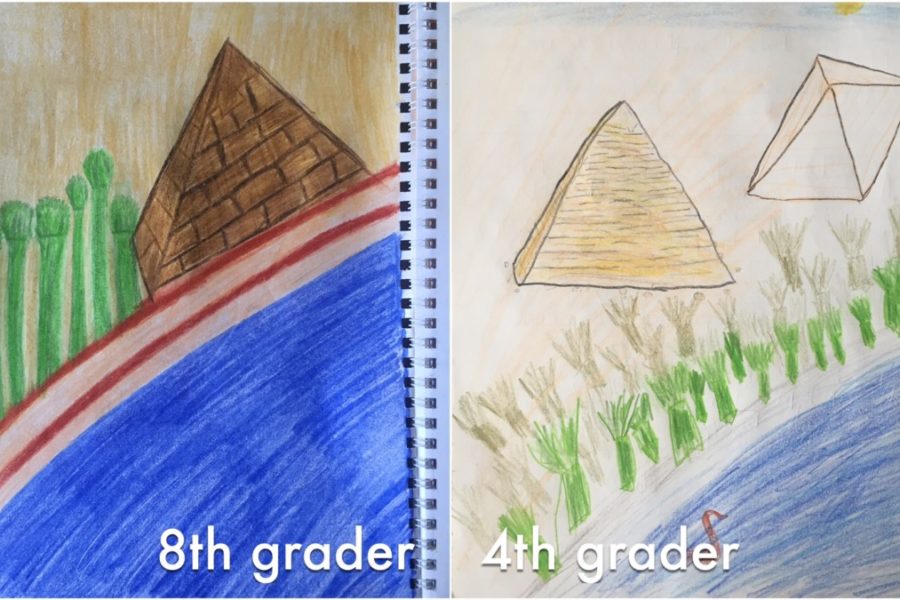
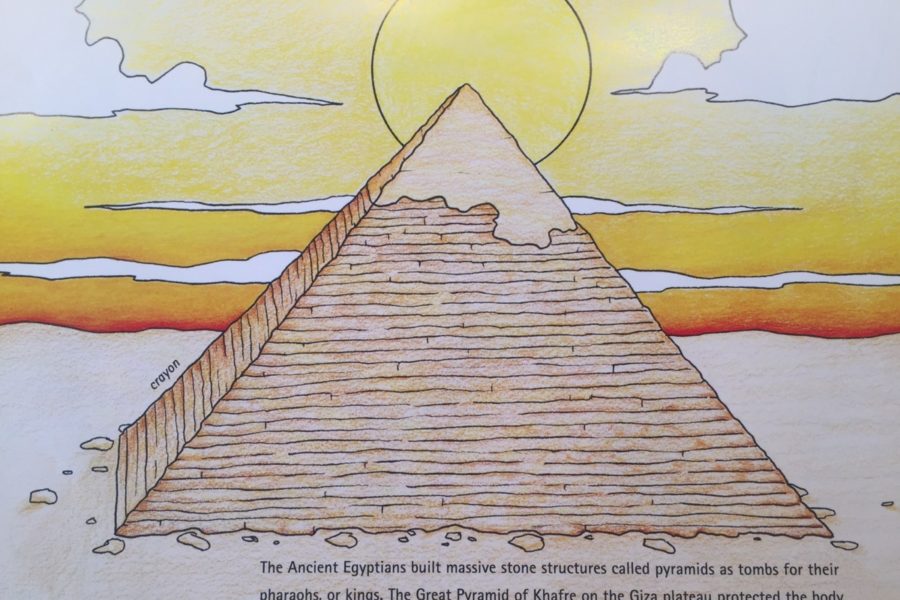
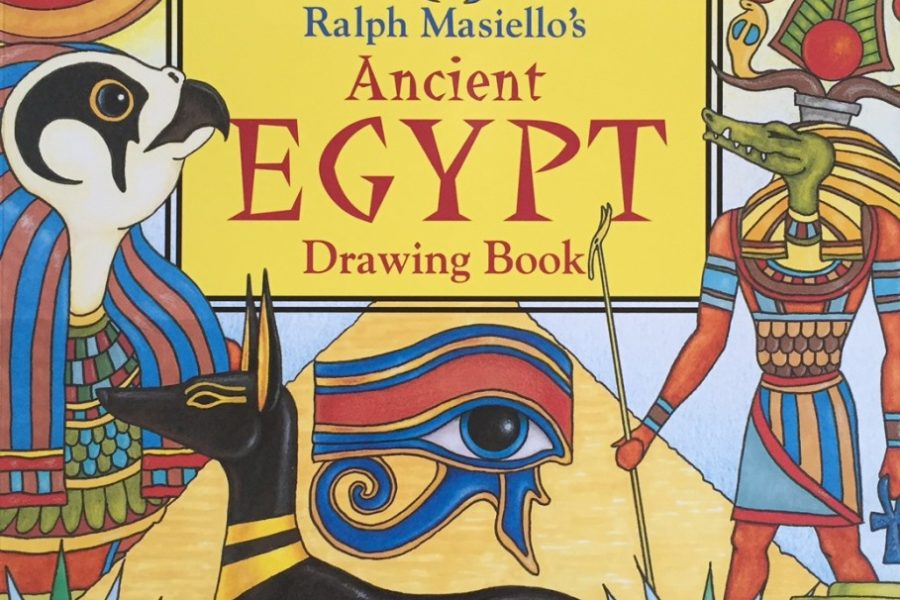
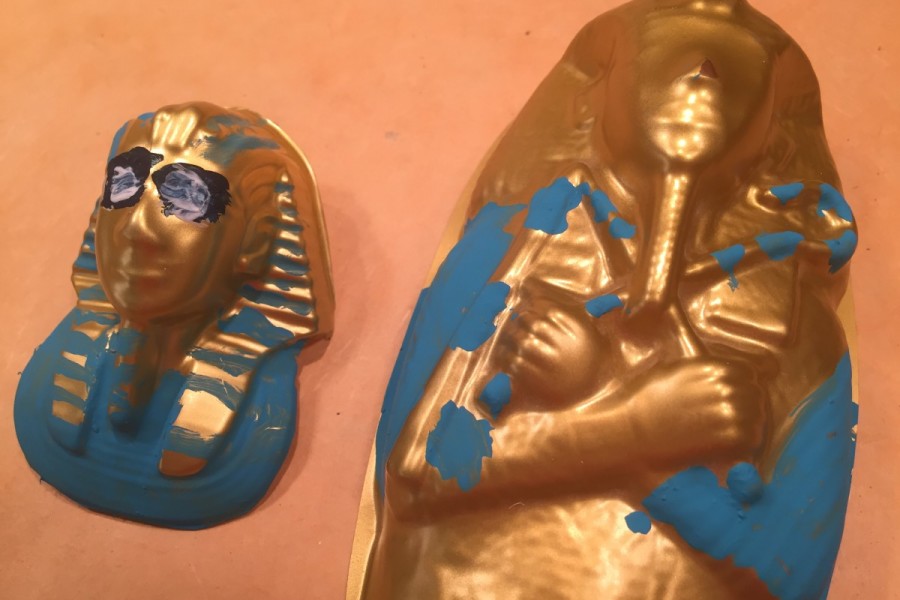
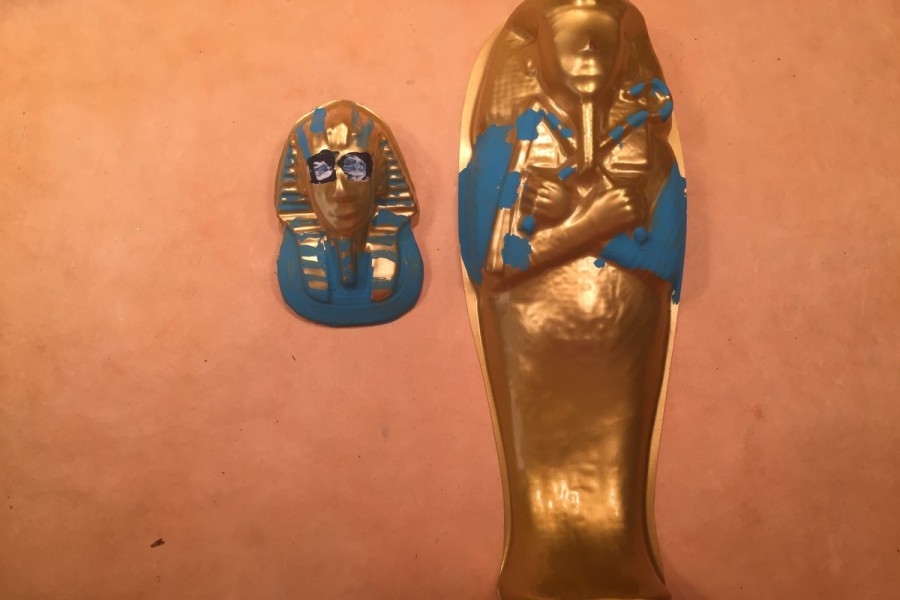
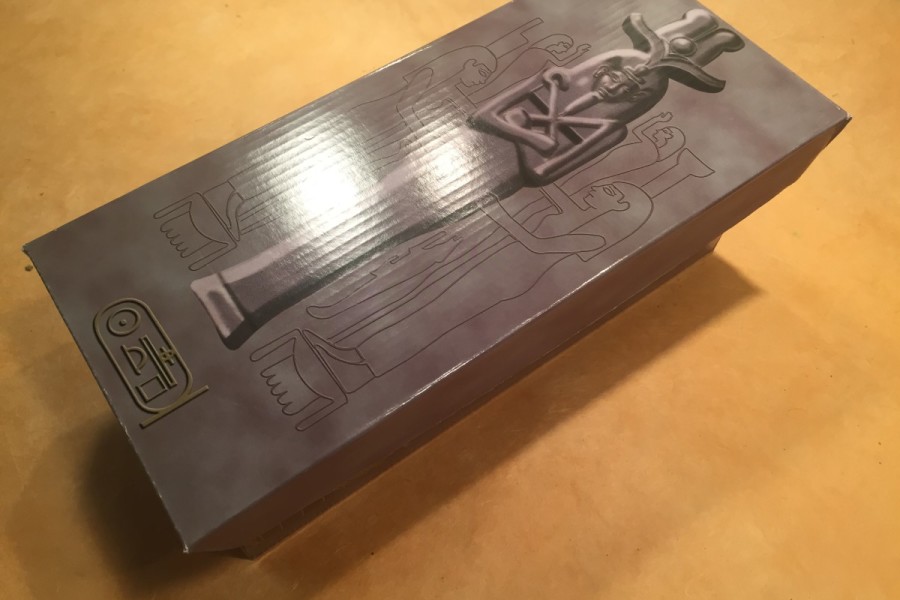
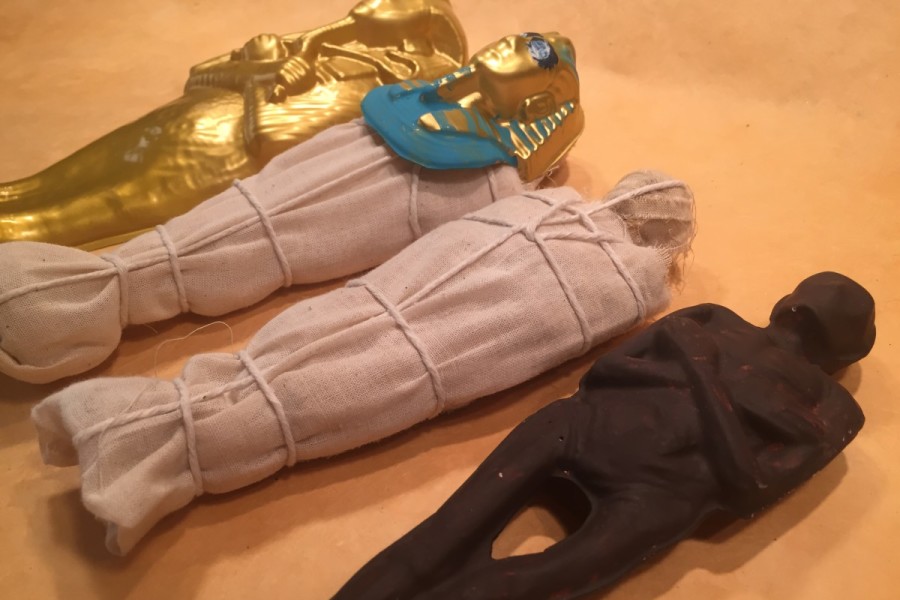
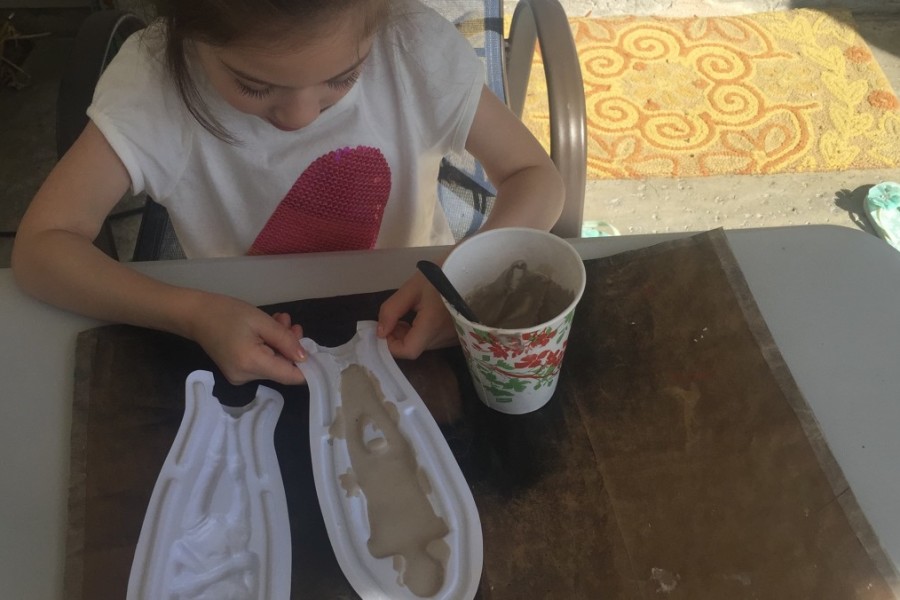
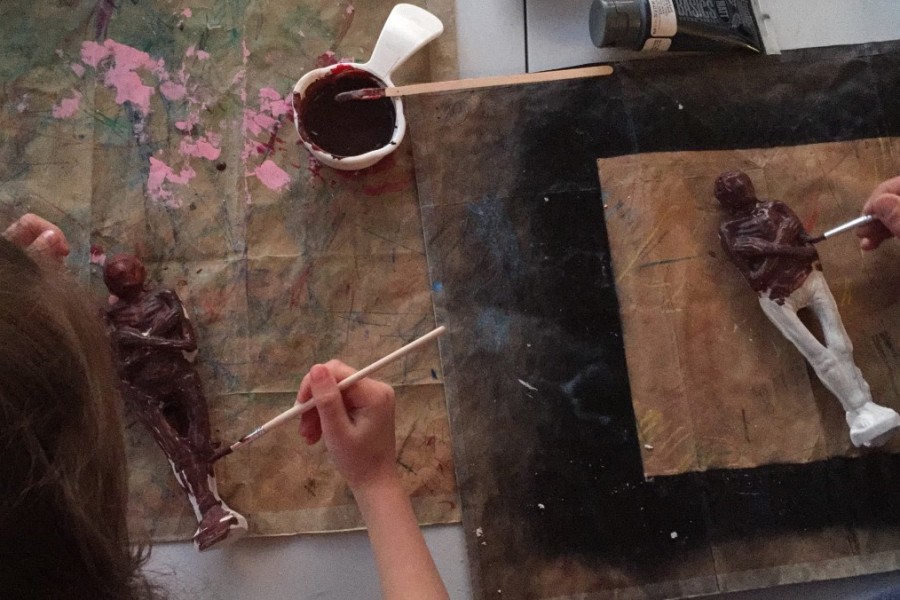
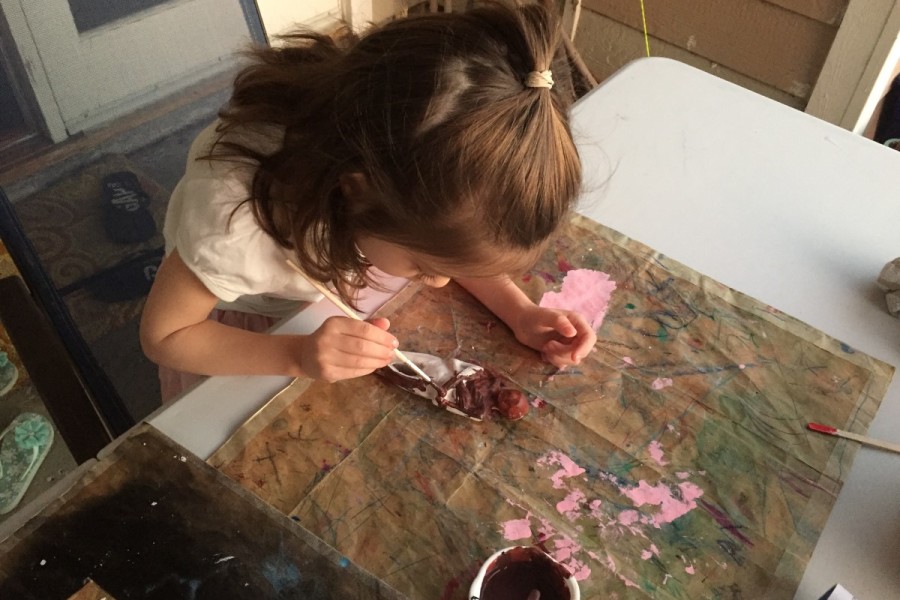
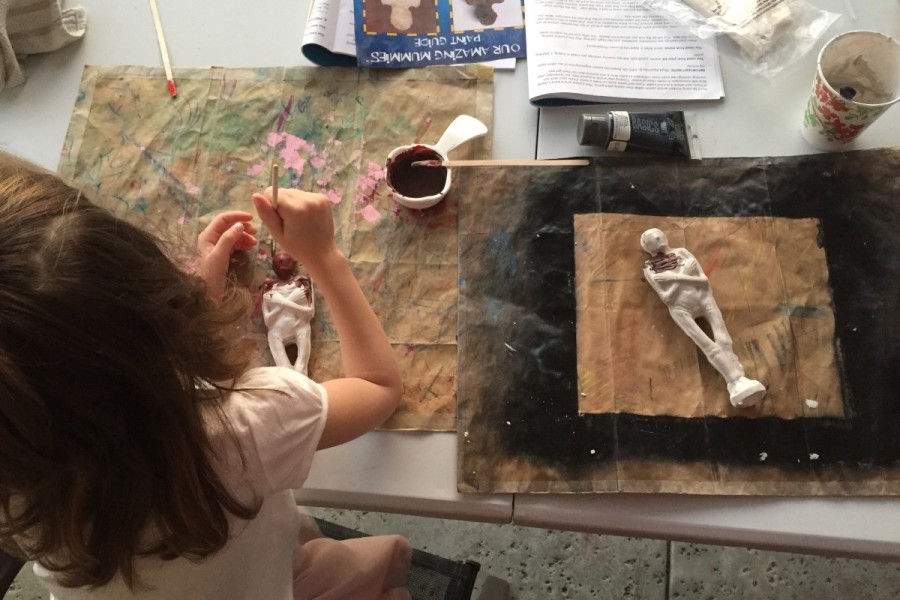
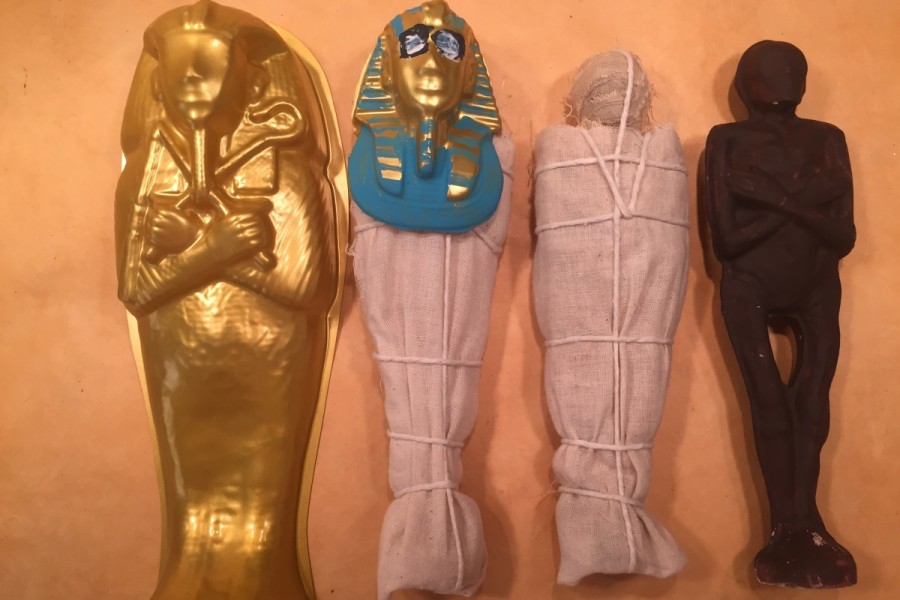
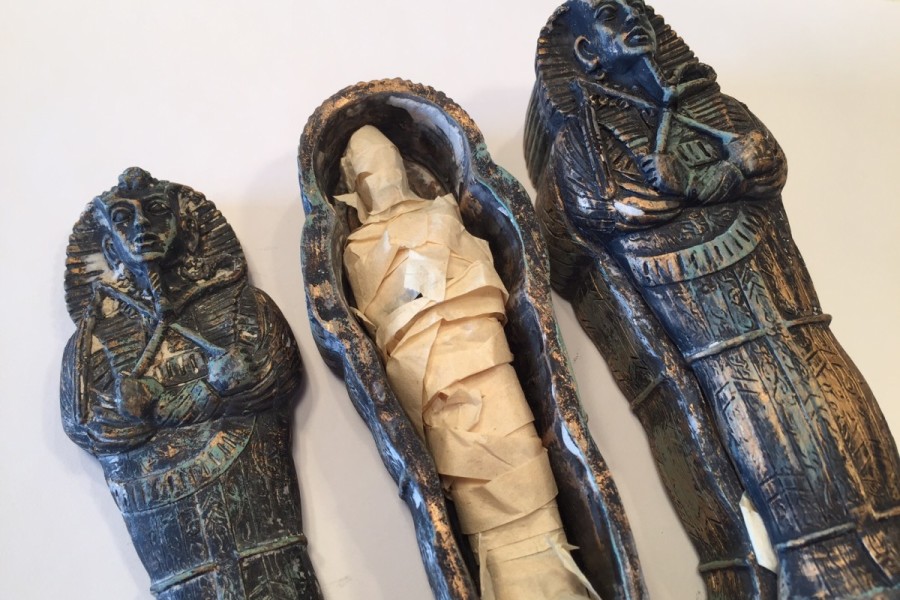
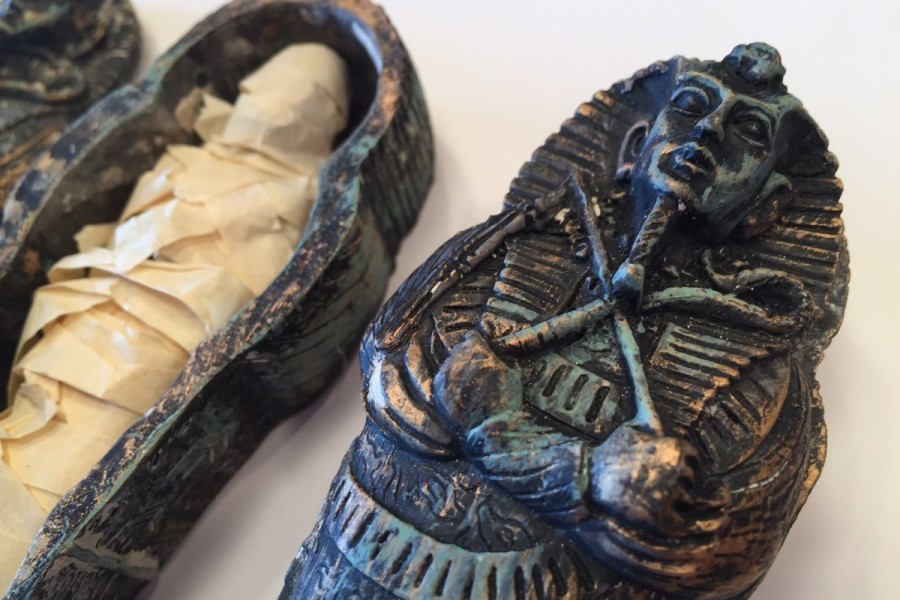
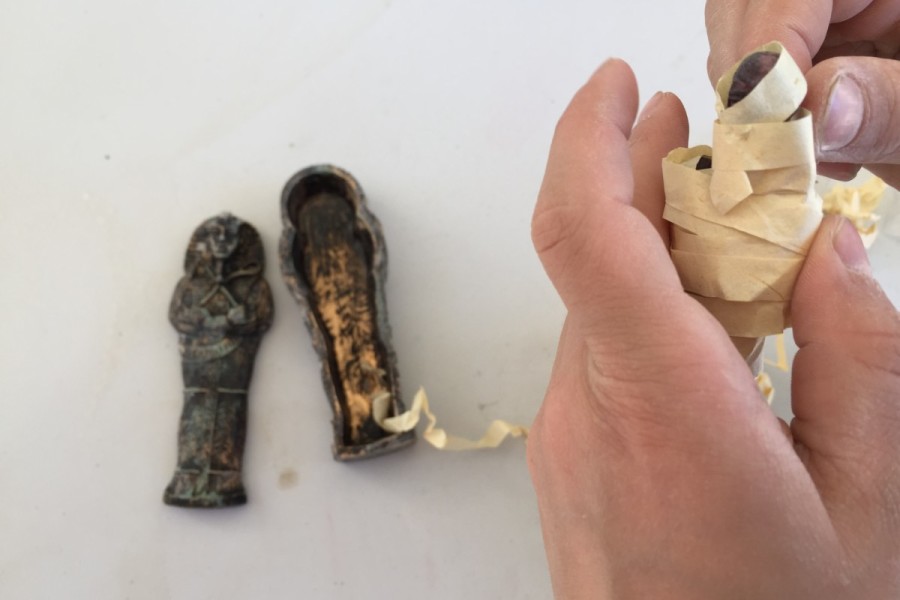
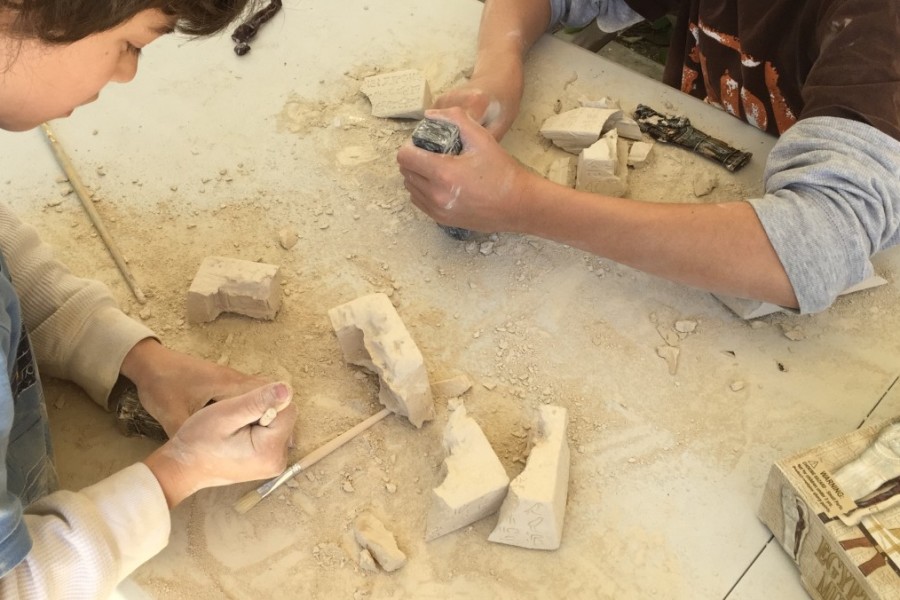
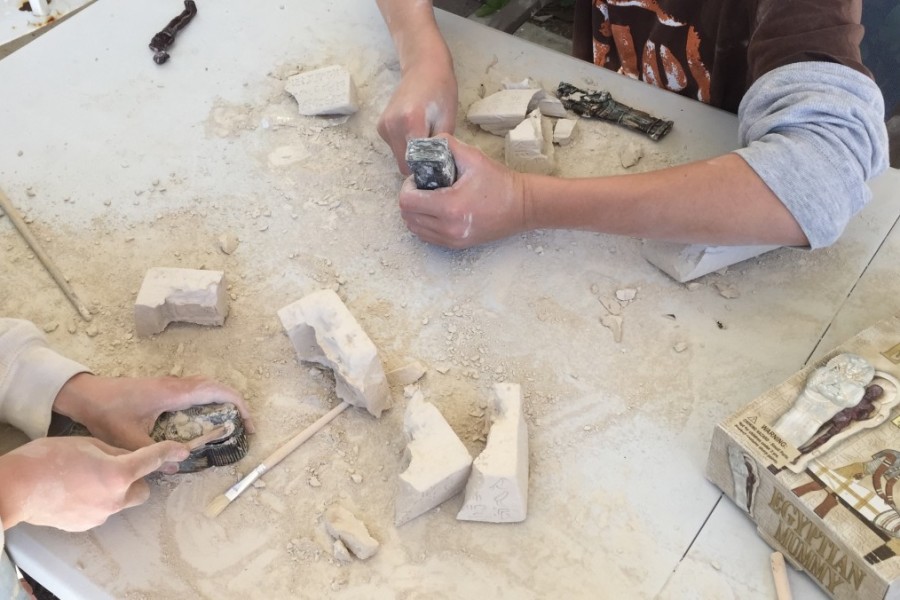
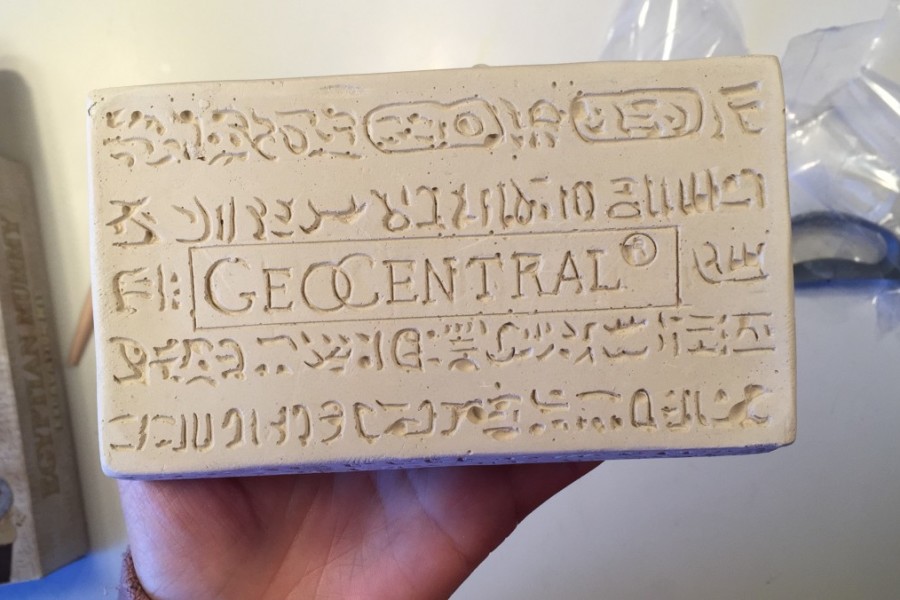
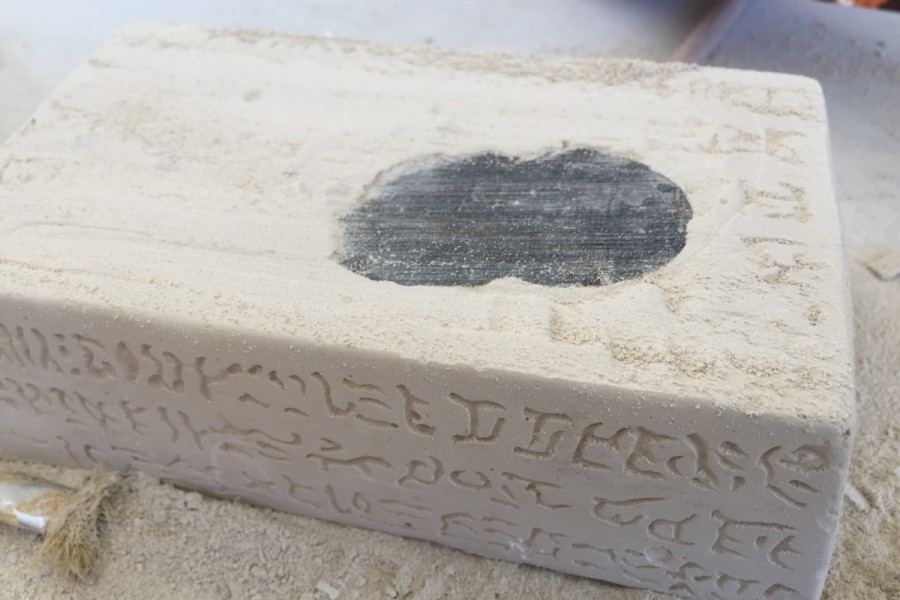
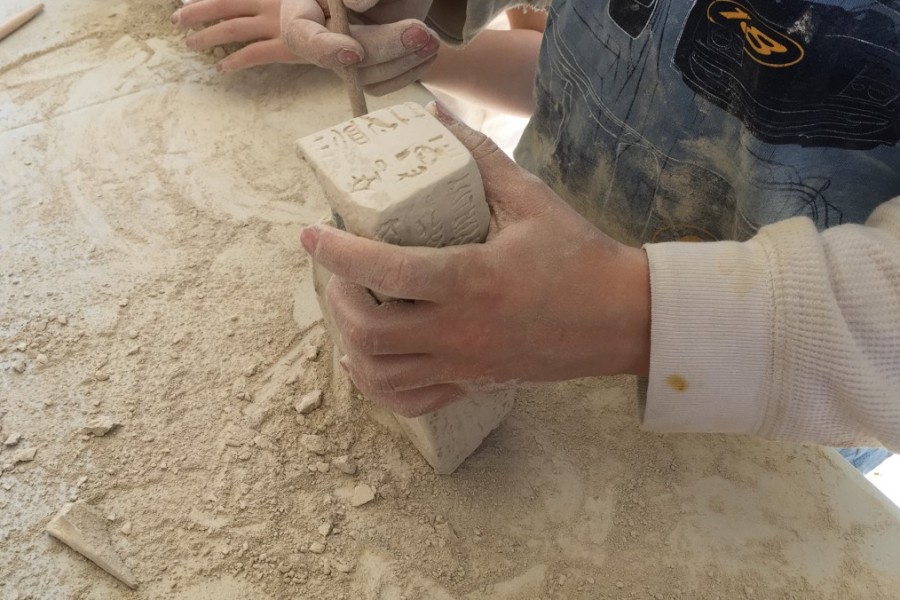
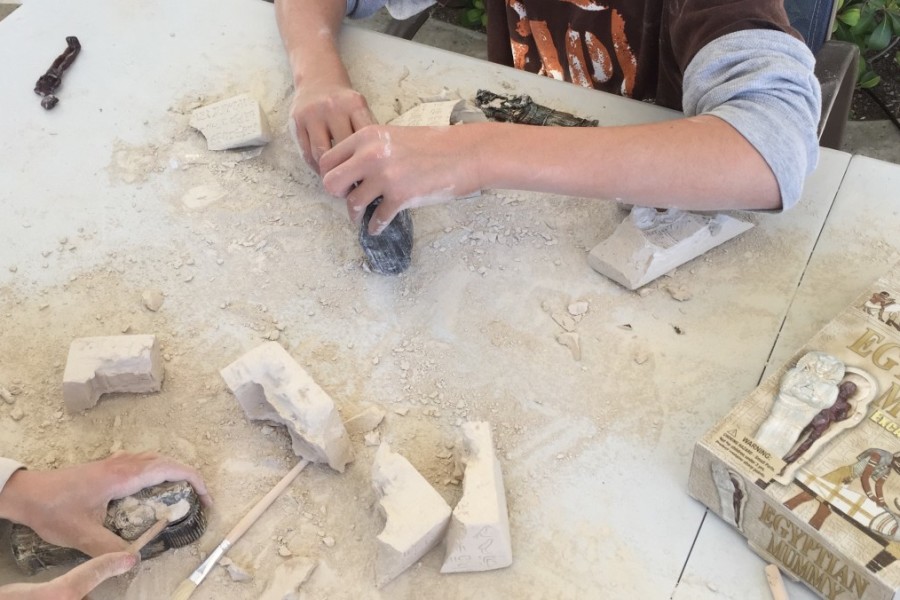
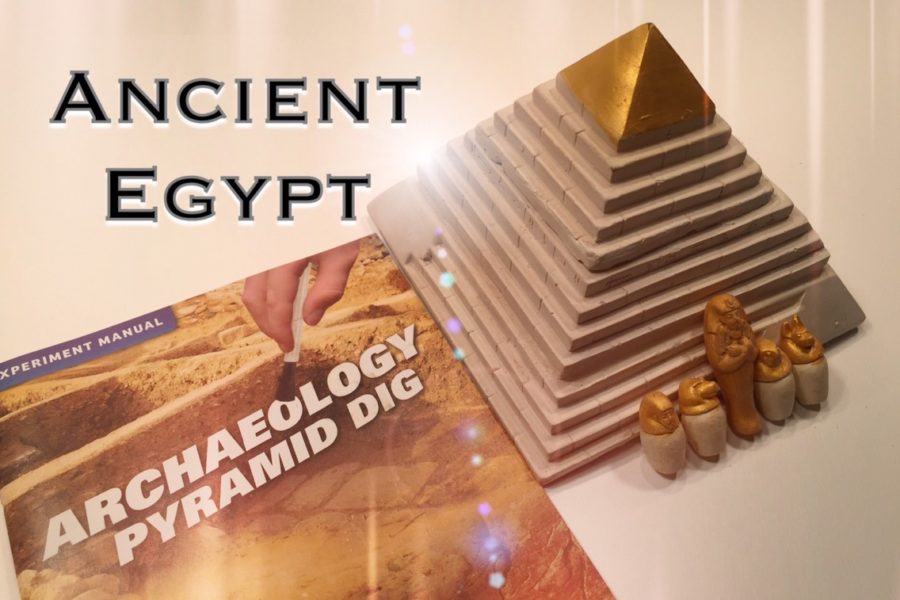
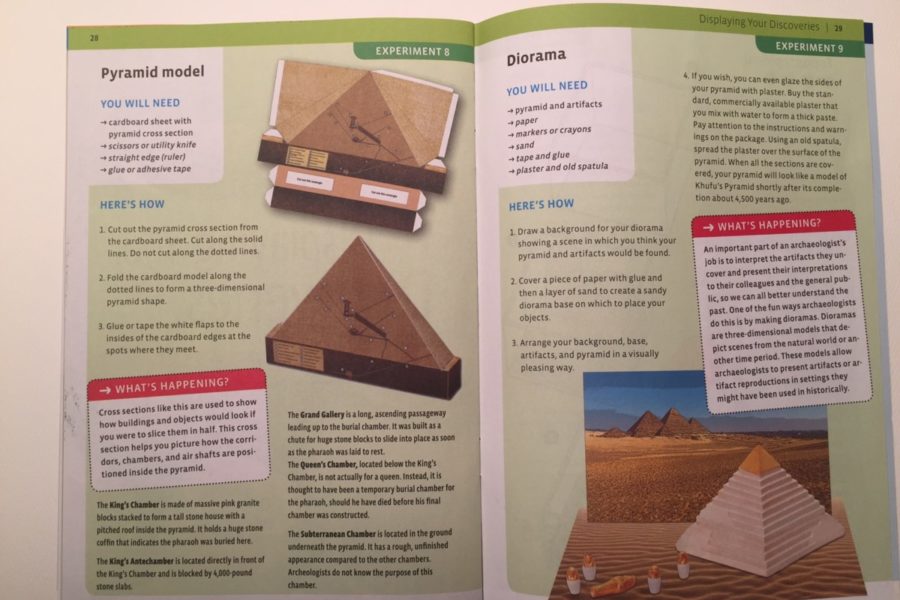
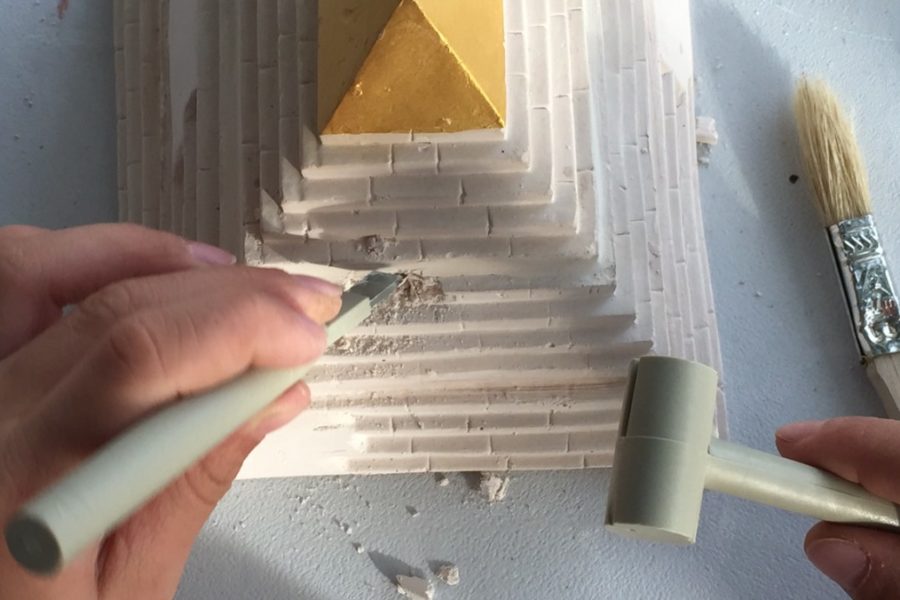
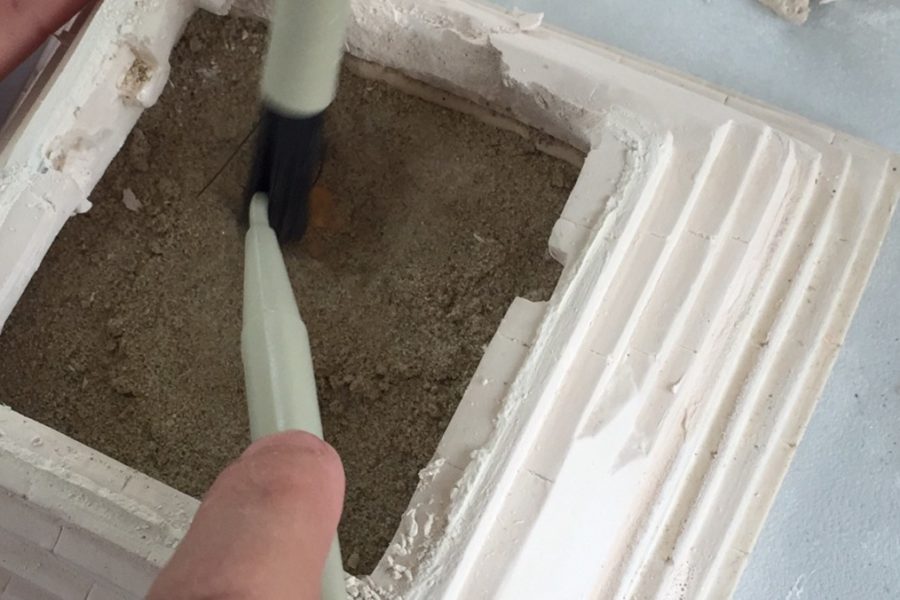
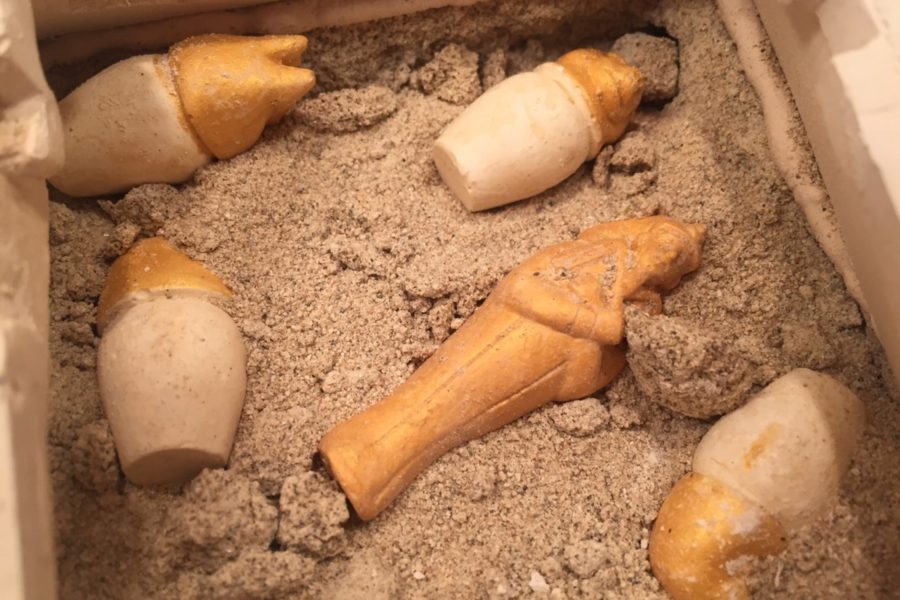
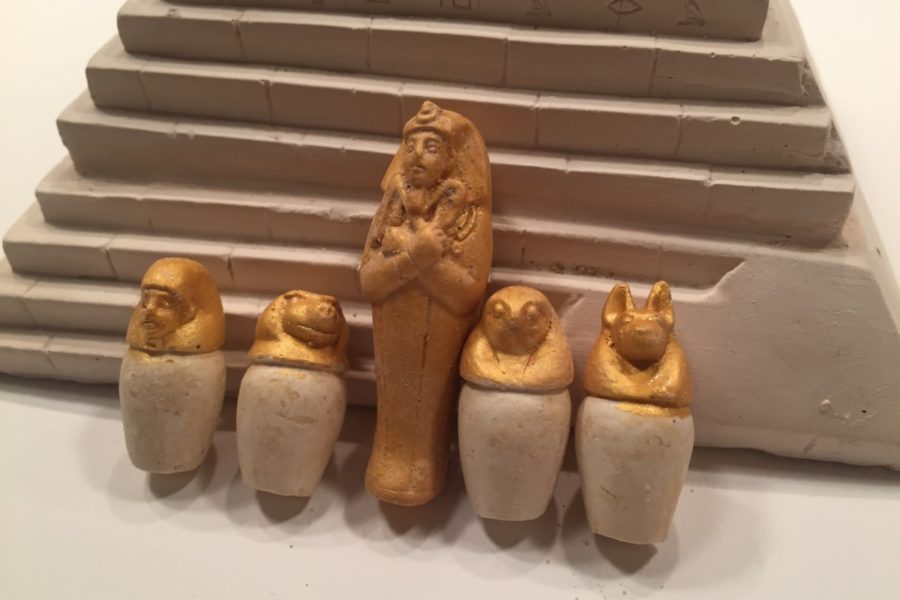
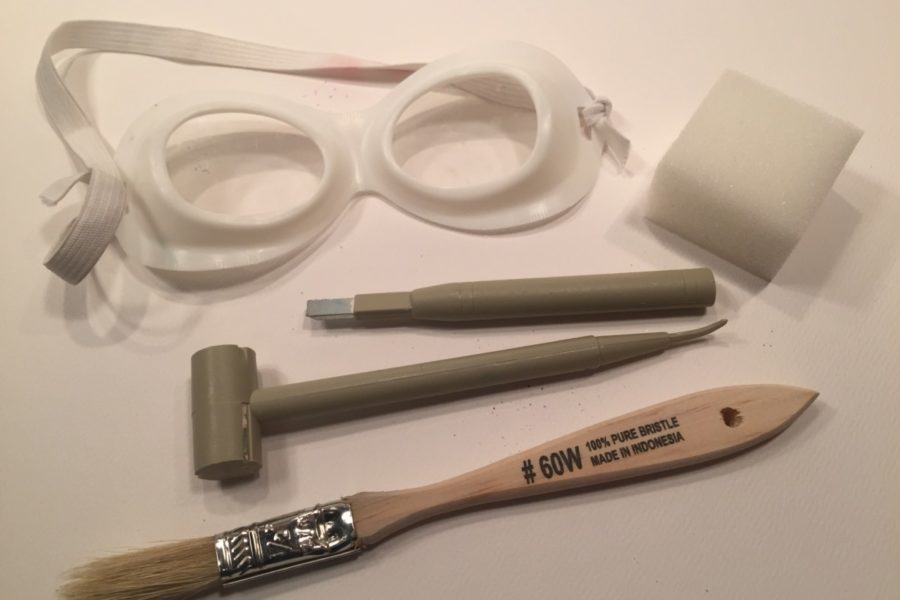
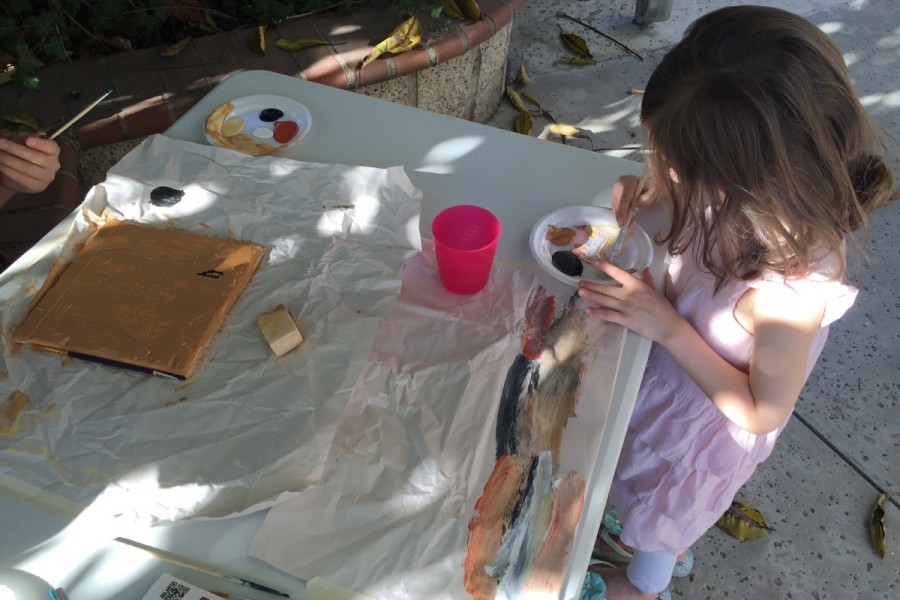
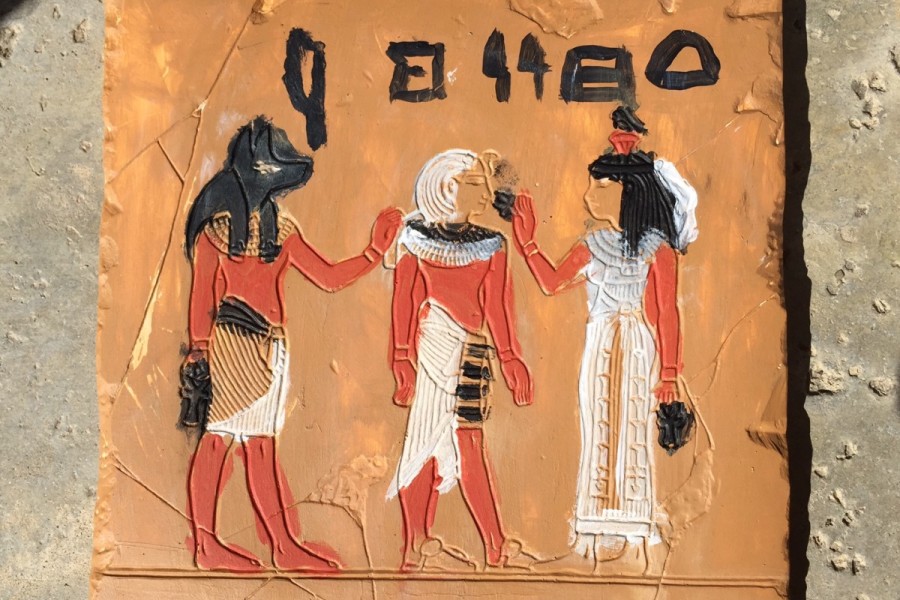
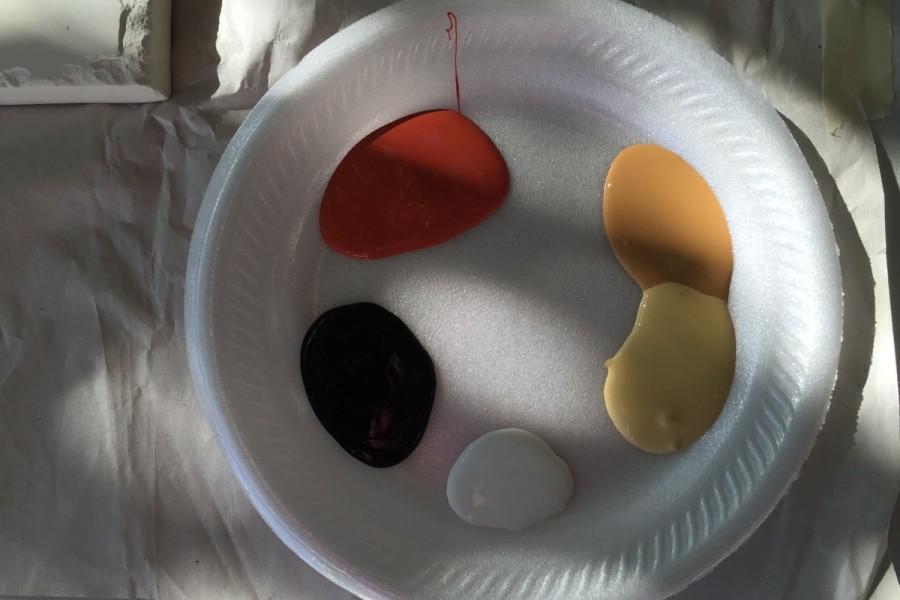
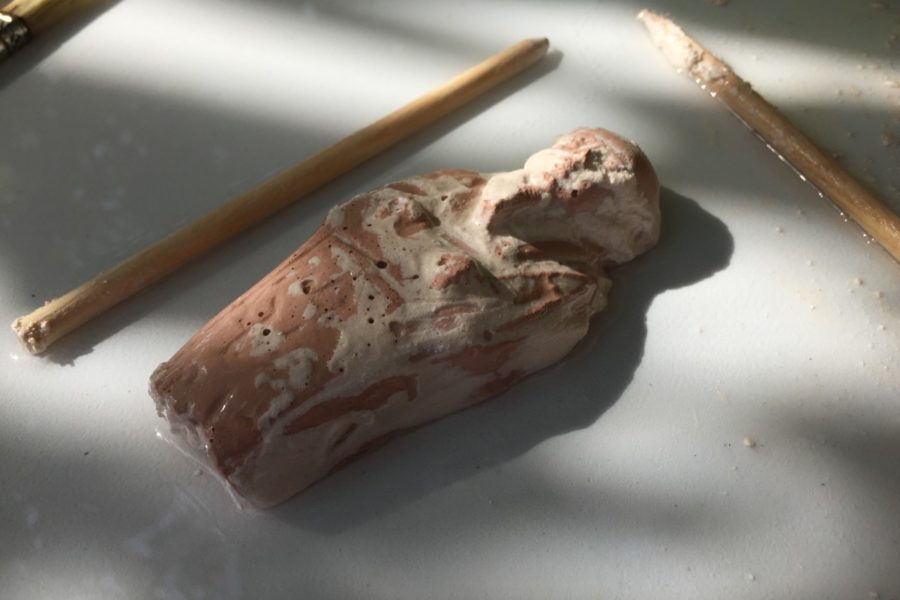
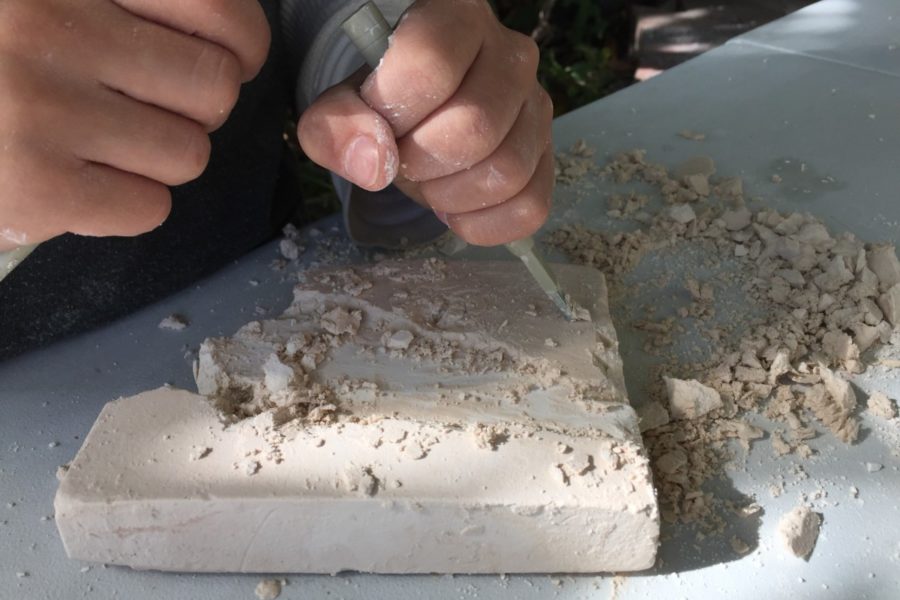
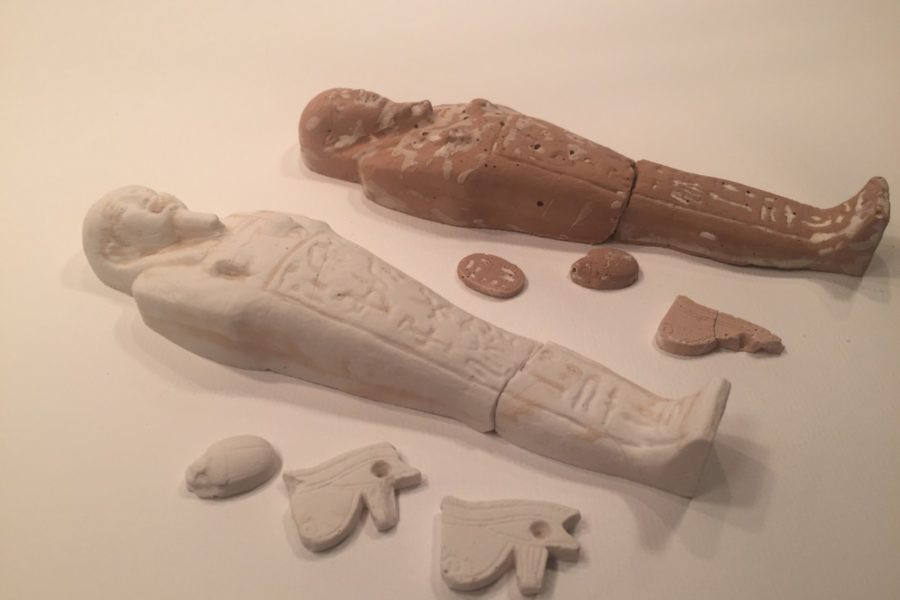
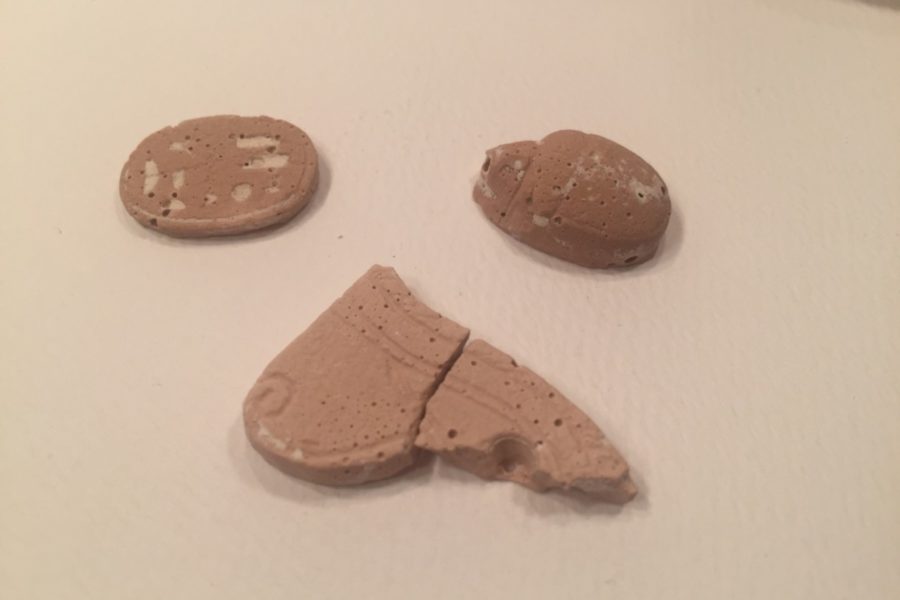
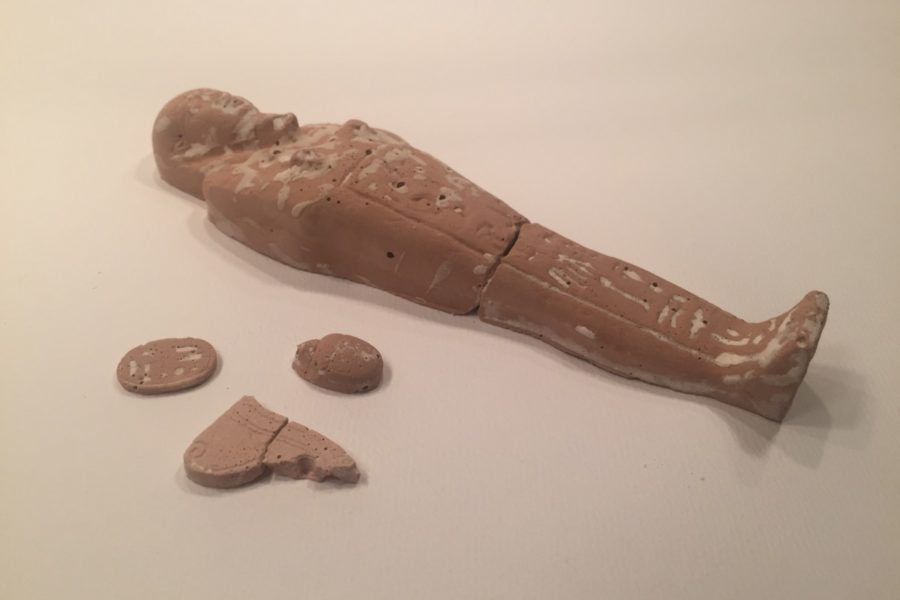
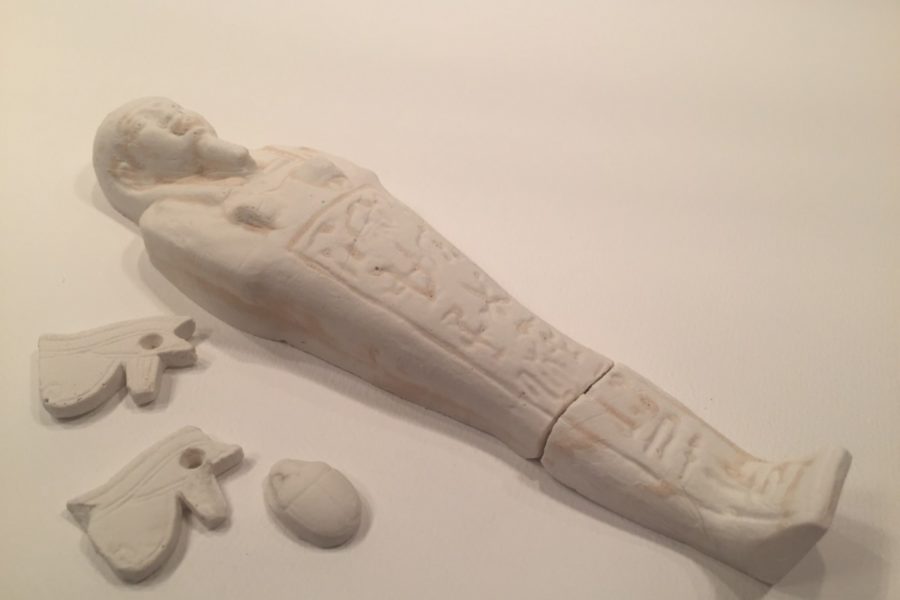
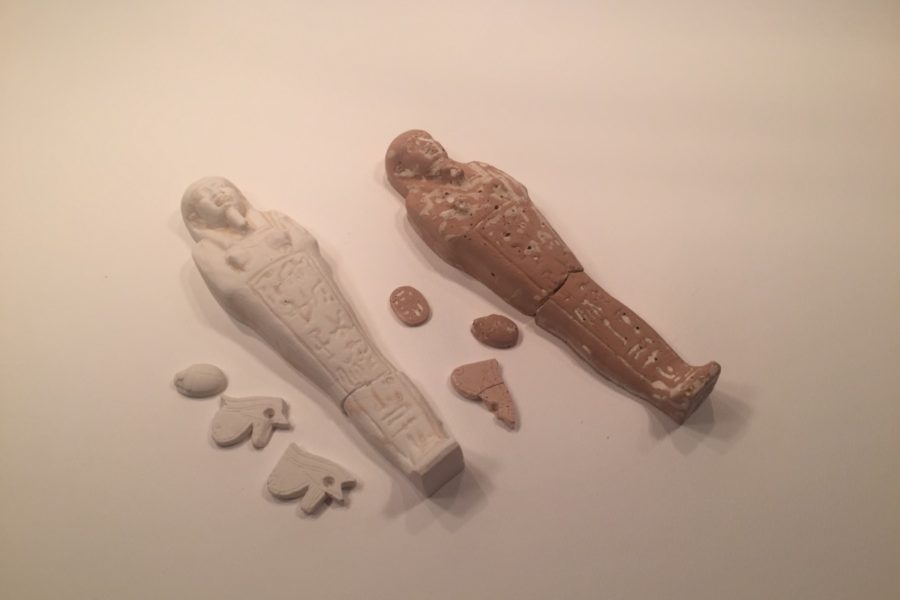
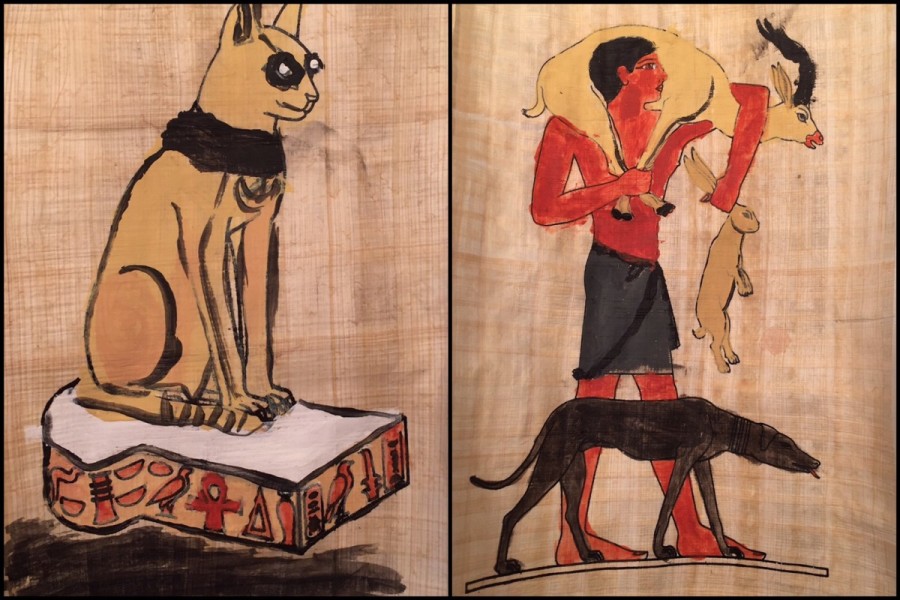
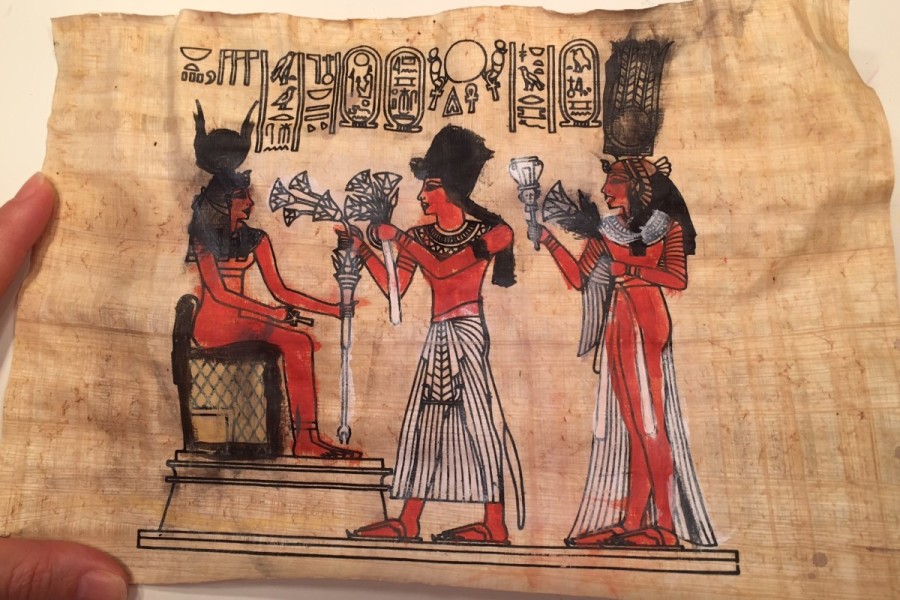
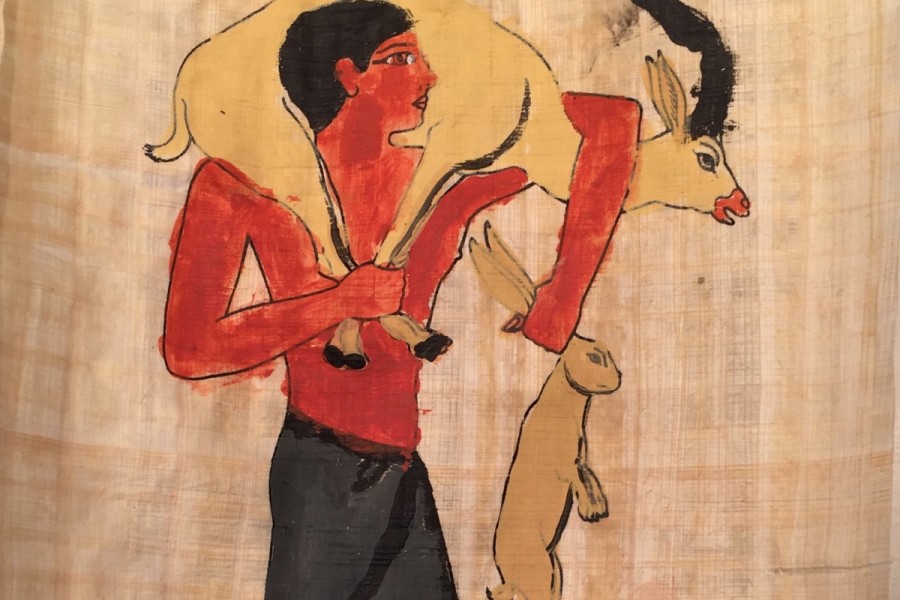
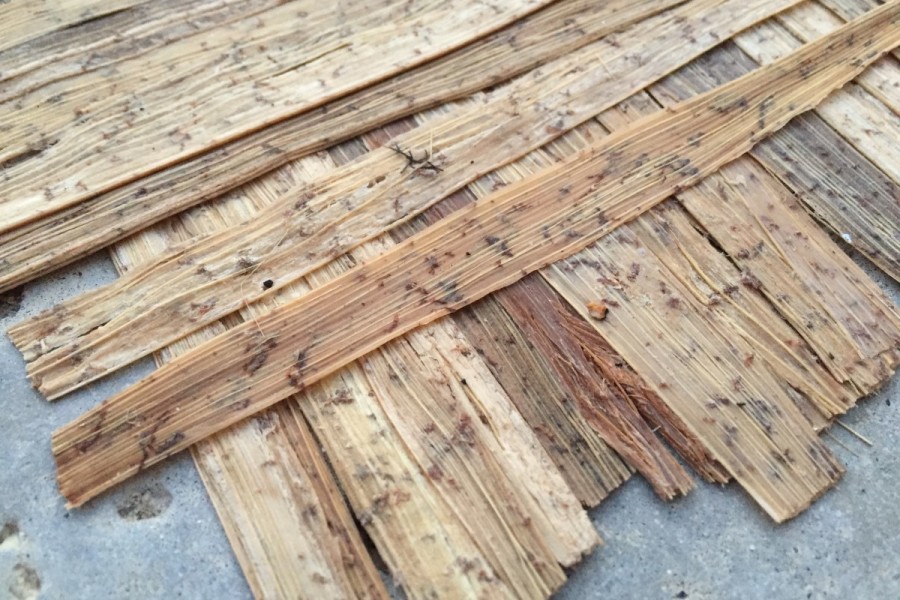
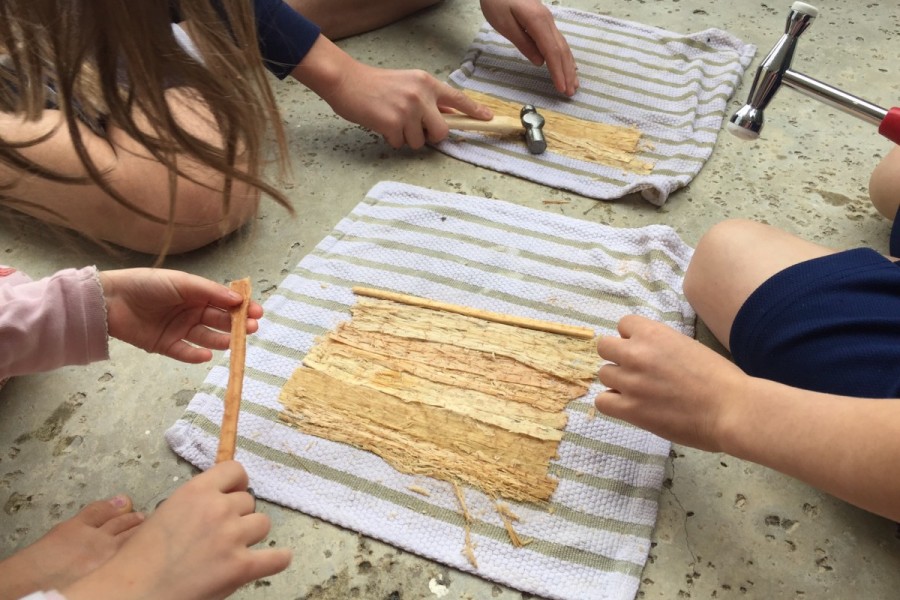
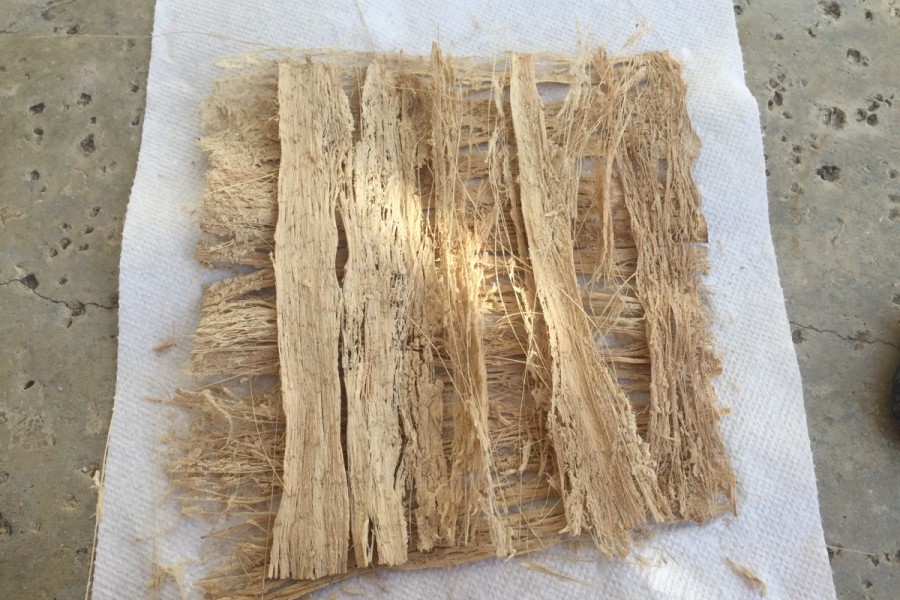
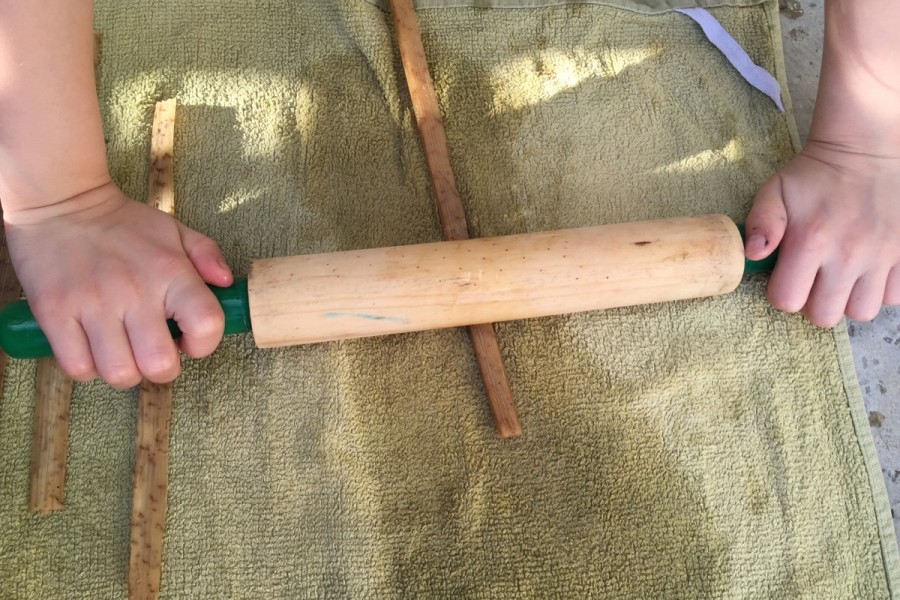
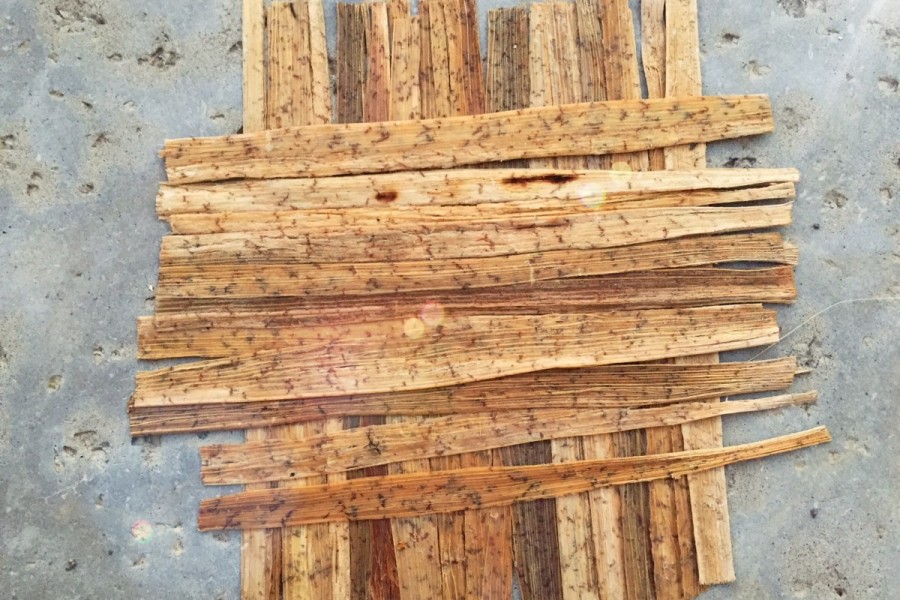
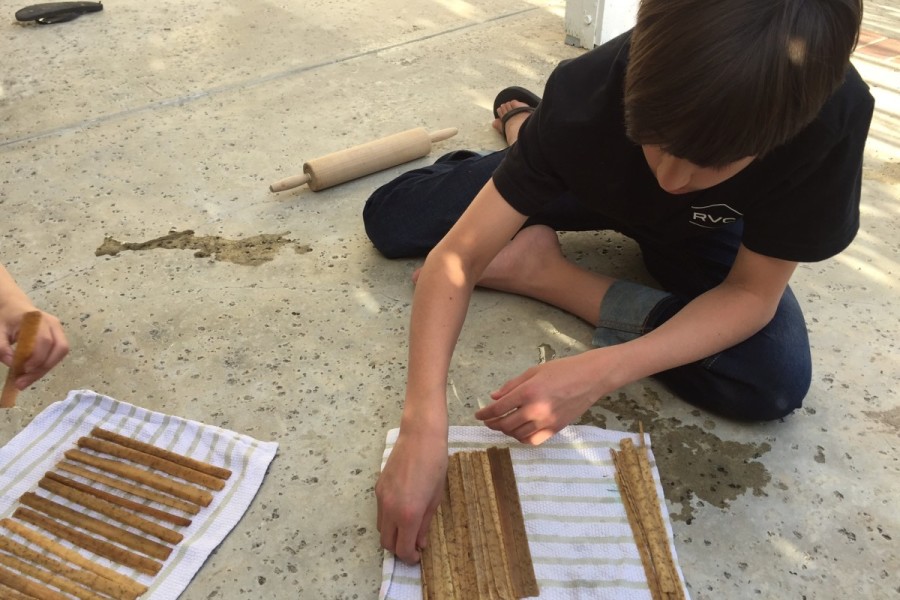
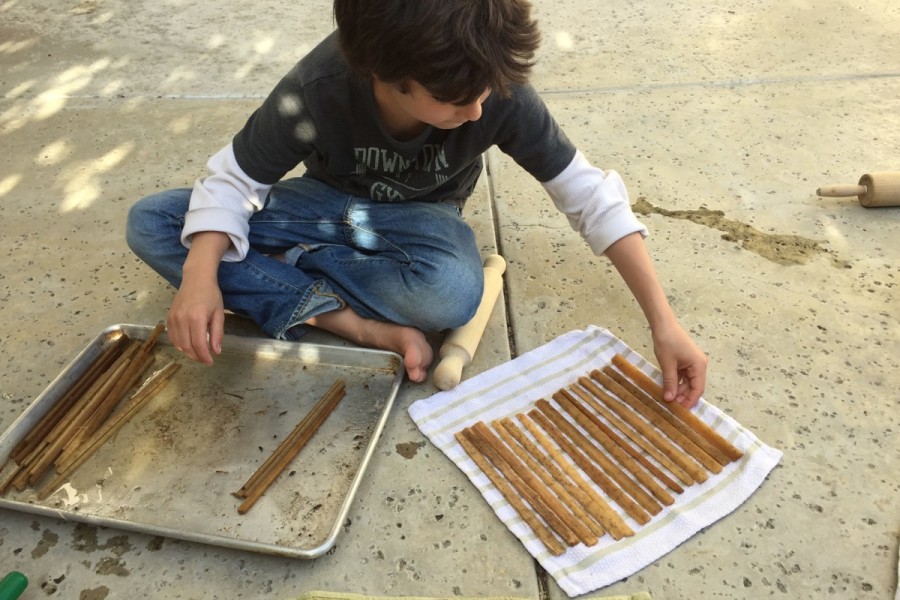
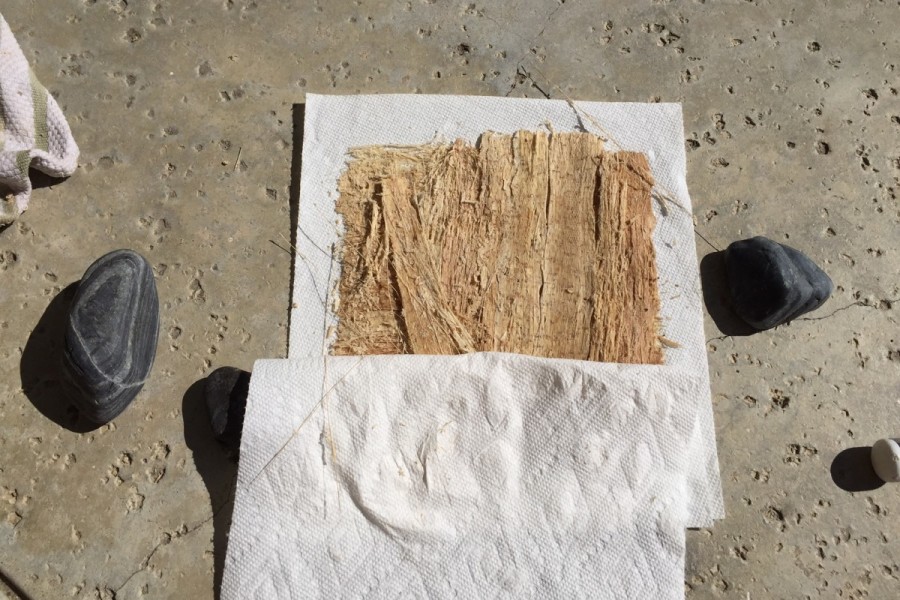
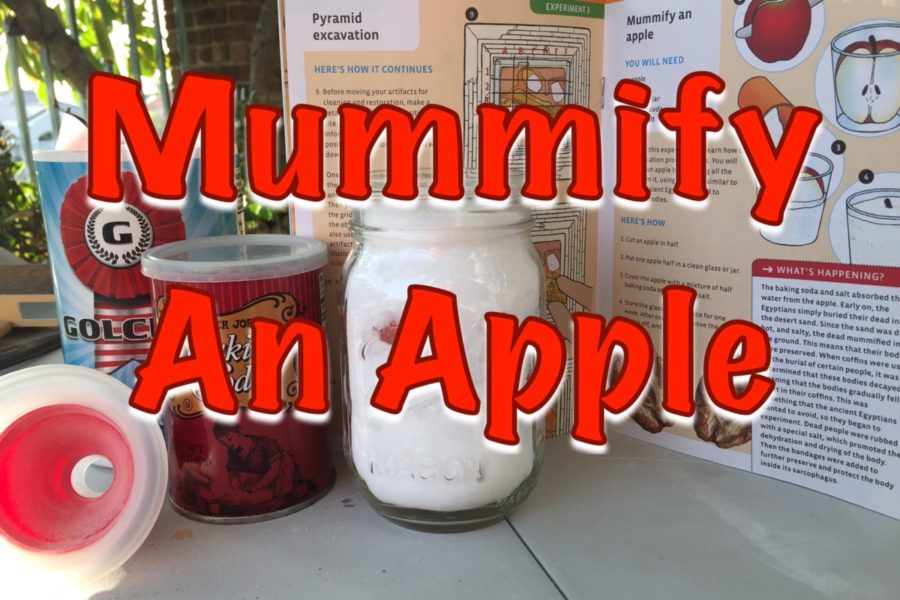
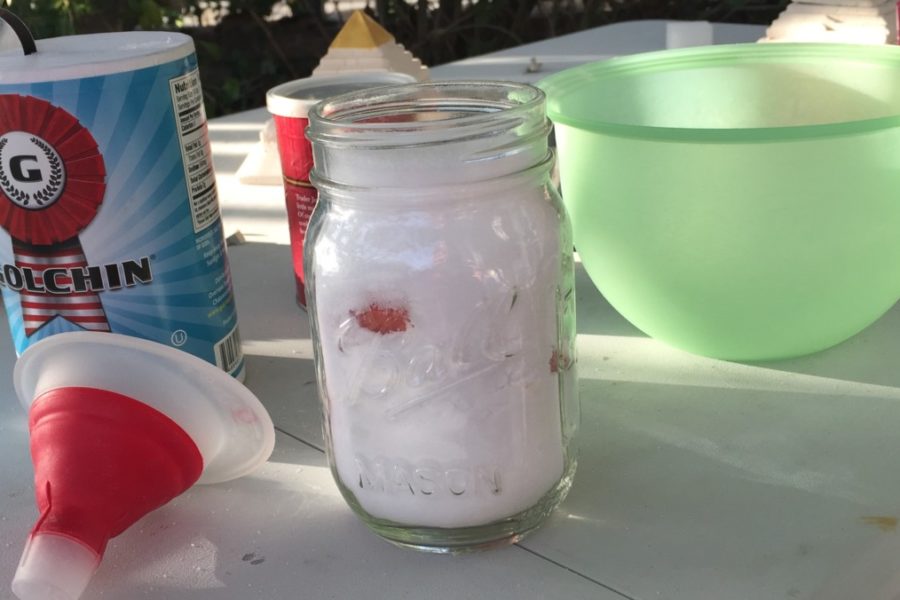
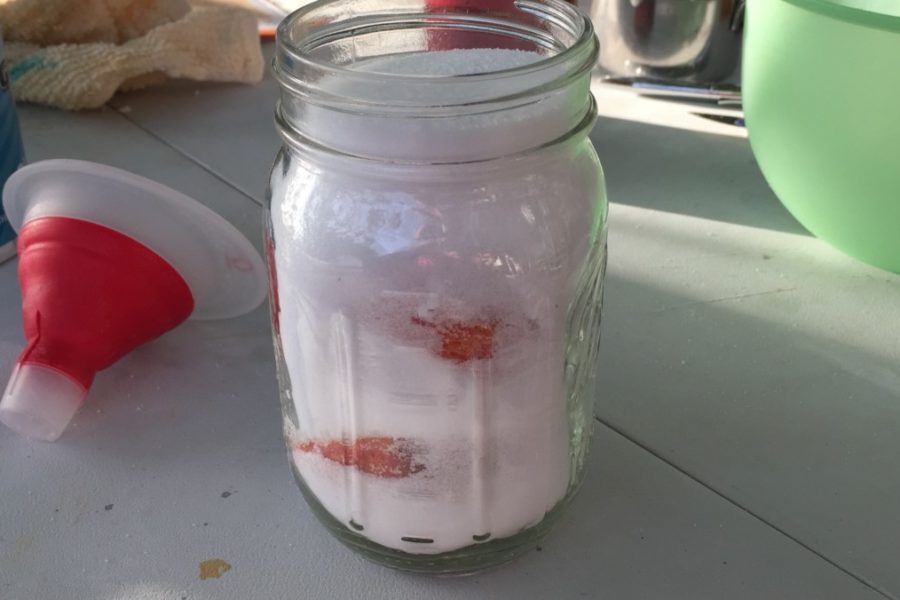
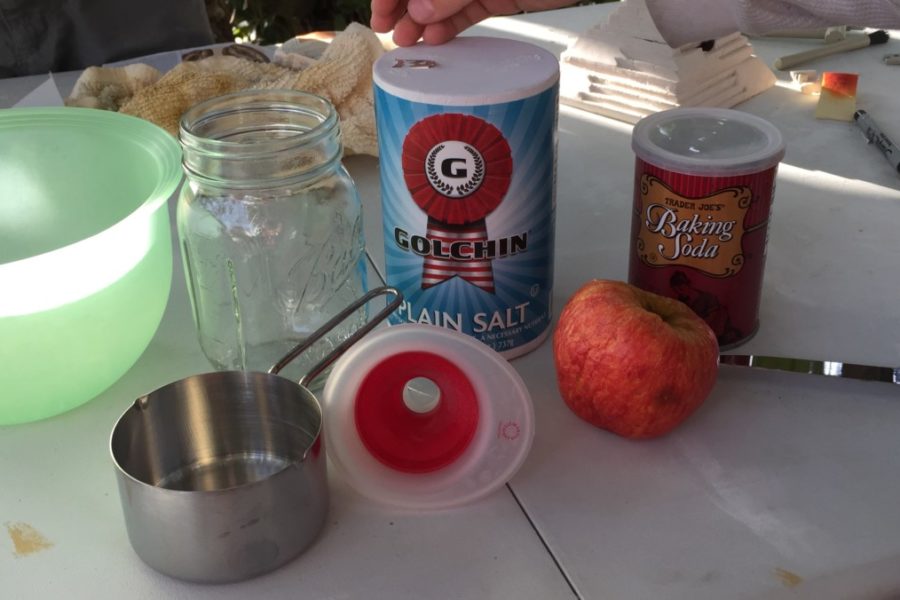
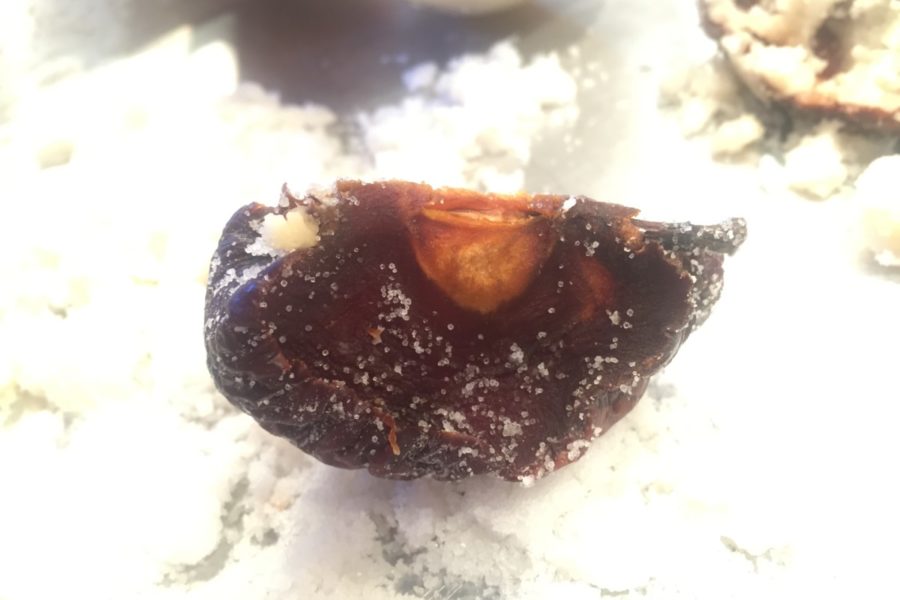
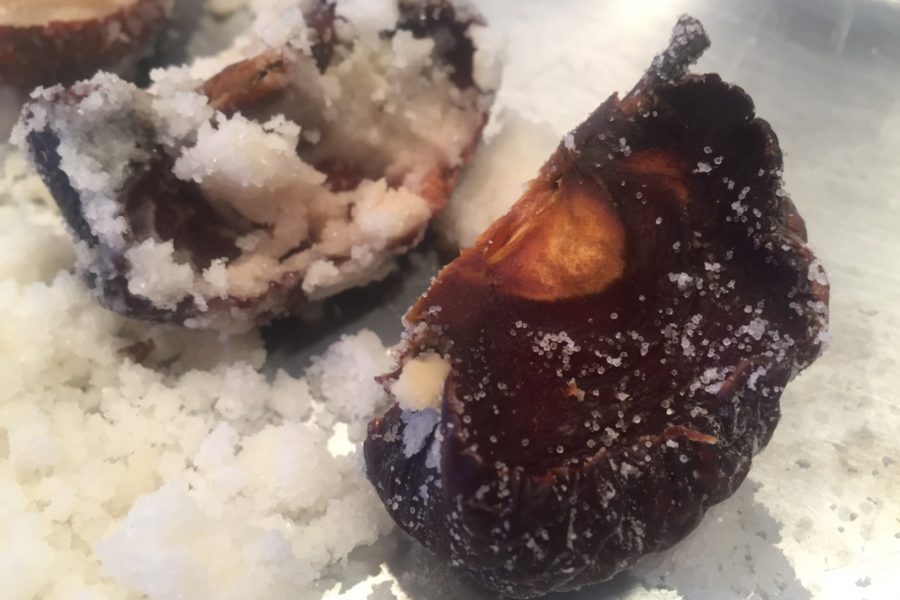
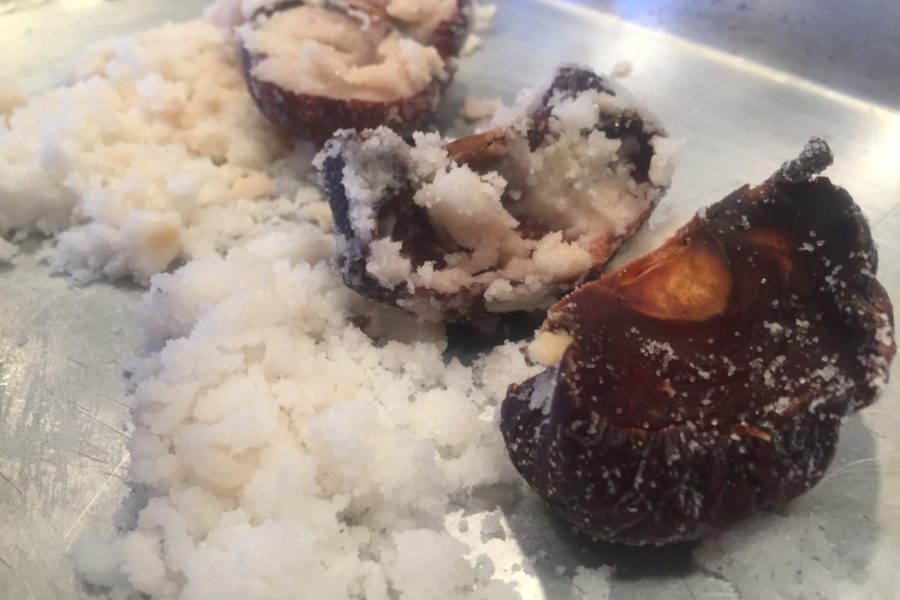
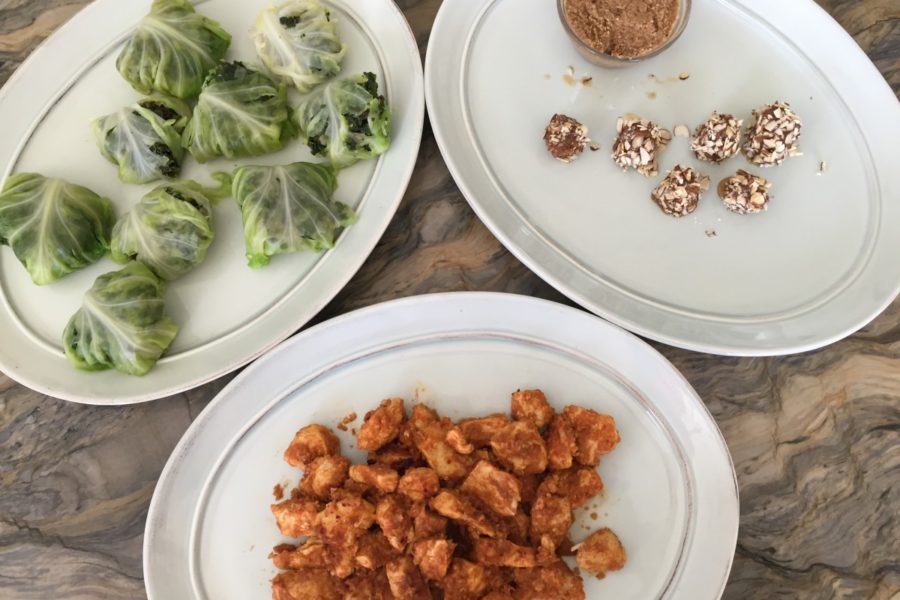
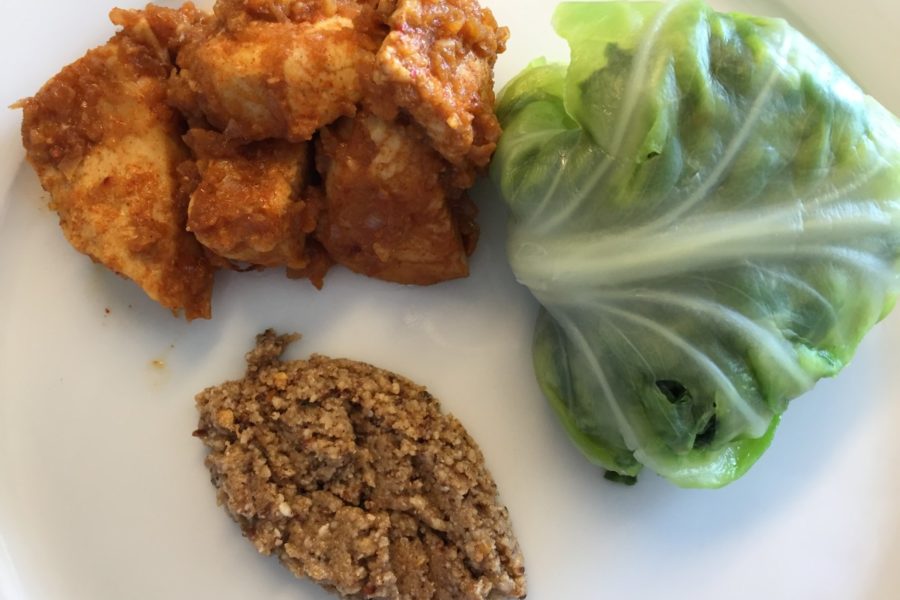
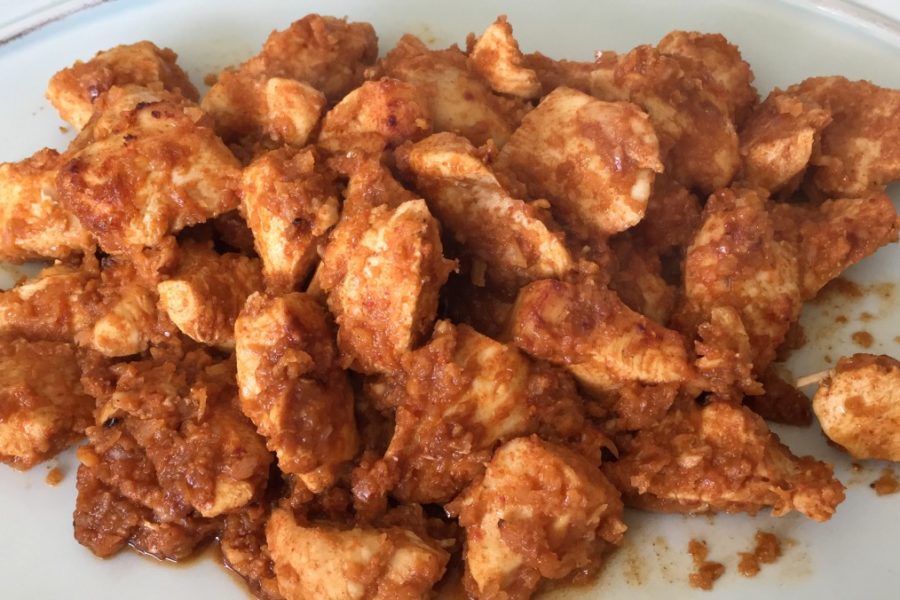
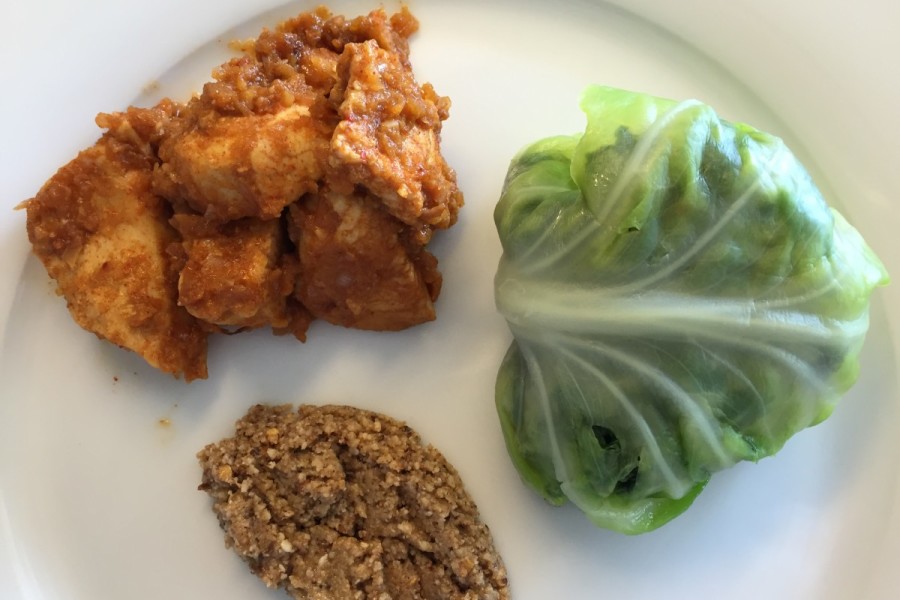
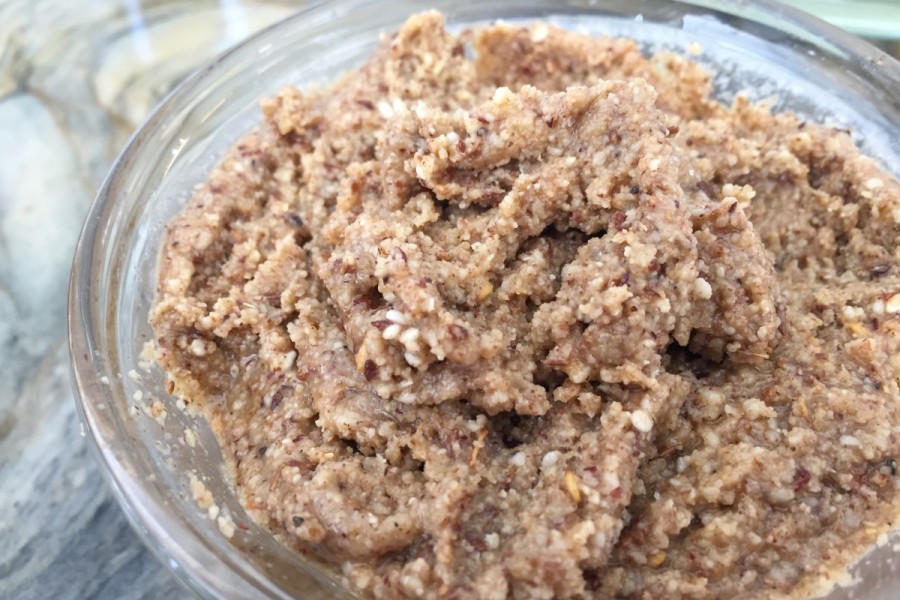
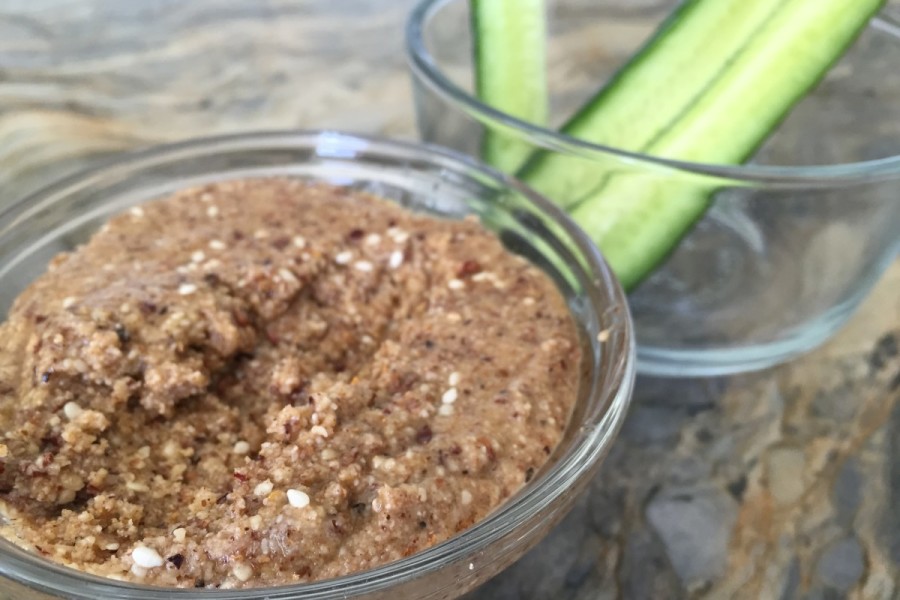
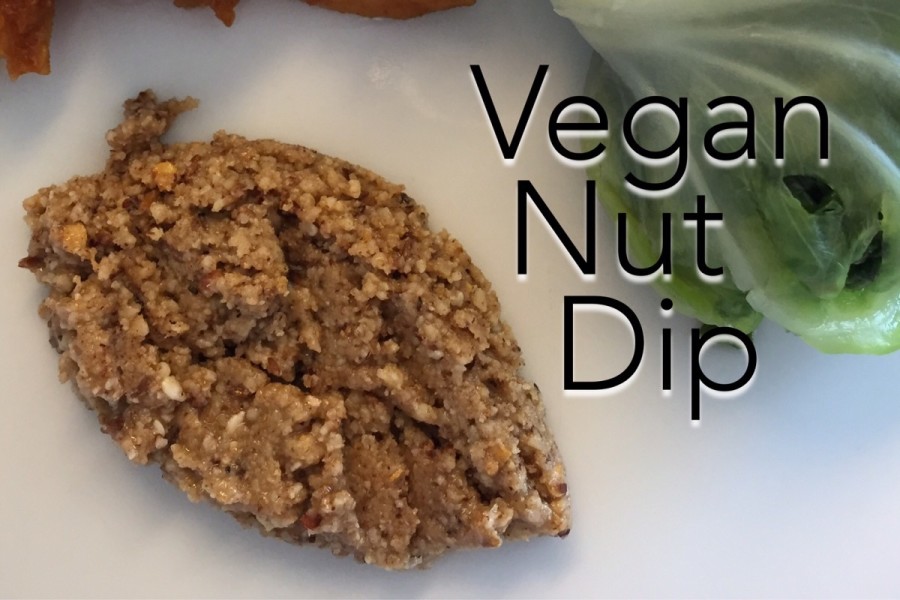

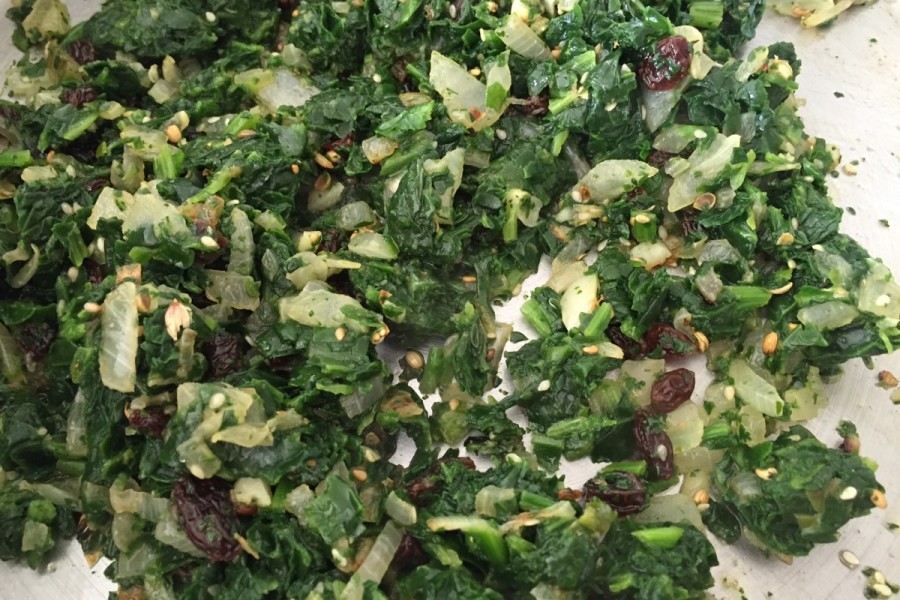
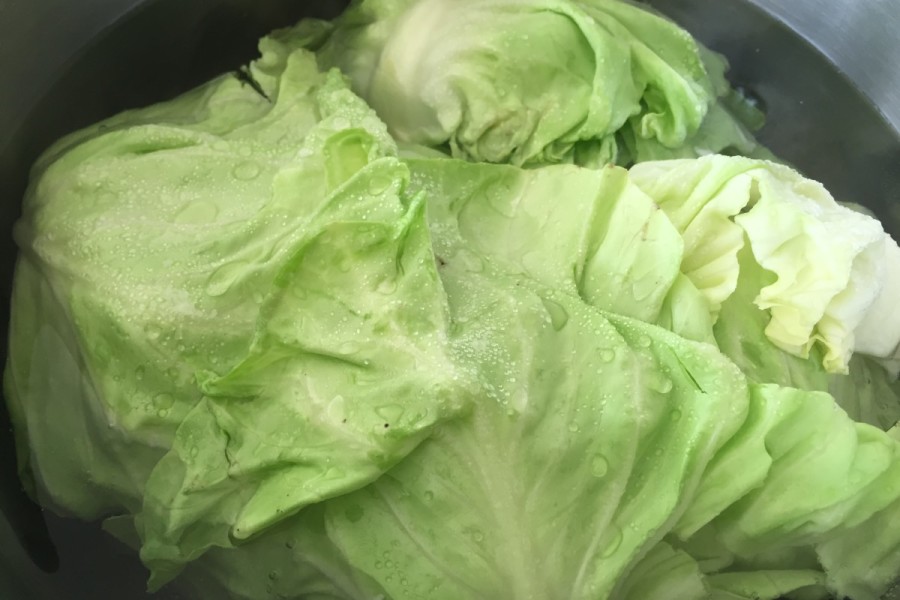
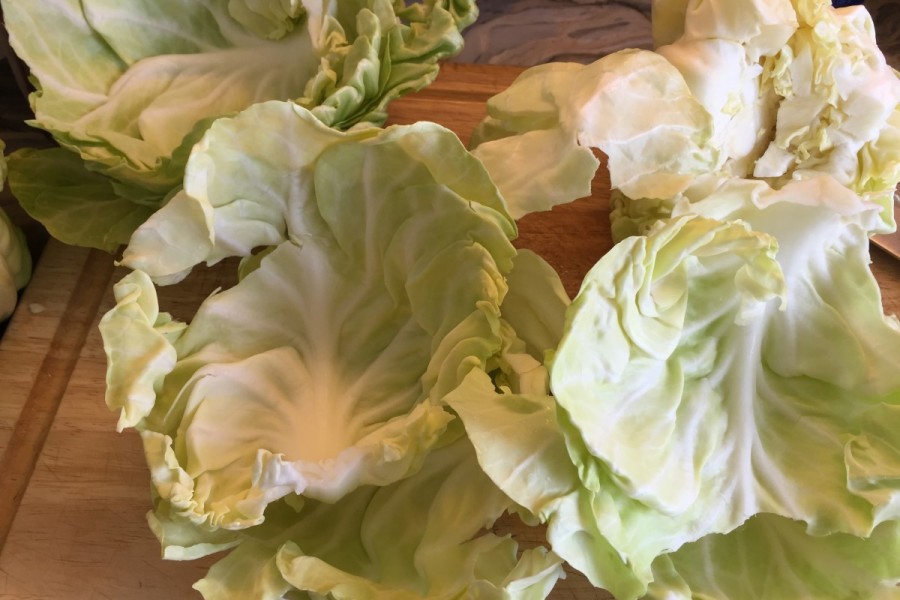
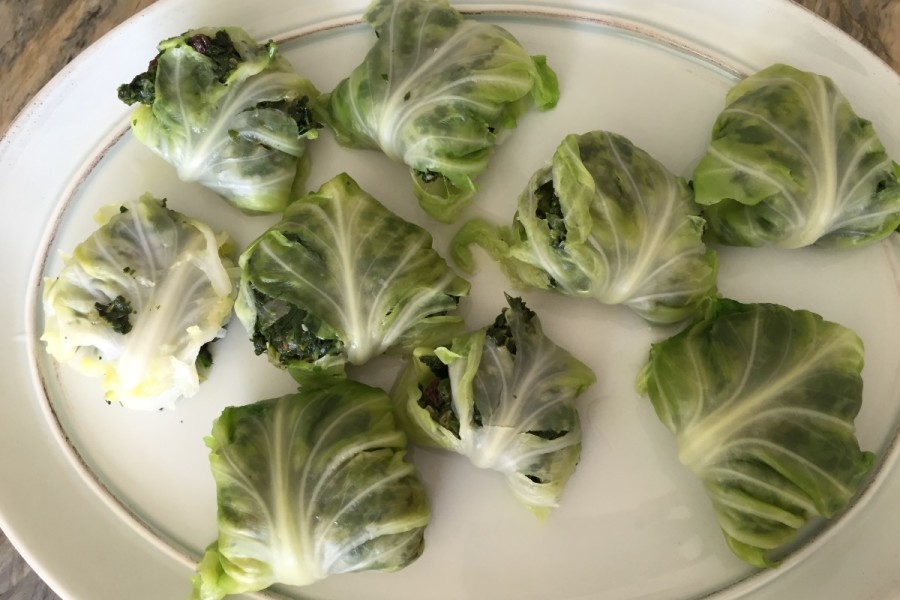
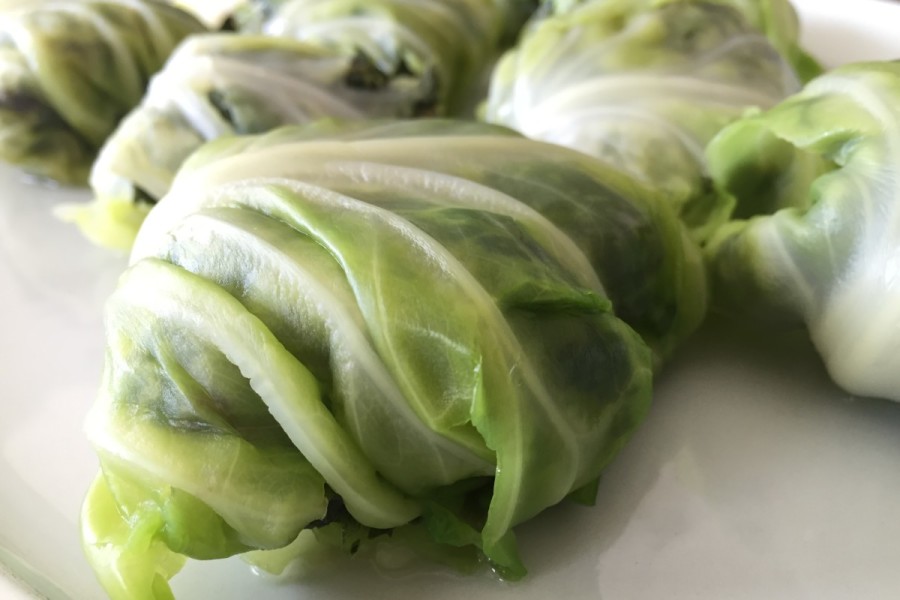
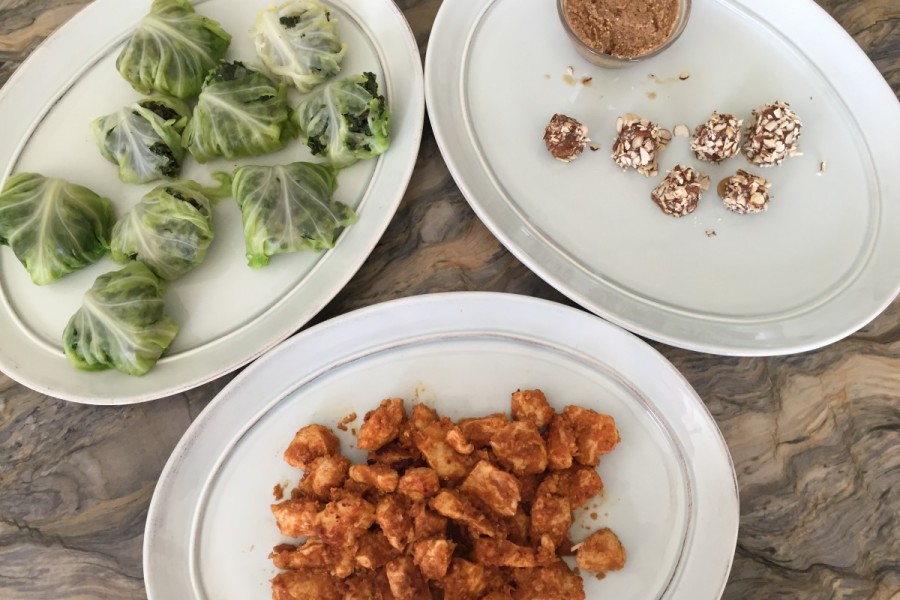
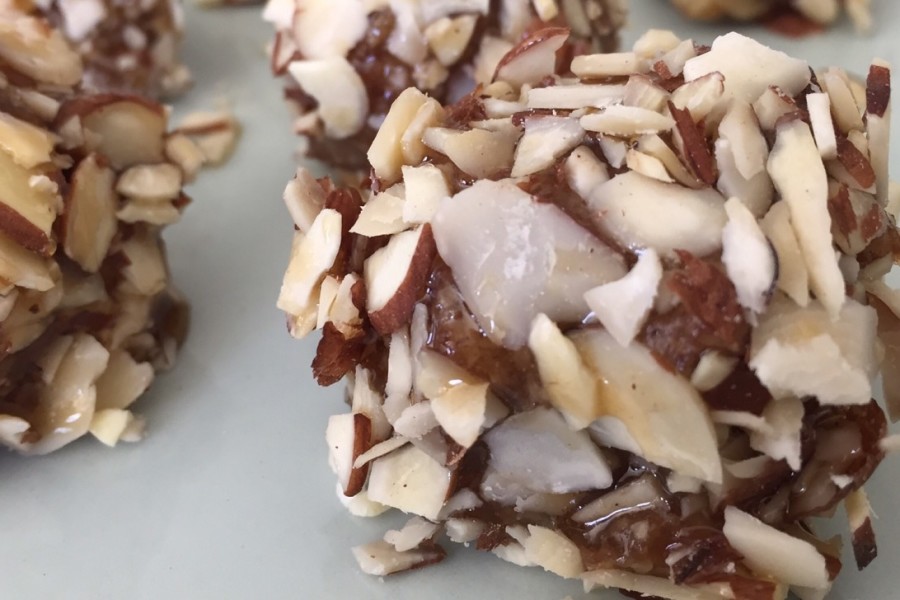
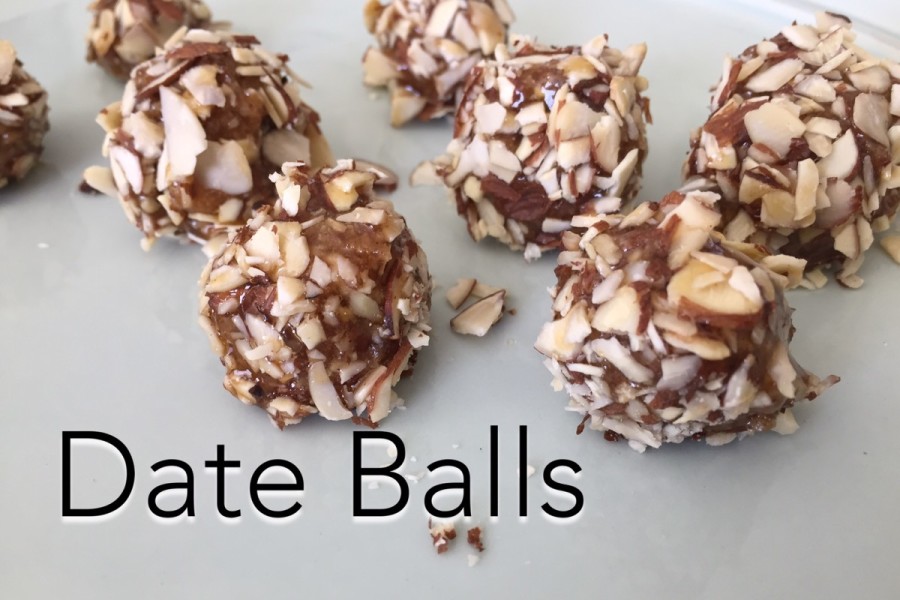
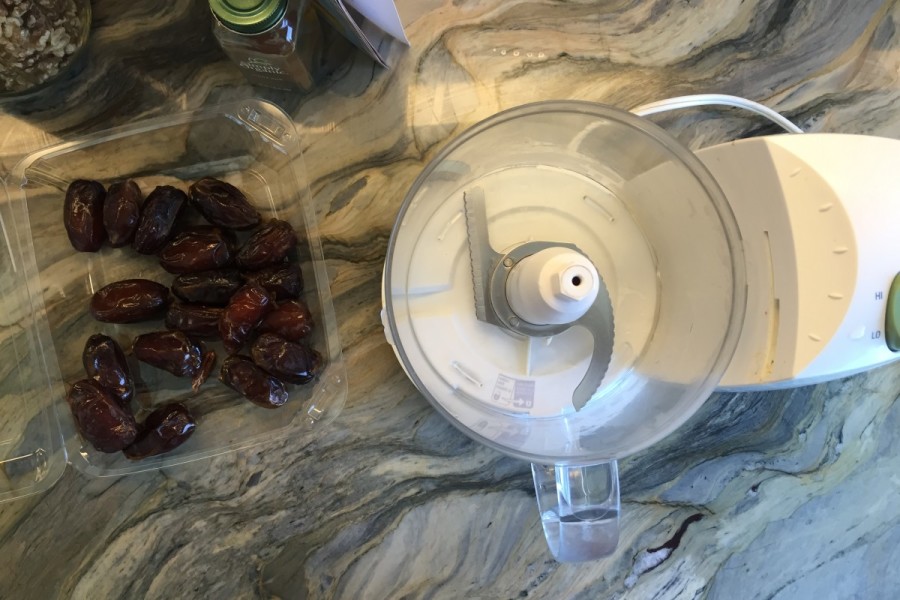
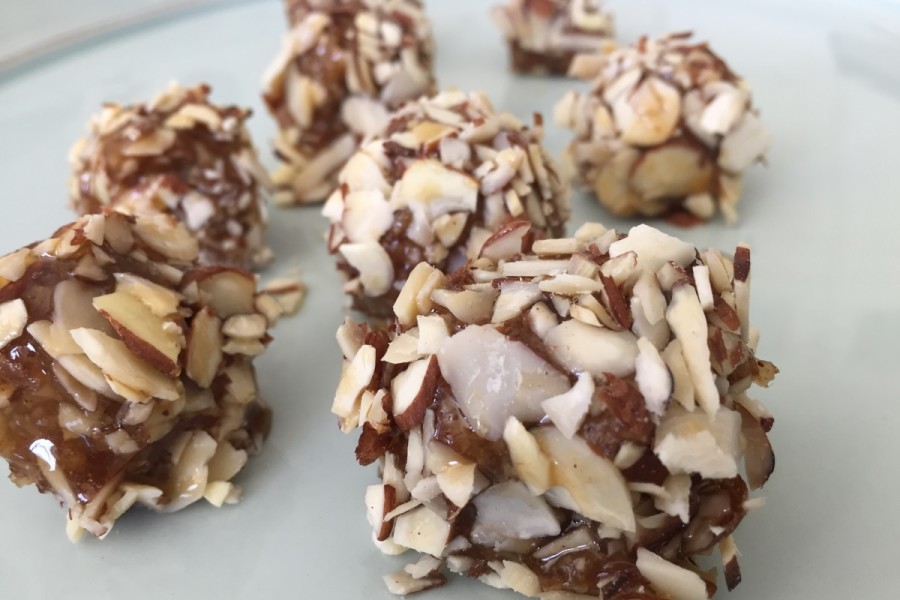
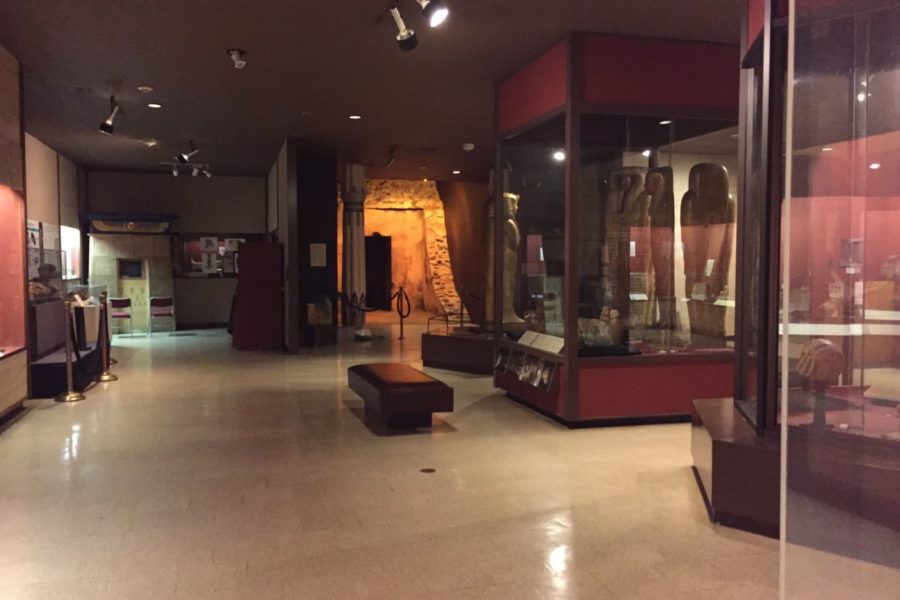
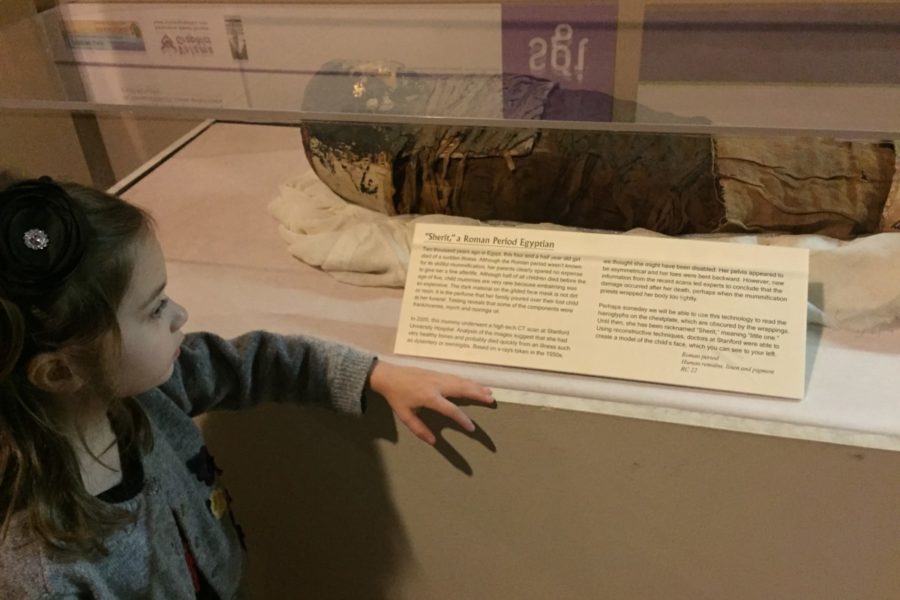
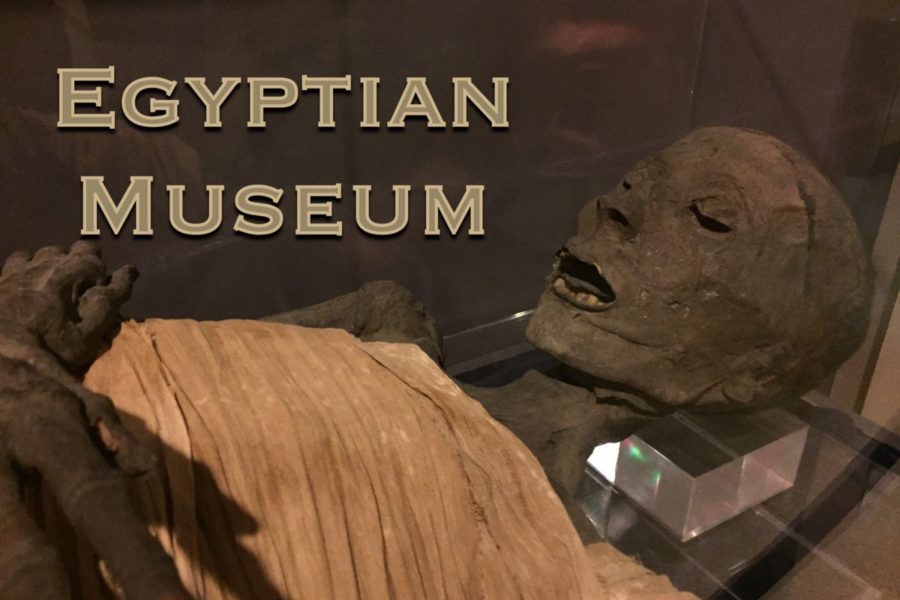
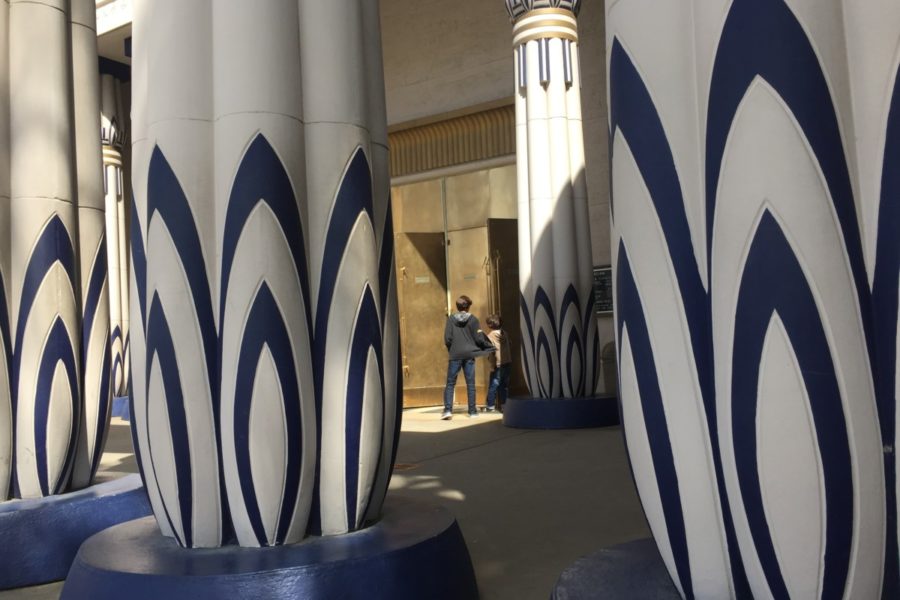
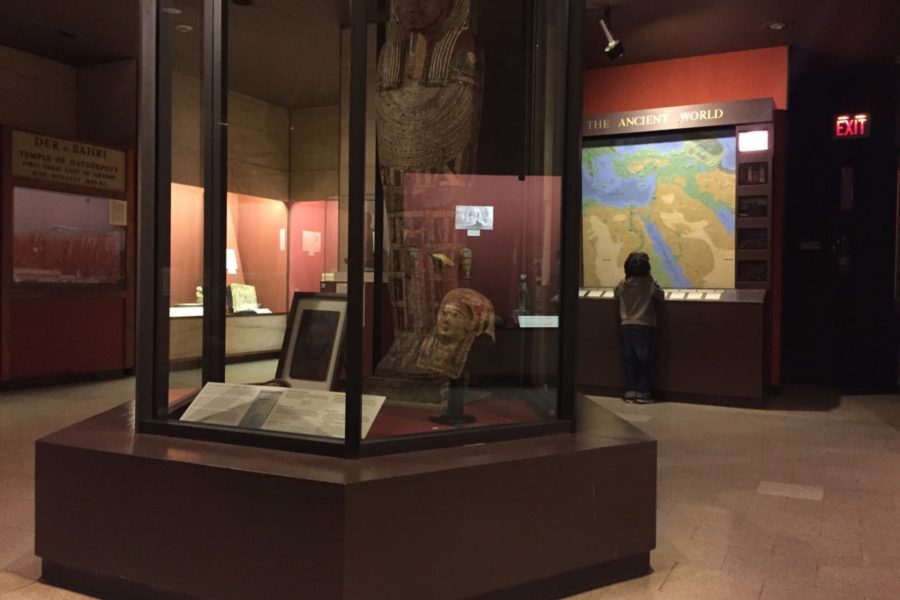
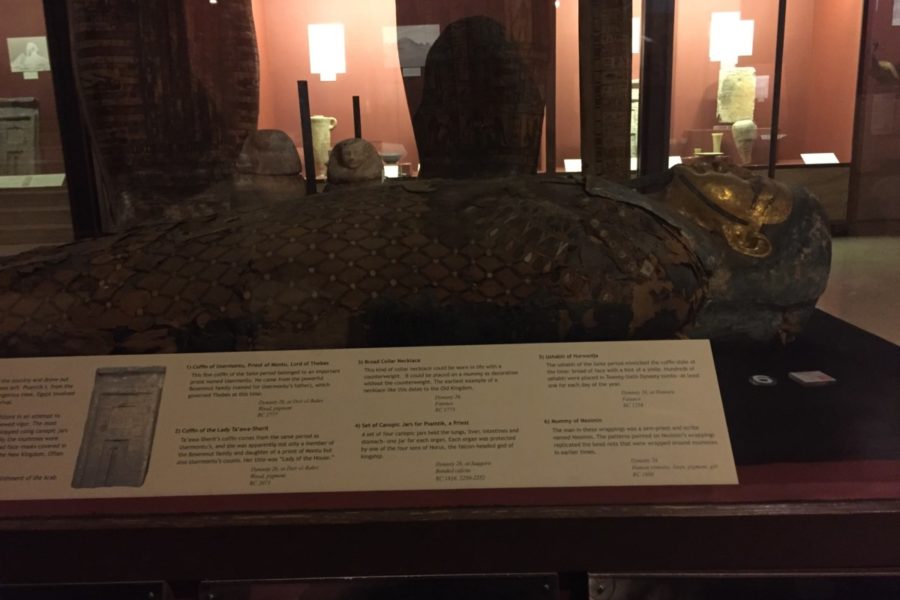
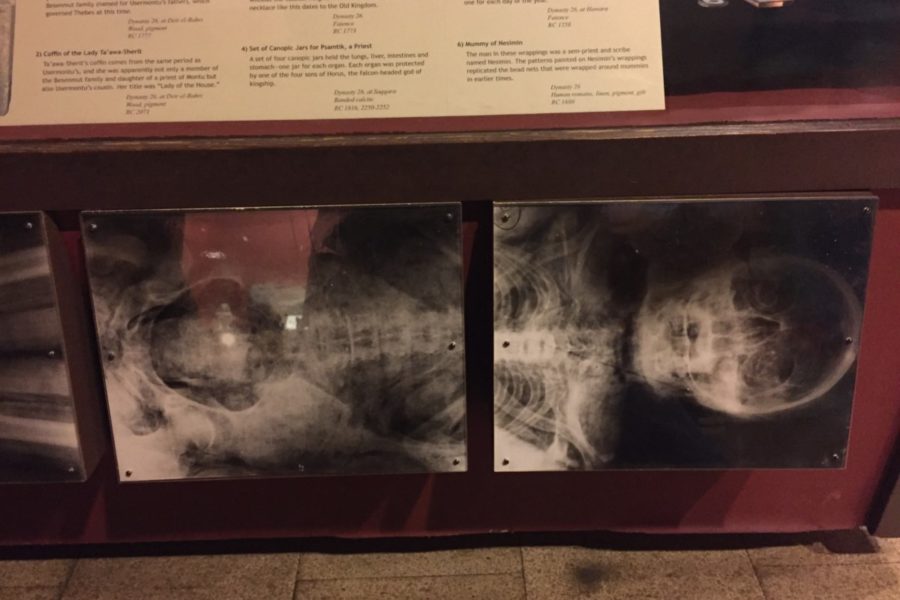

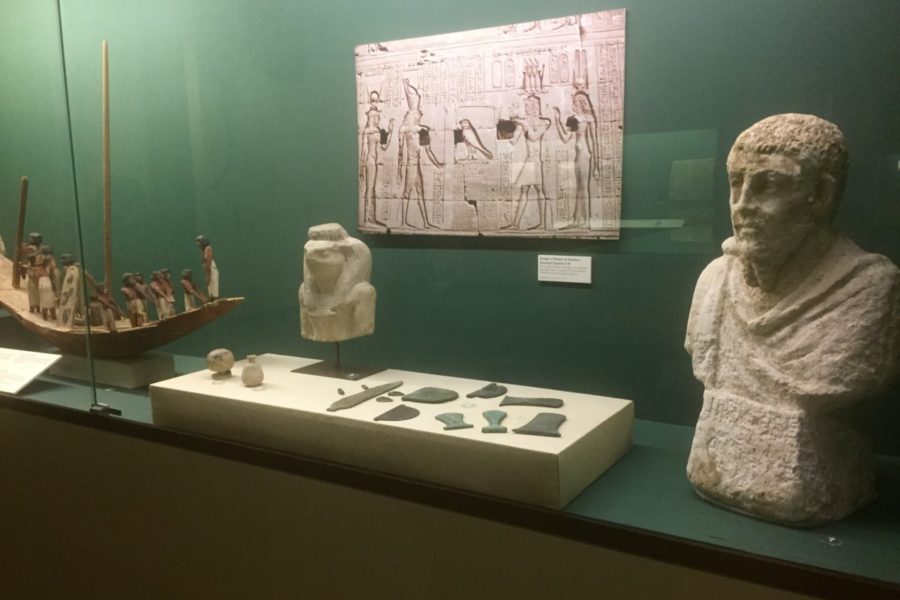
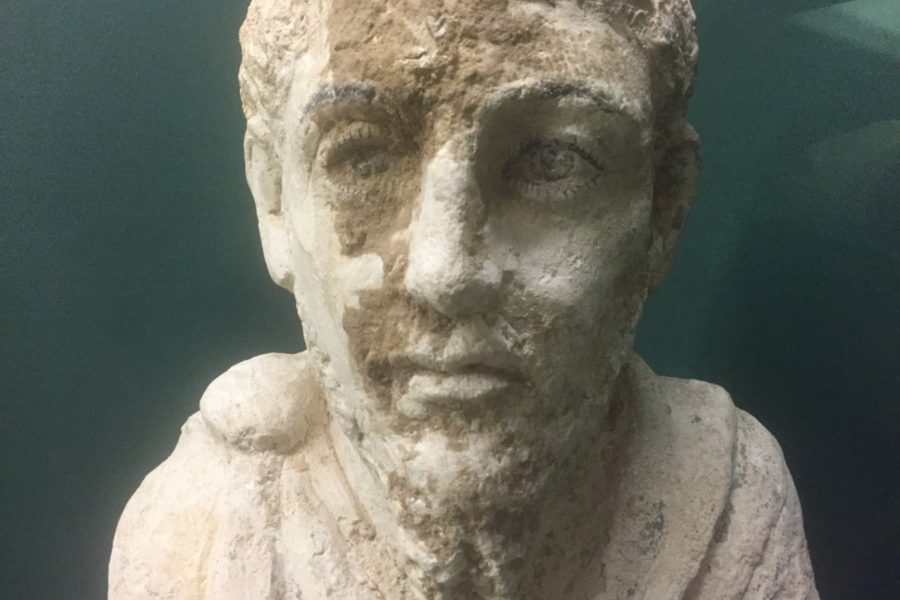
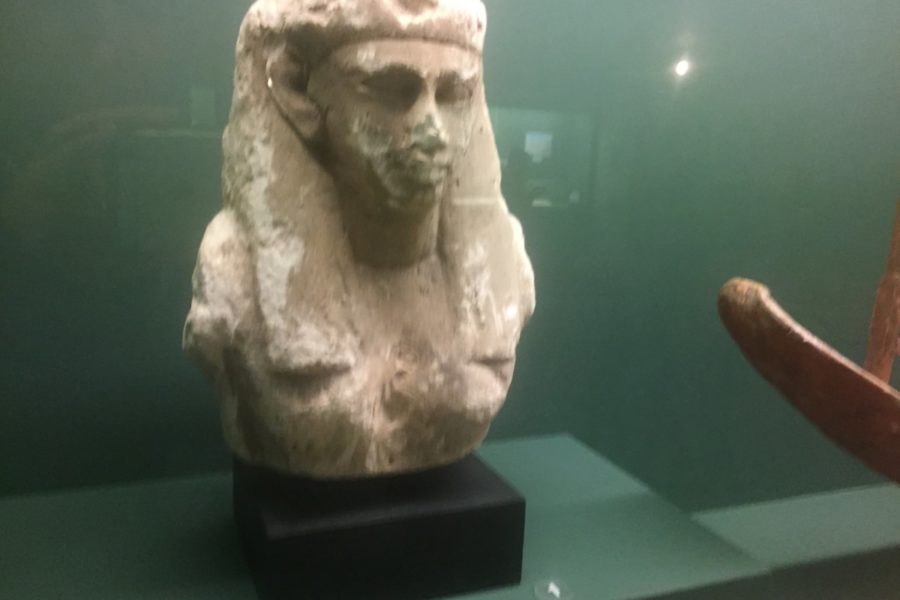
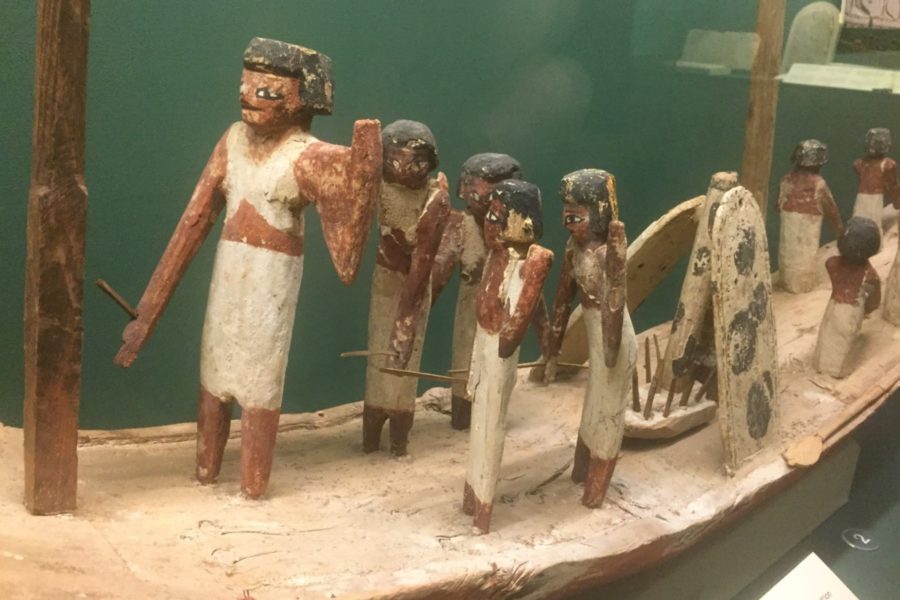
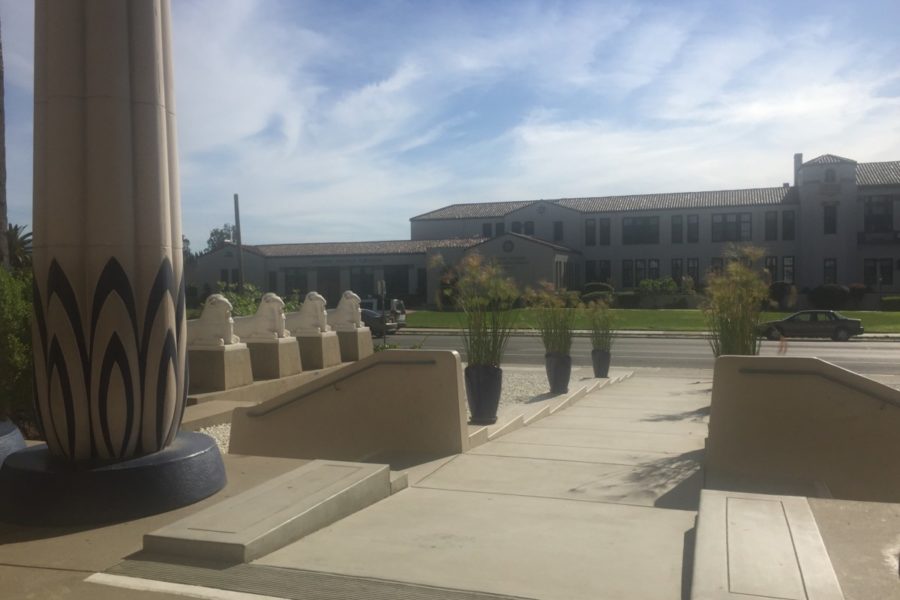
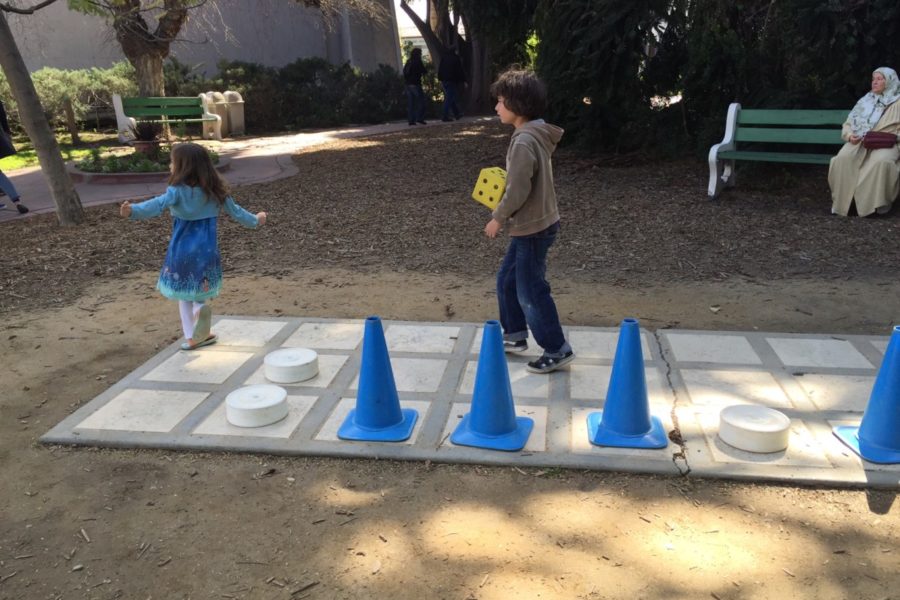
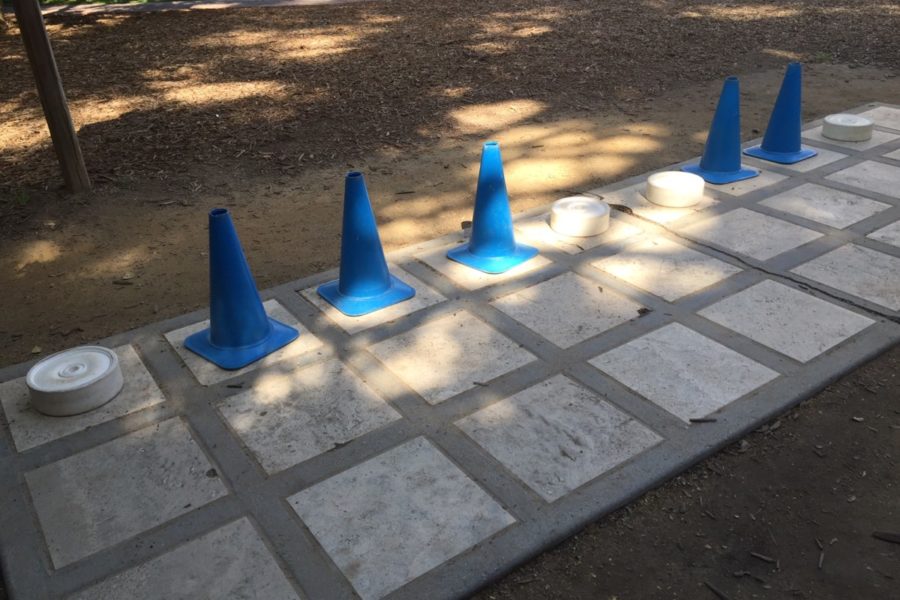
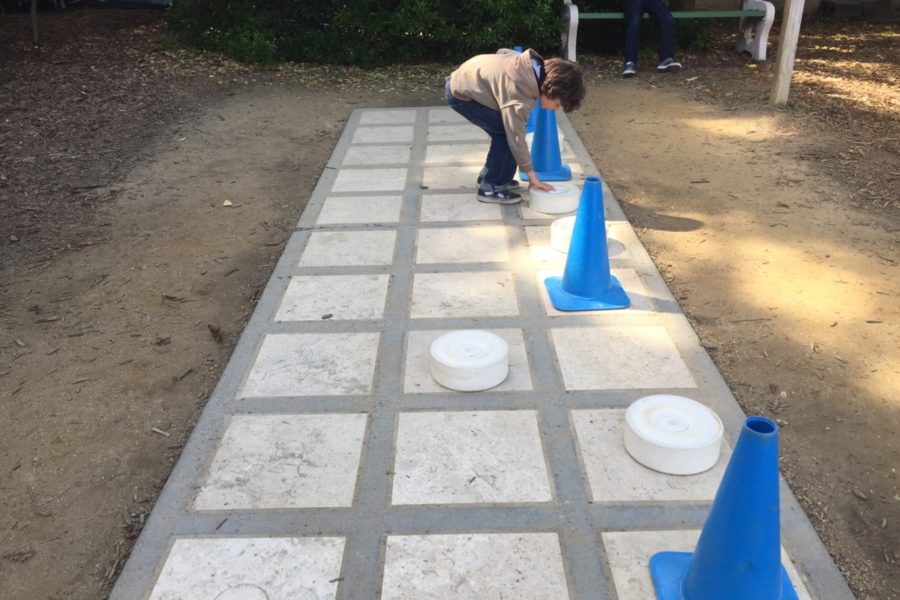
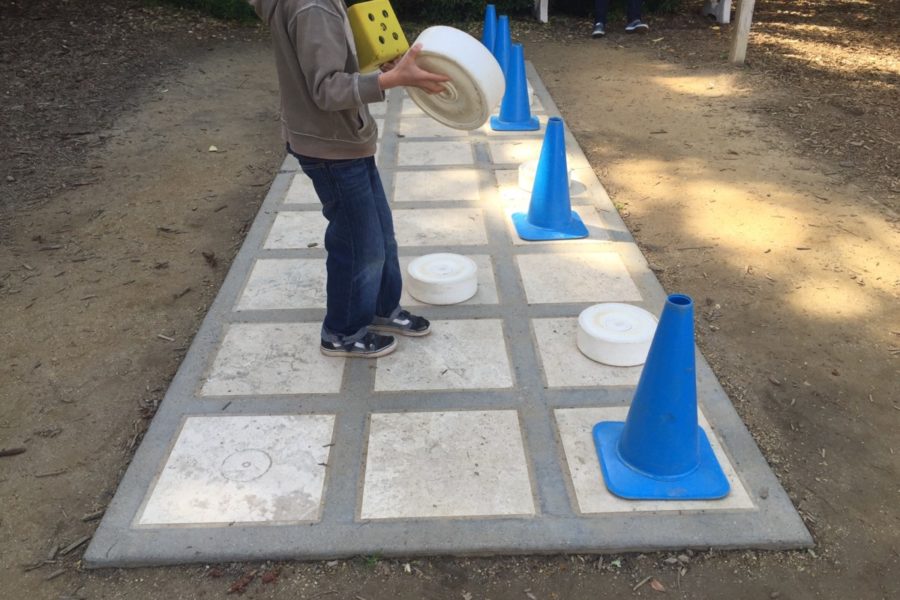
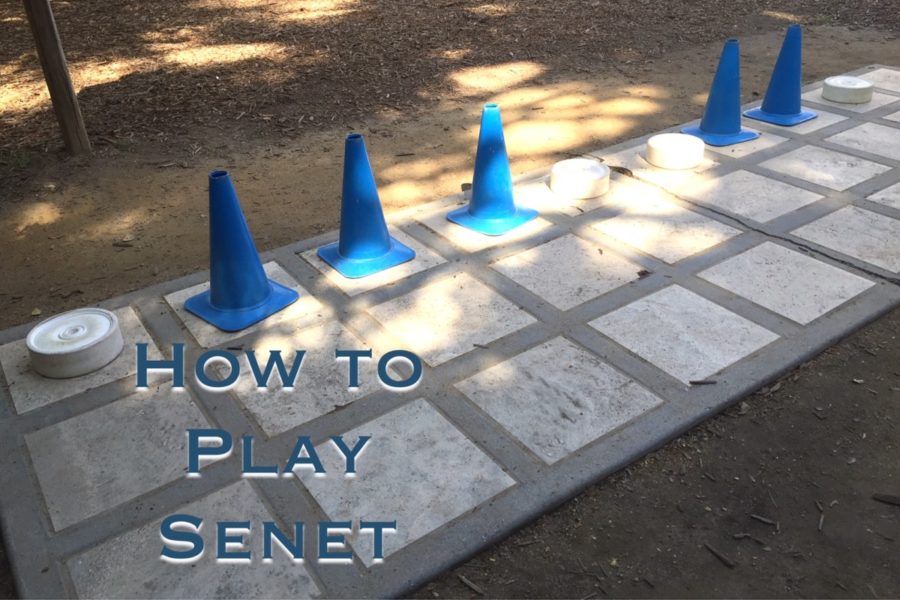
Awesome books ideas! Were doing ancient egypt so these ideas will come in handy in shā’ Allāh! 🙂
I was just wondering since you do this unit study for kids of different ages, is it something you will do again when the younger child is older? I’m just curious if the comprehension and what is retained is the same, and also how you go about deciding what unit studies to do…I’m very interested in doing unit studies but at the same time feel very overwhelmed by the planning of them.